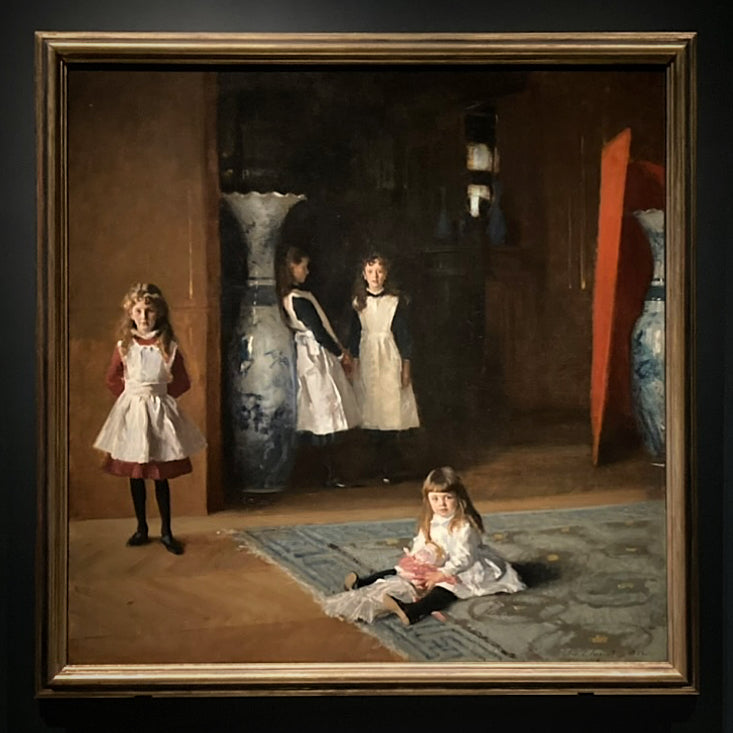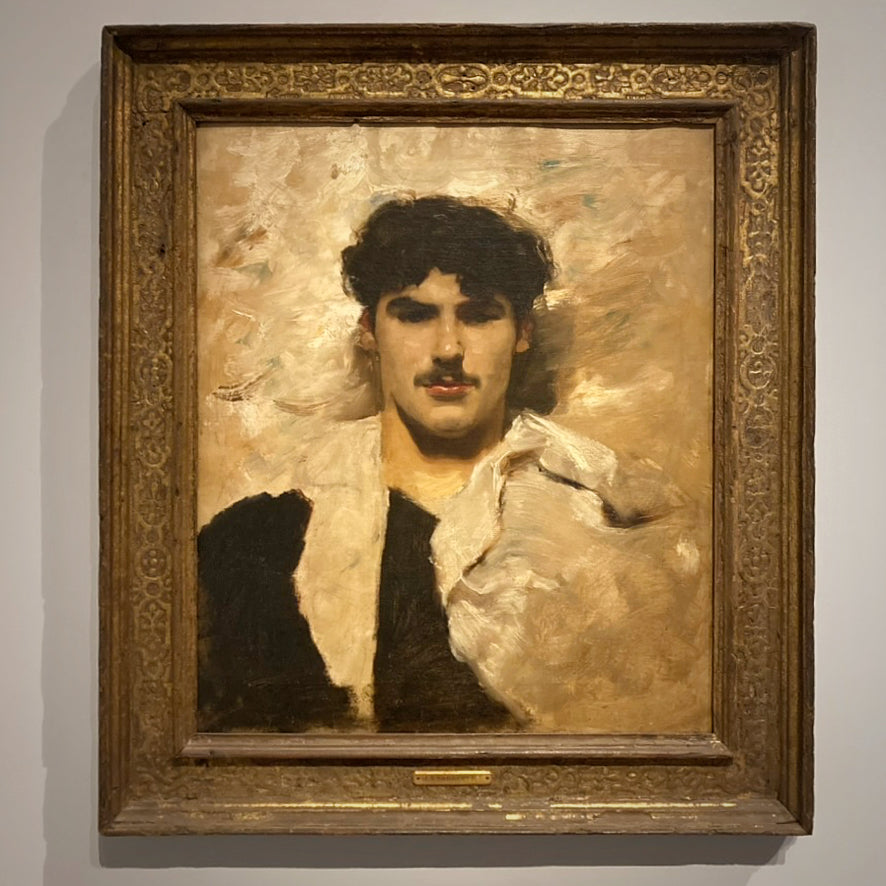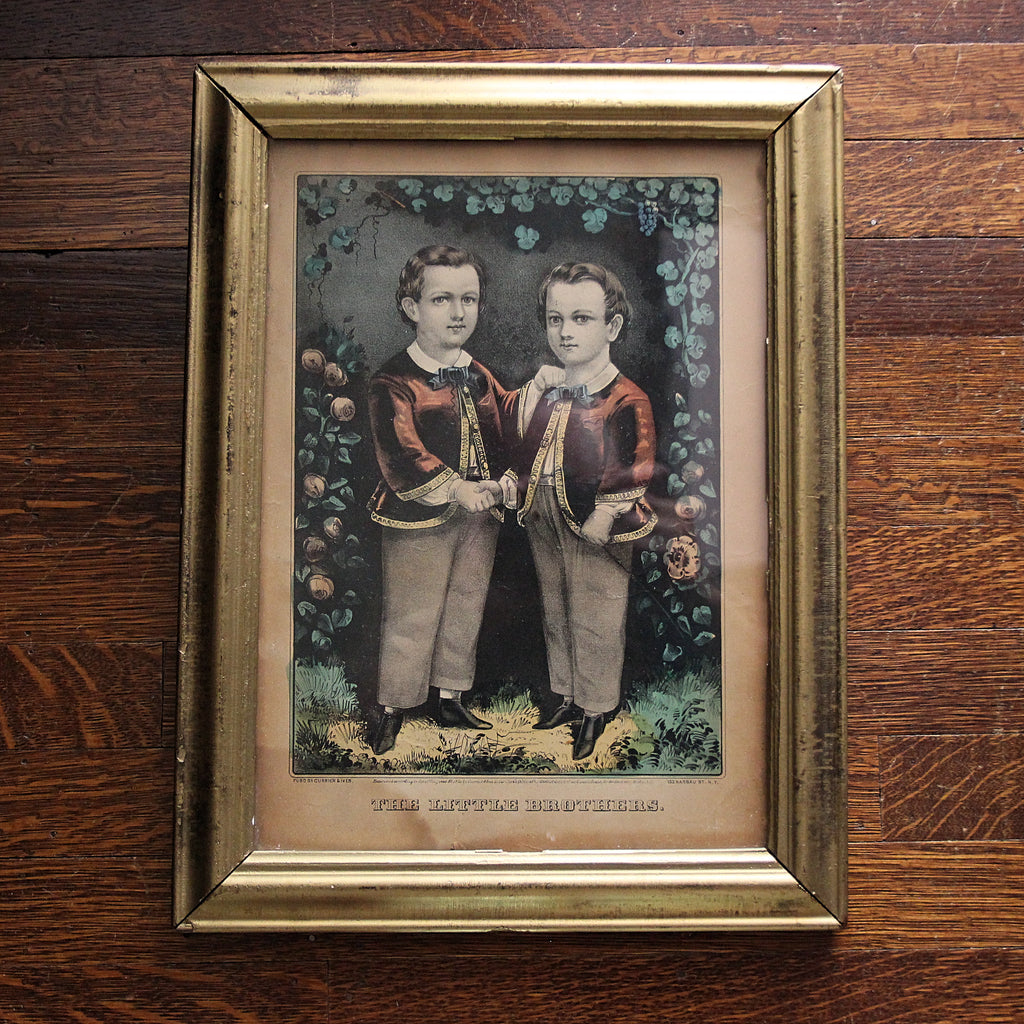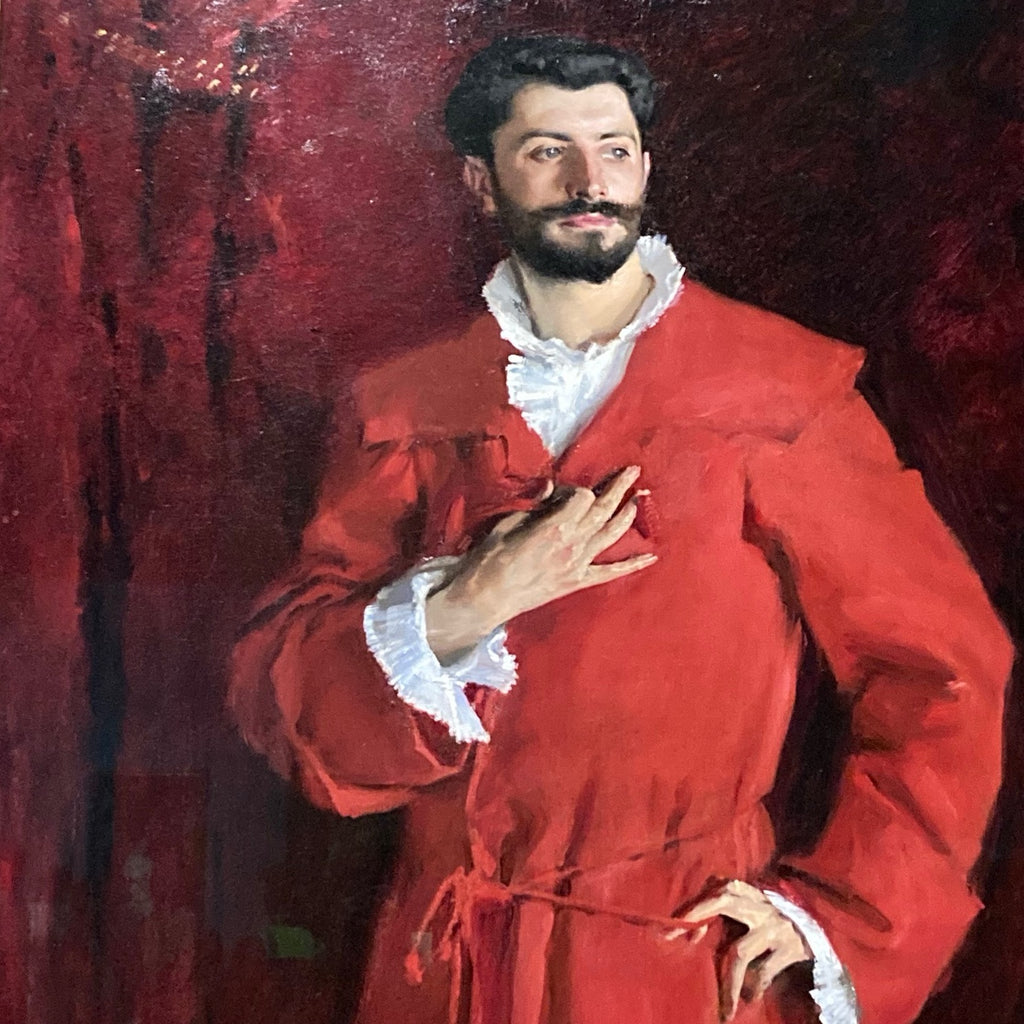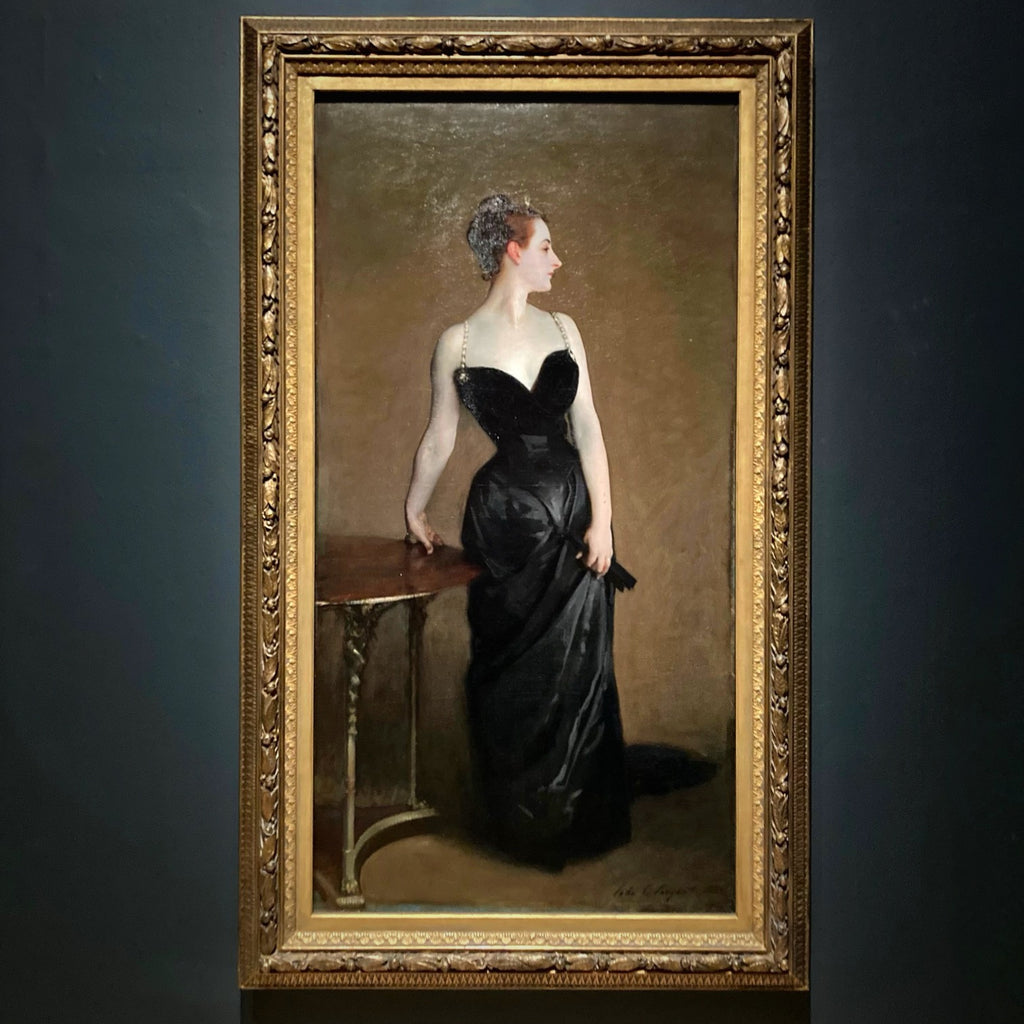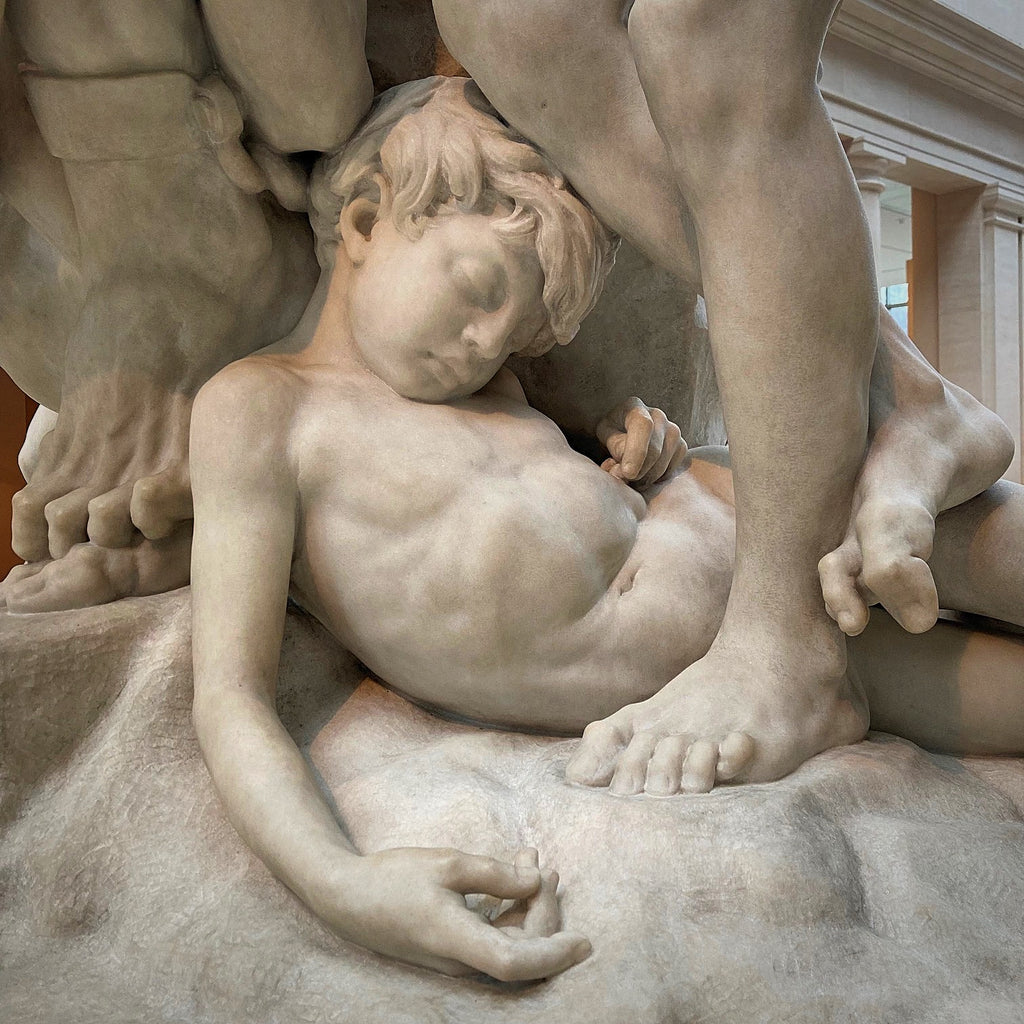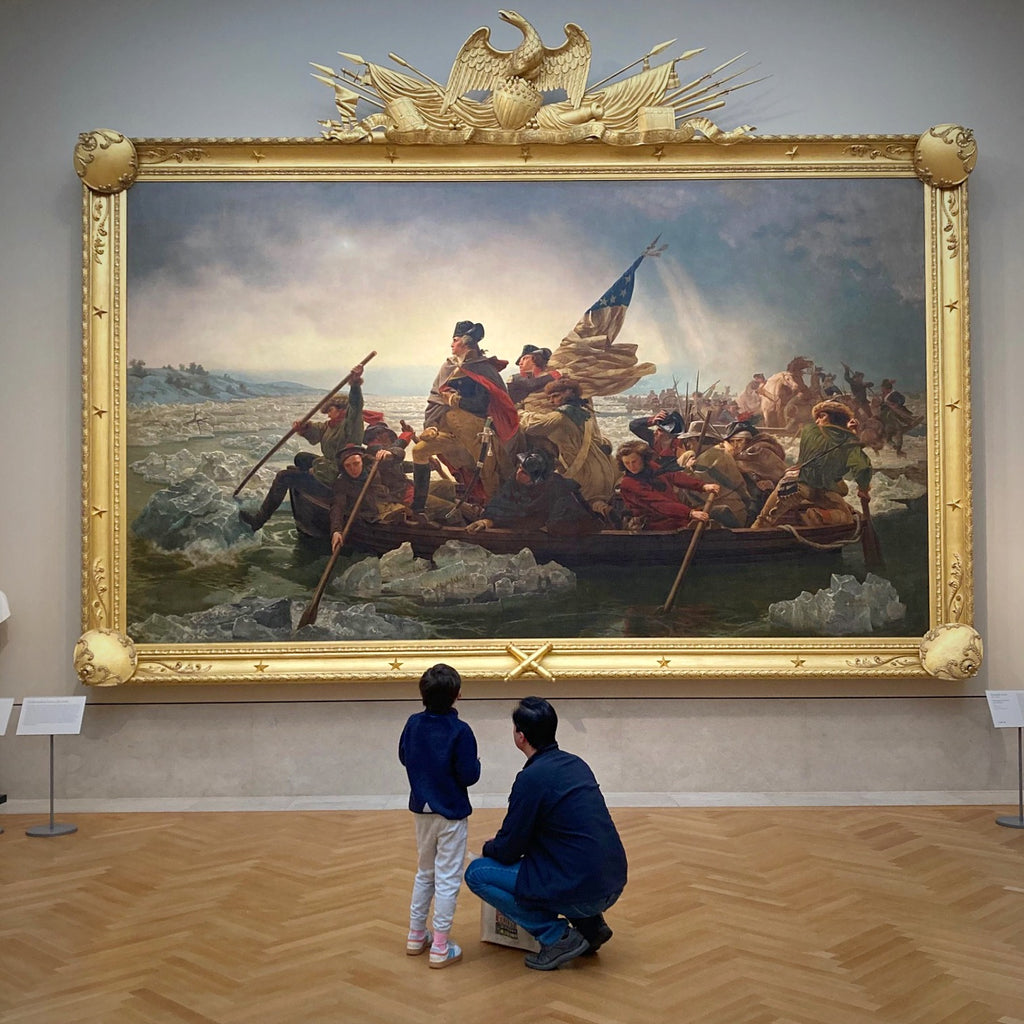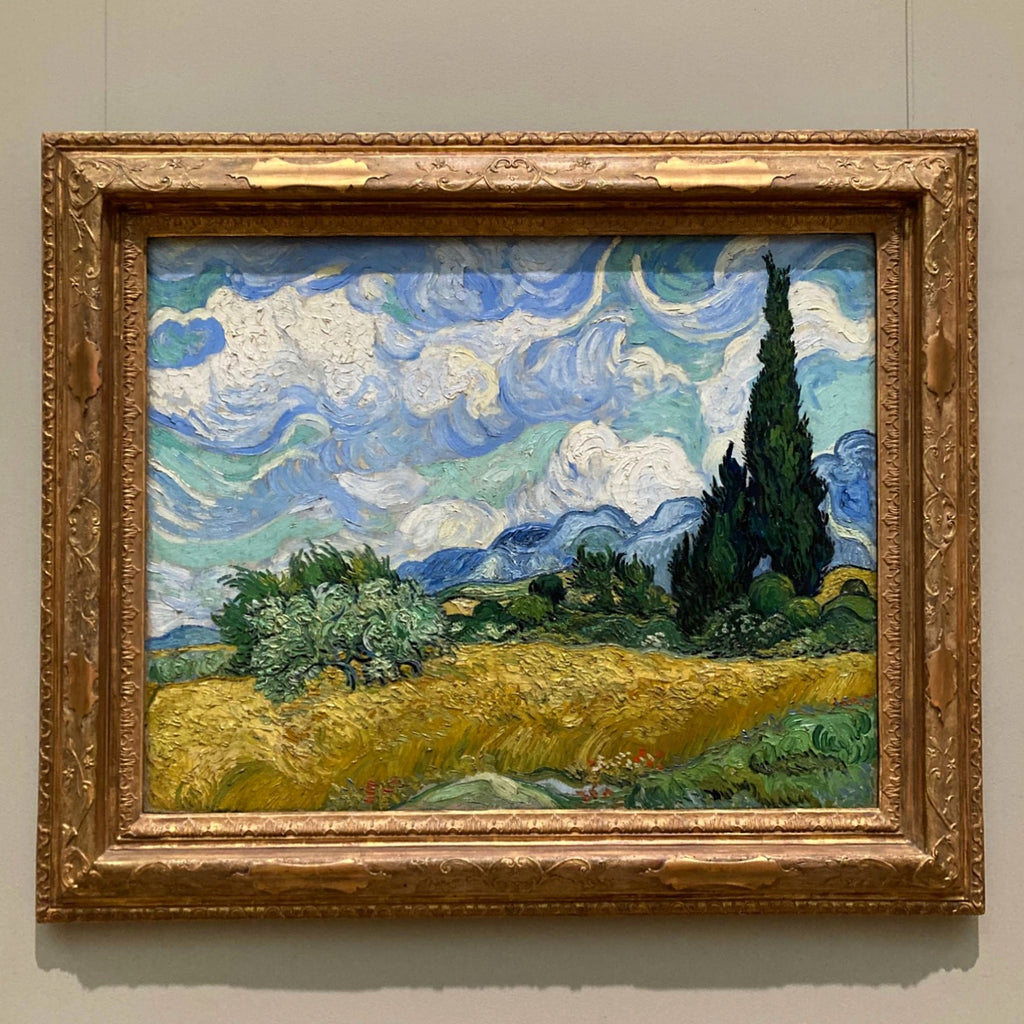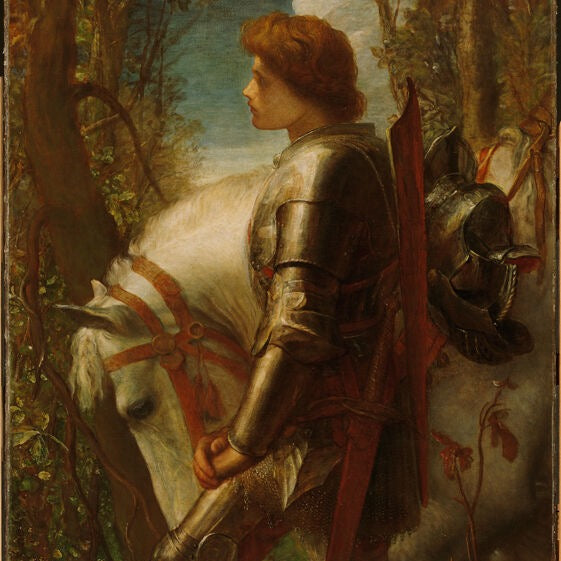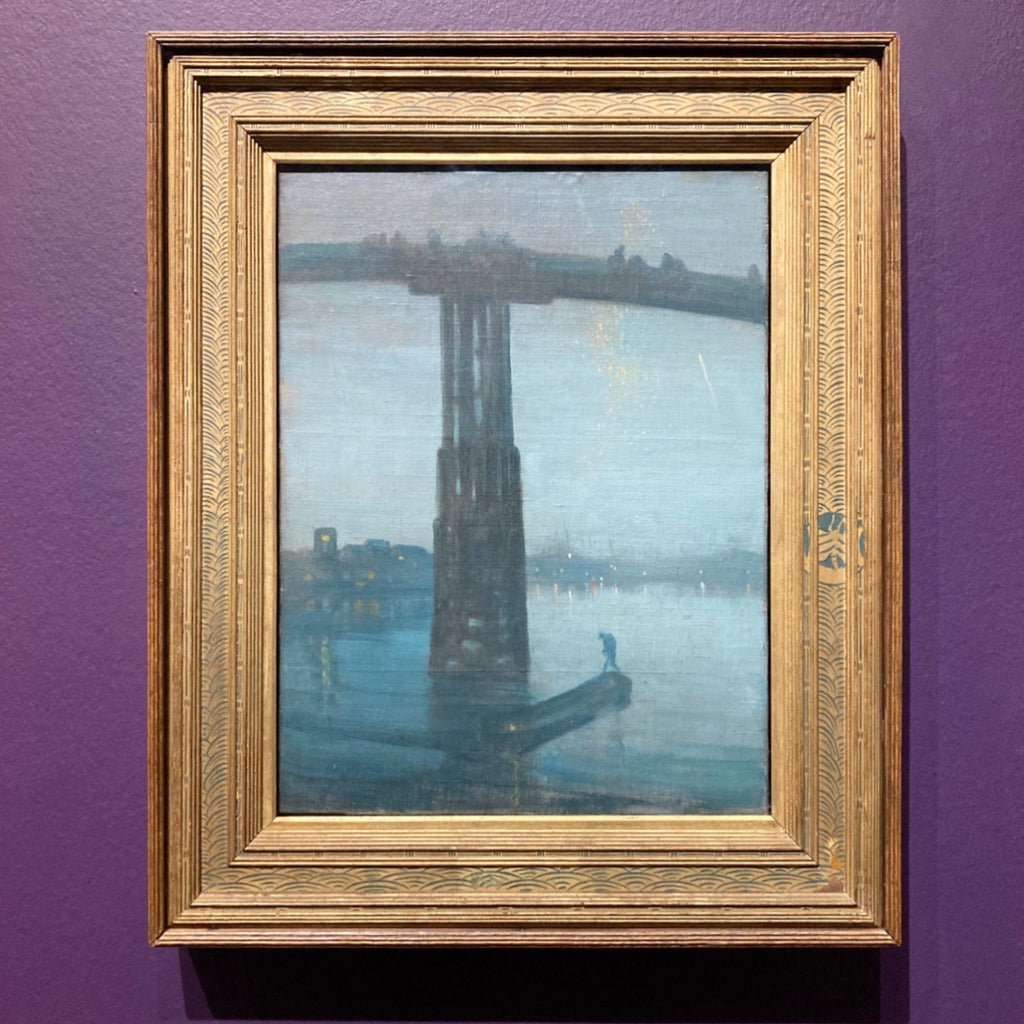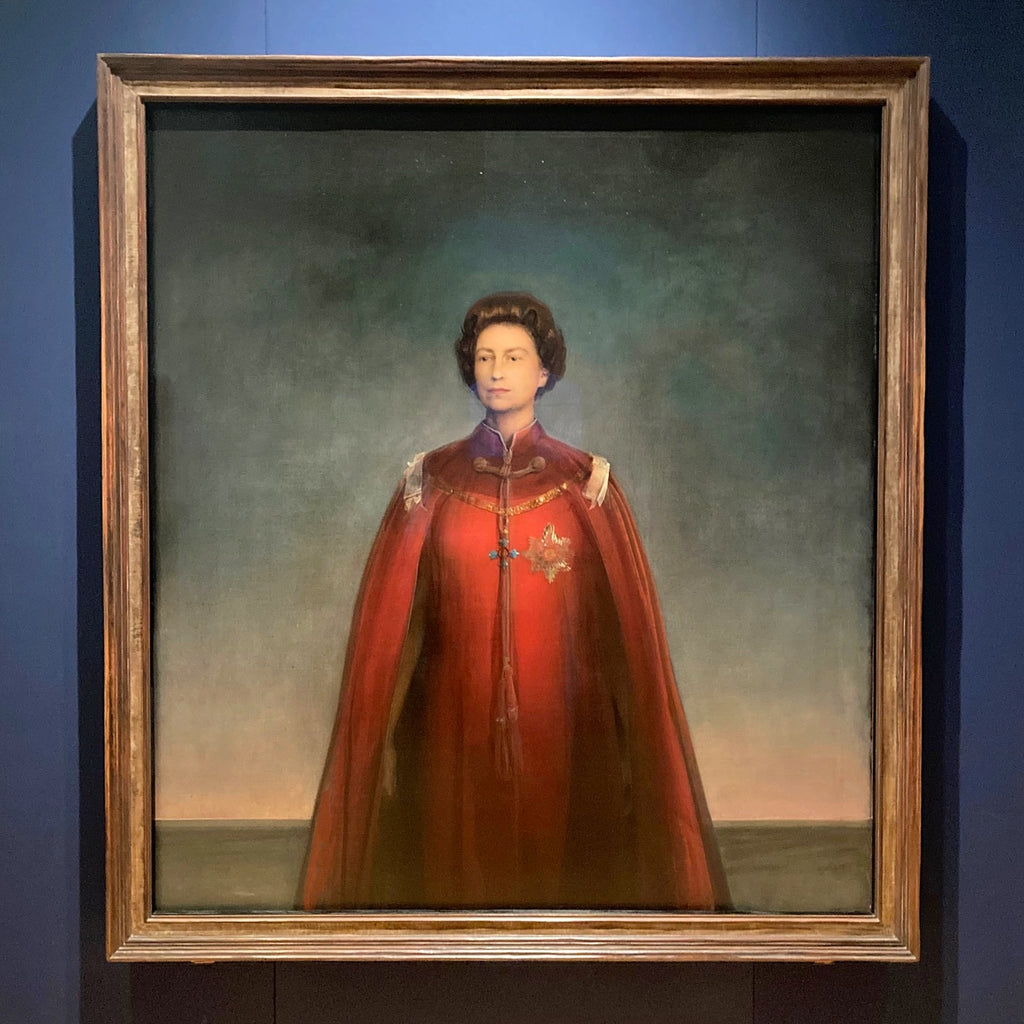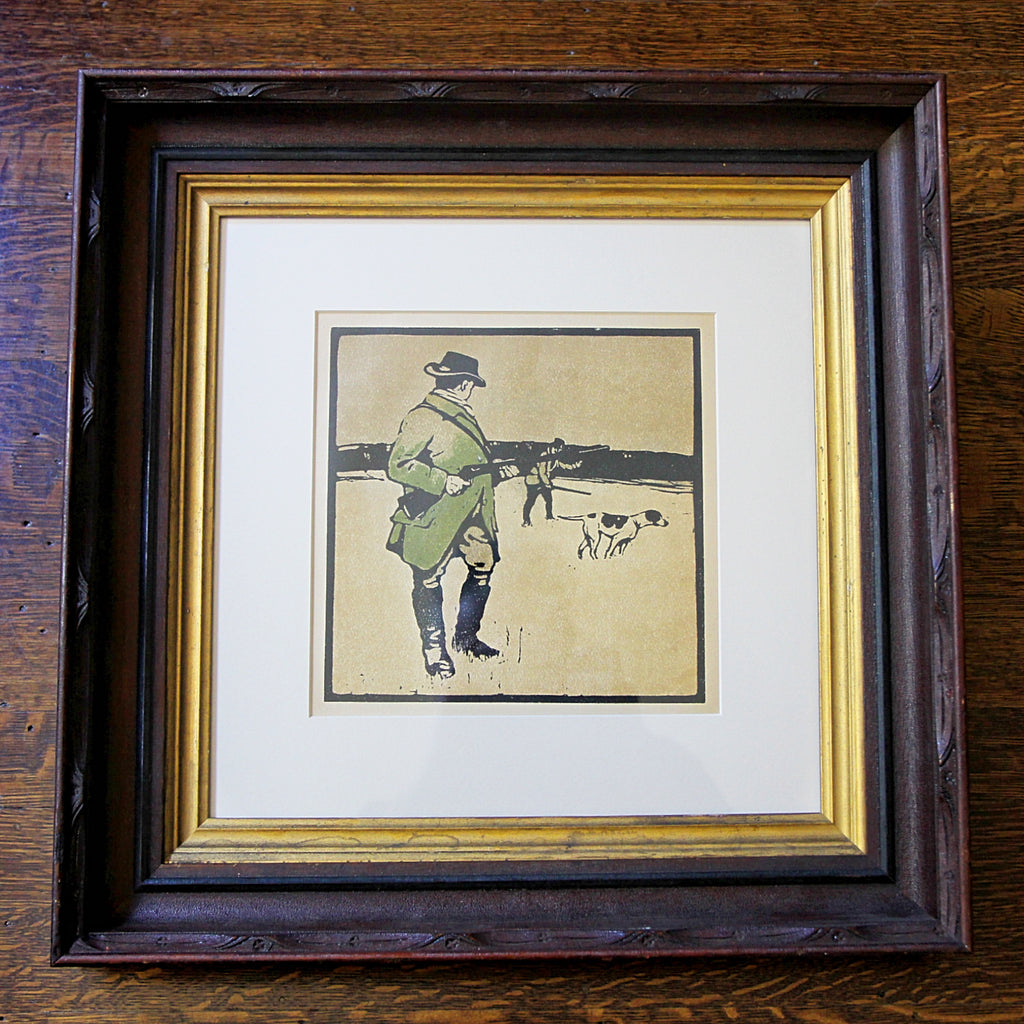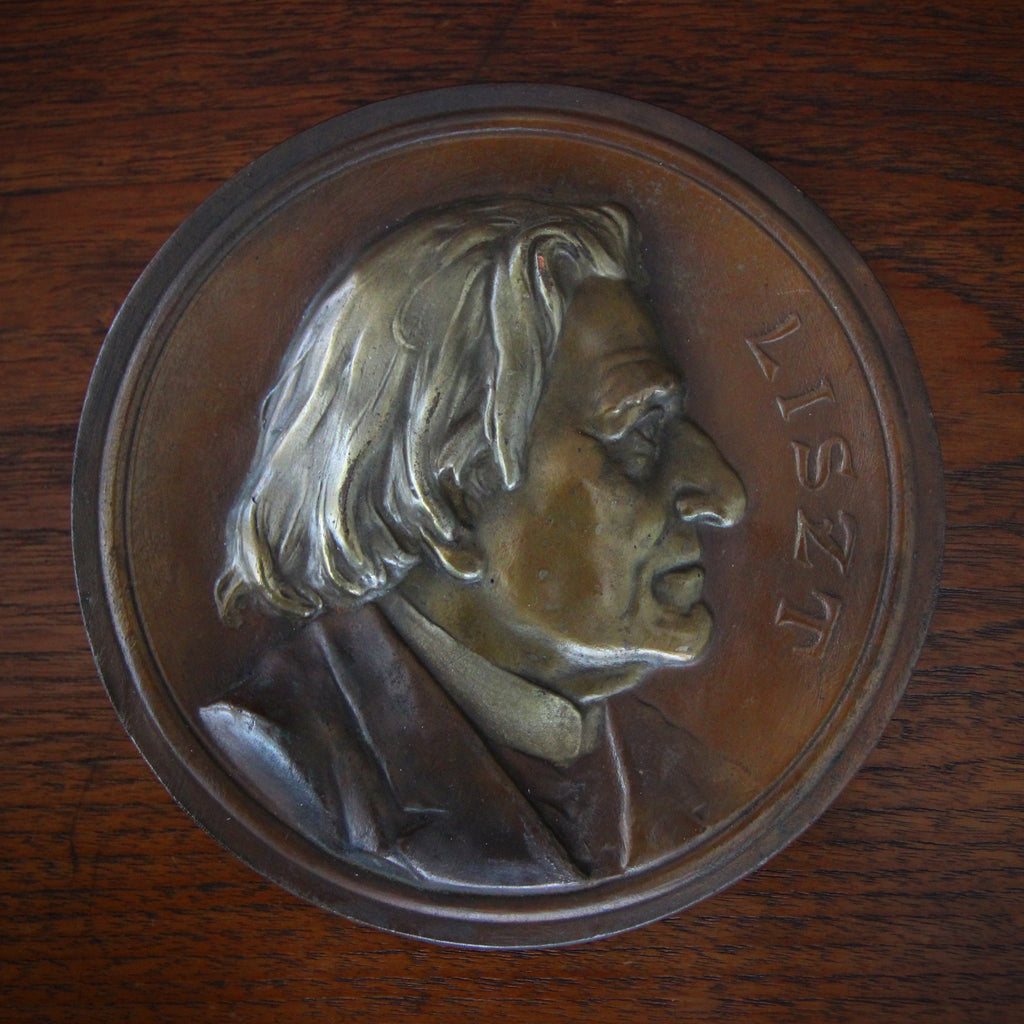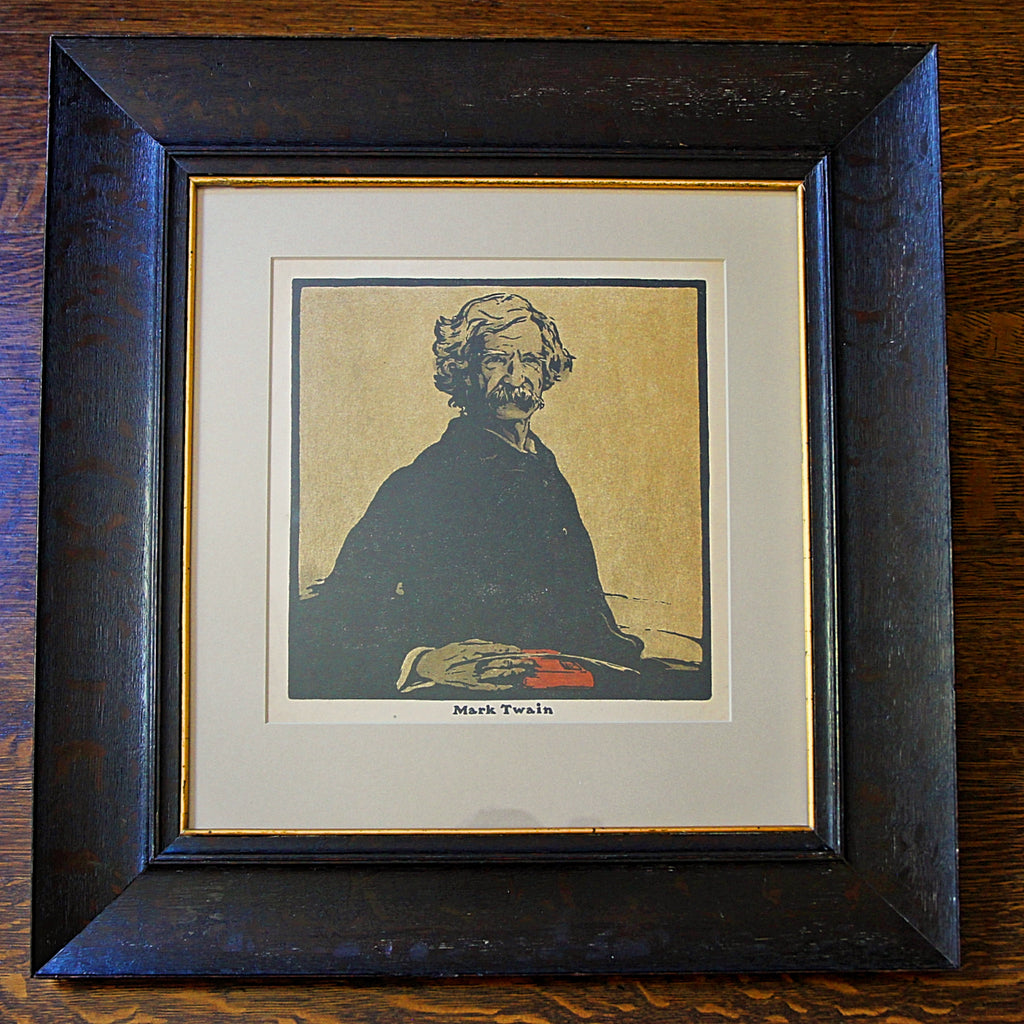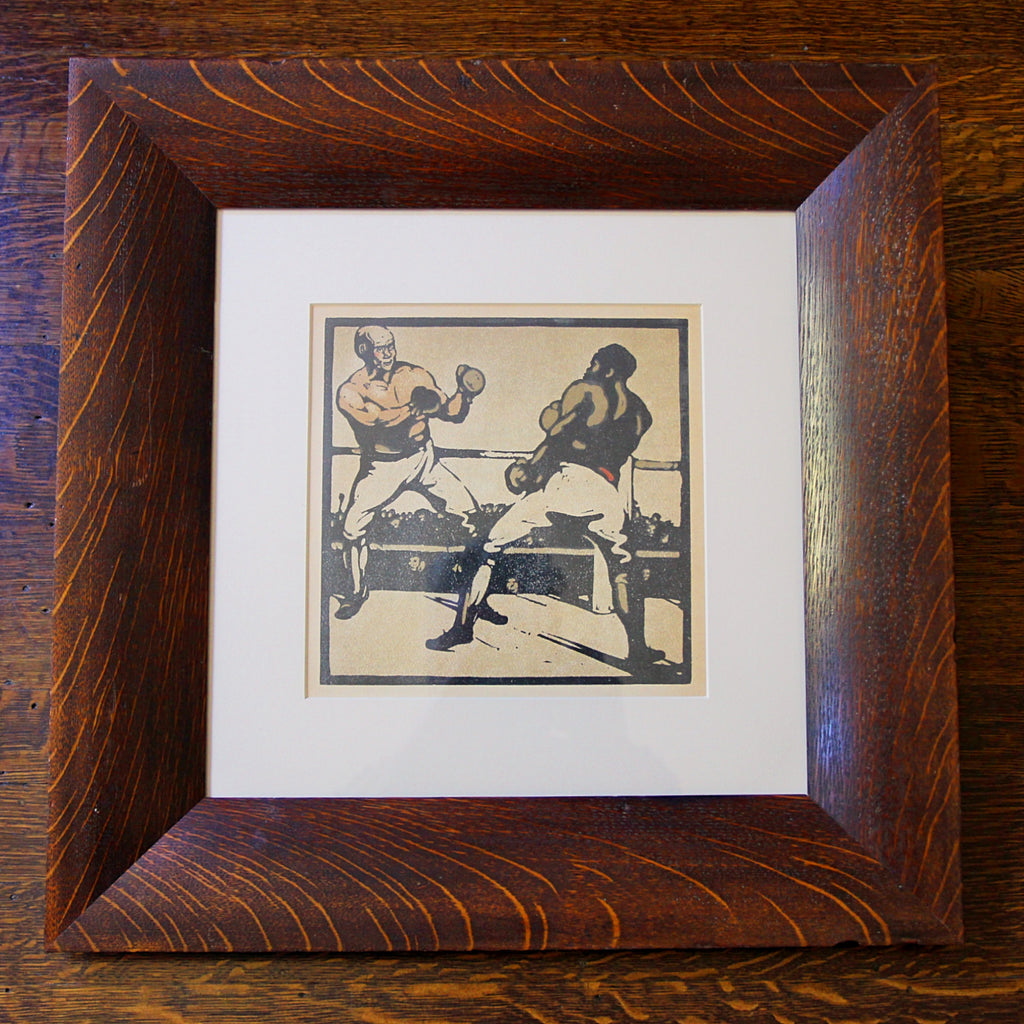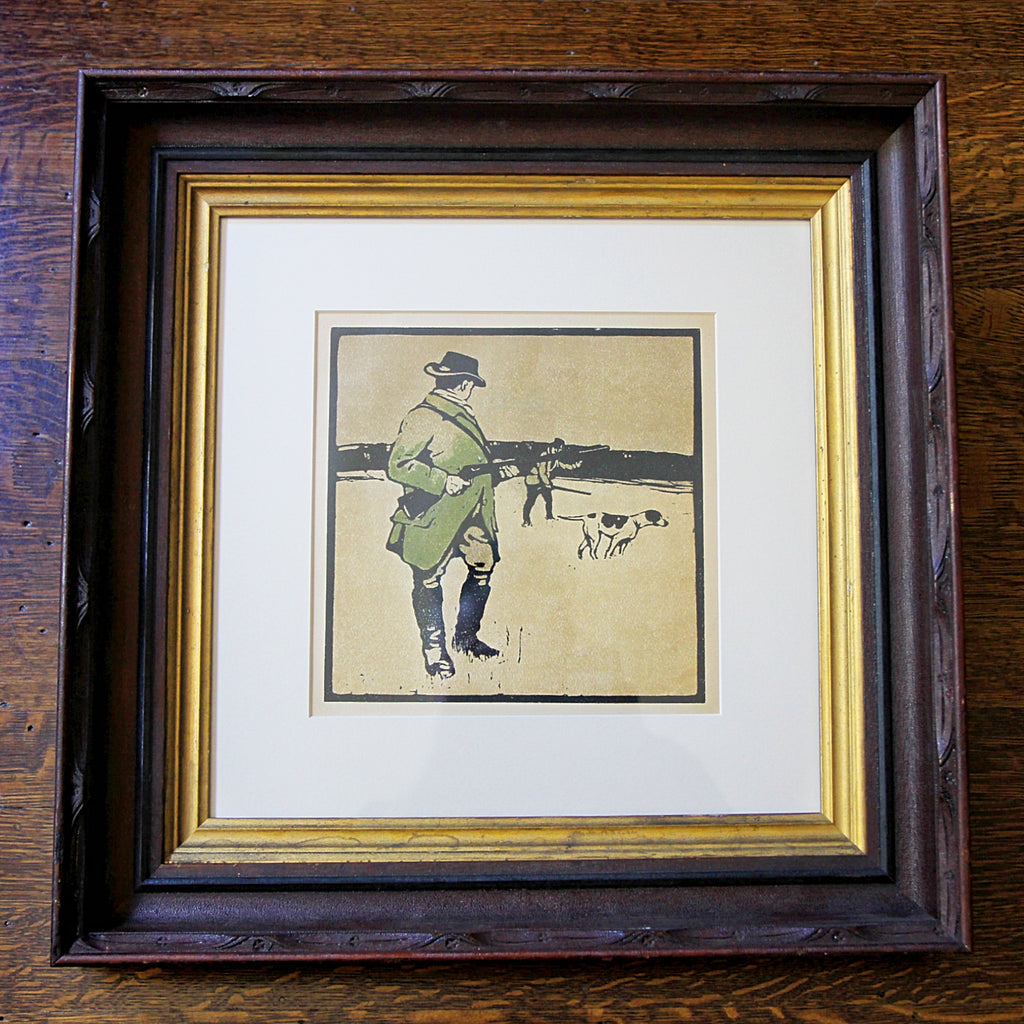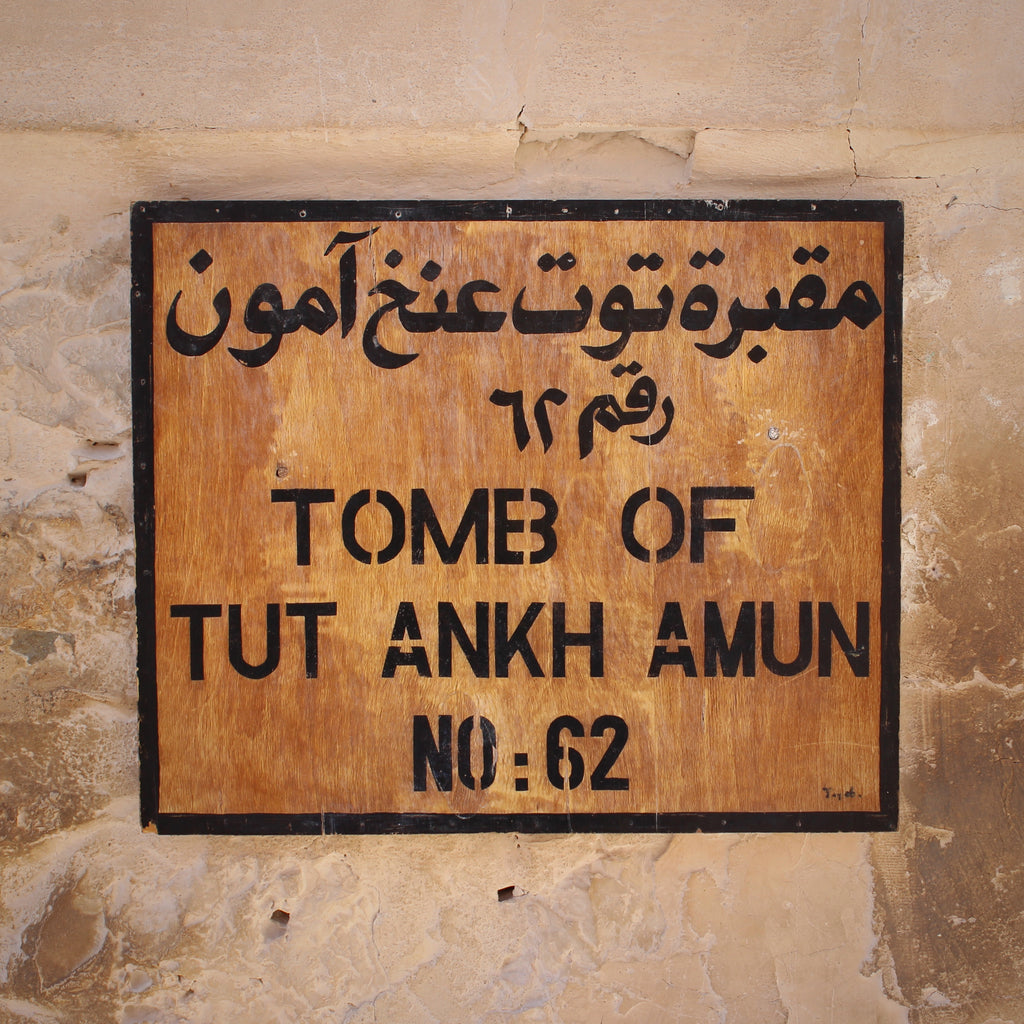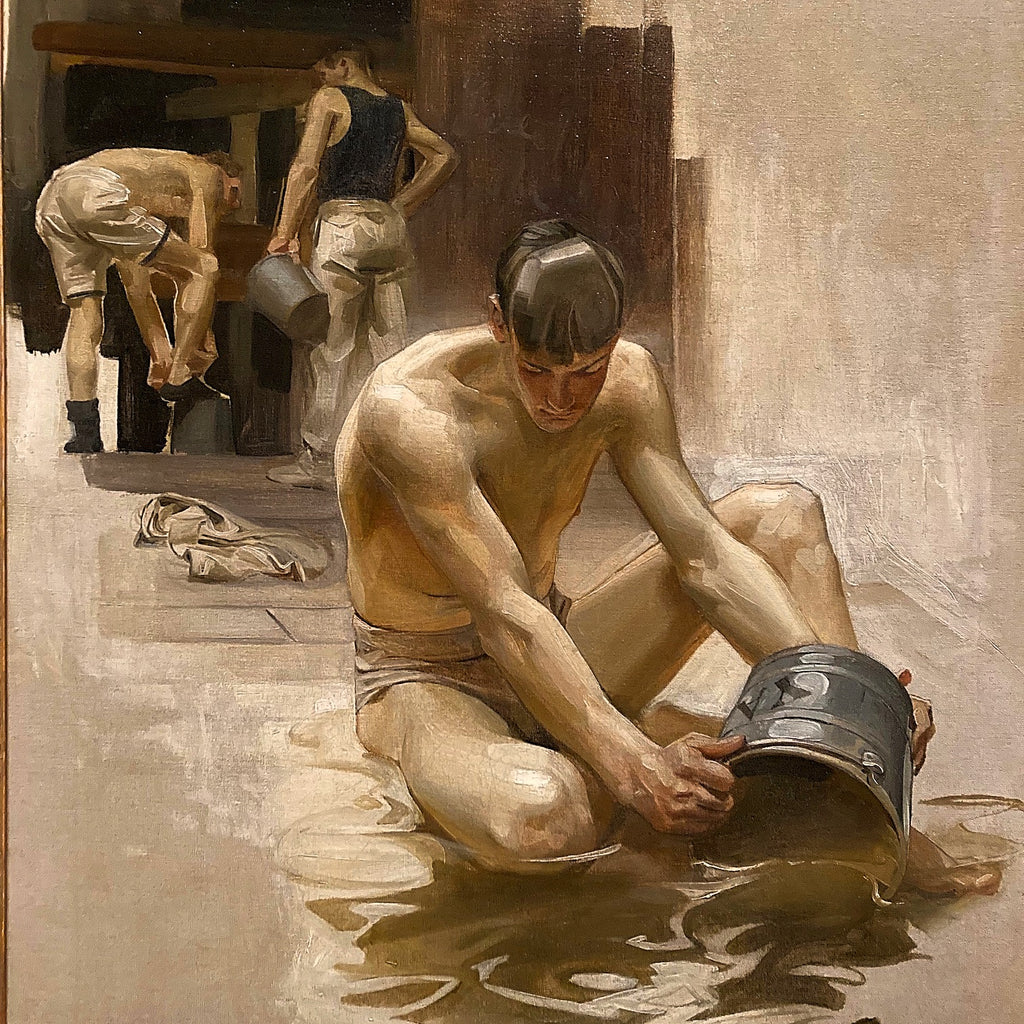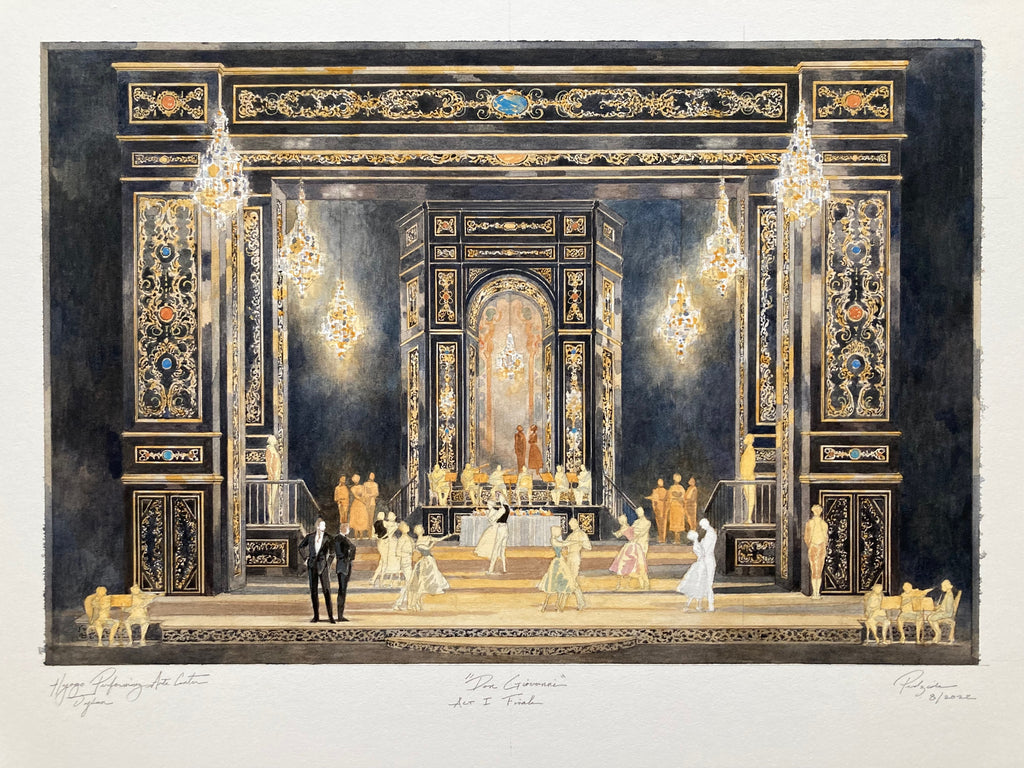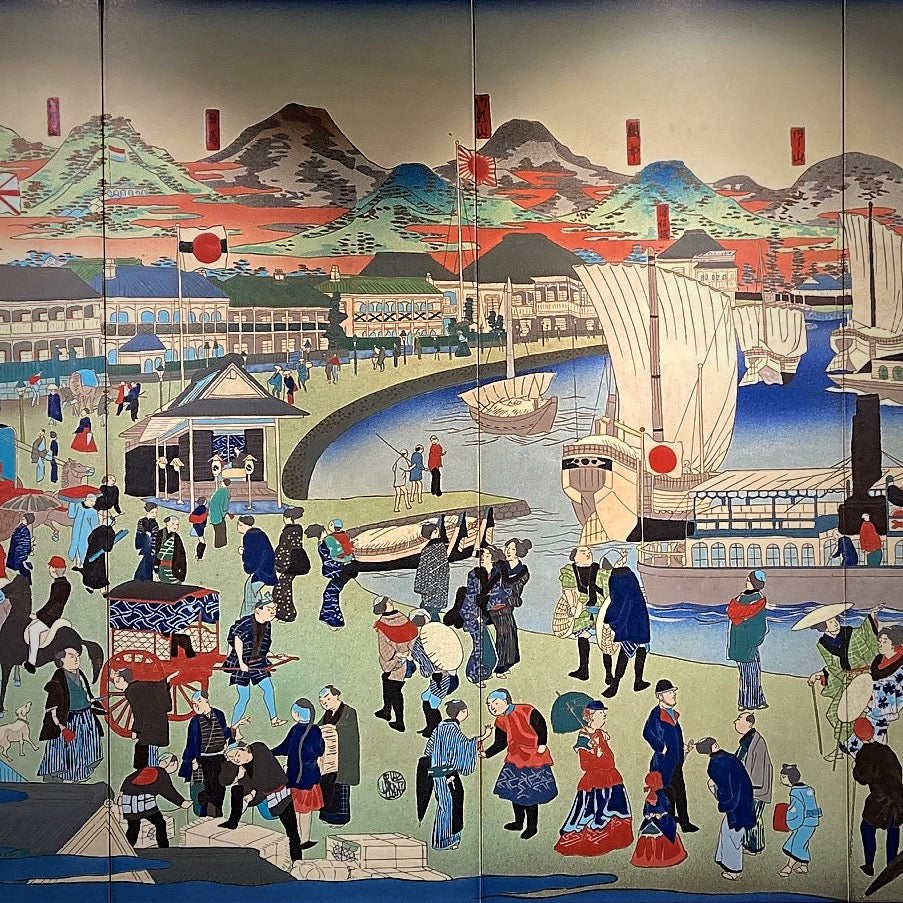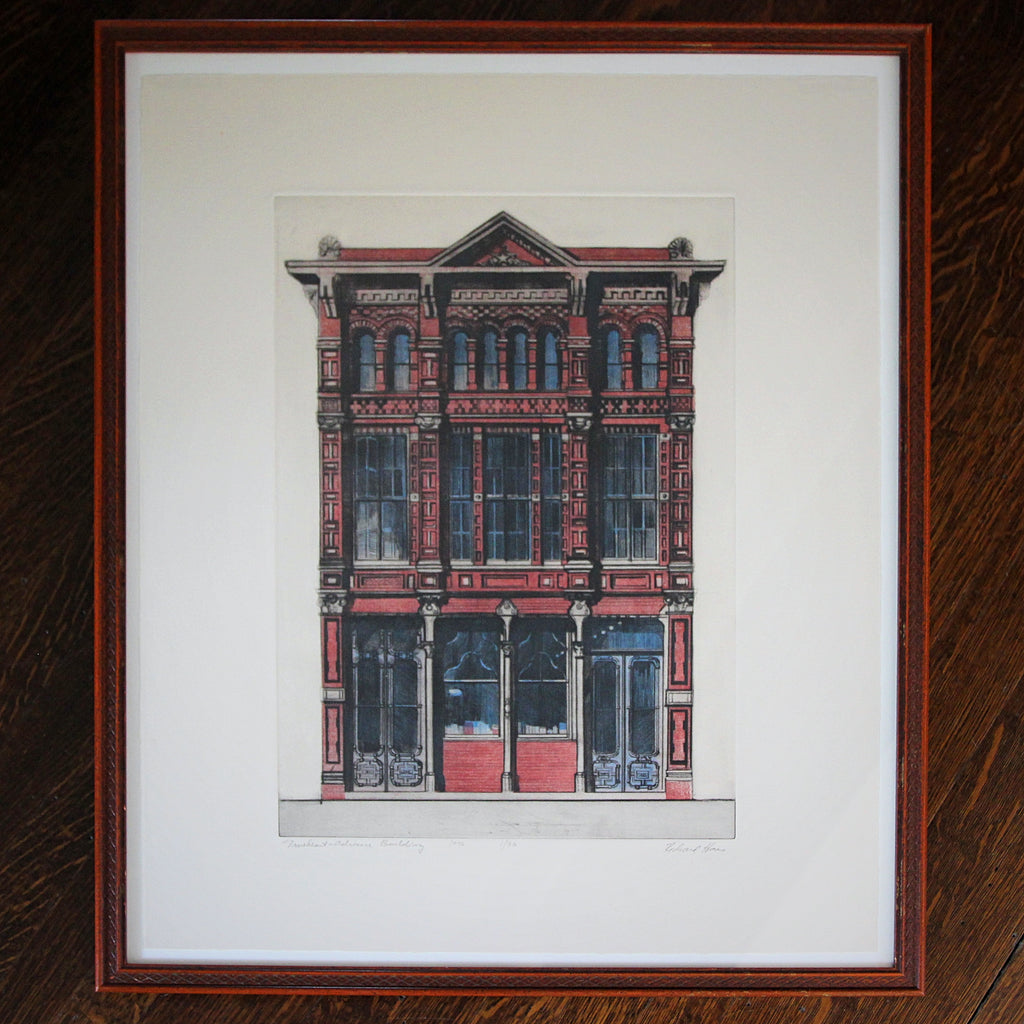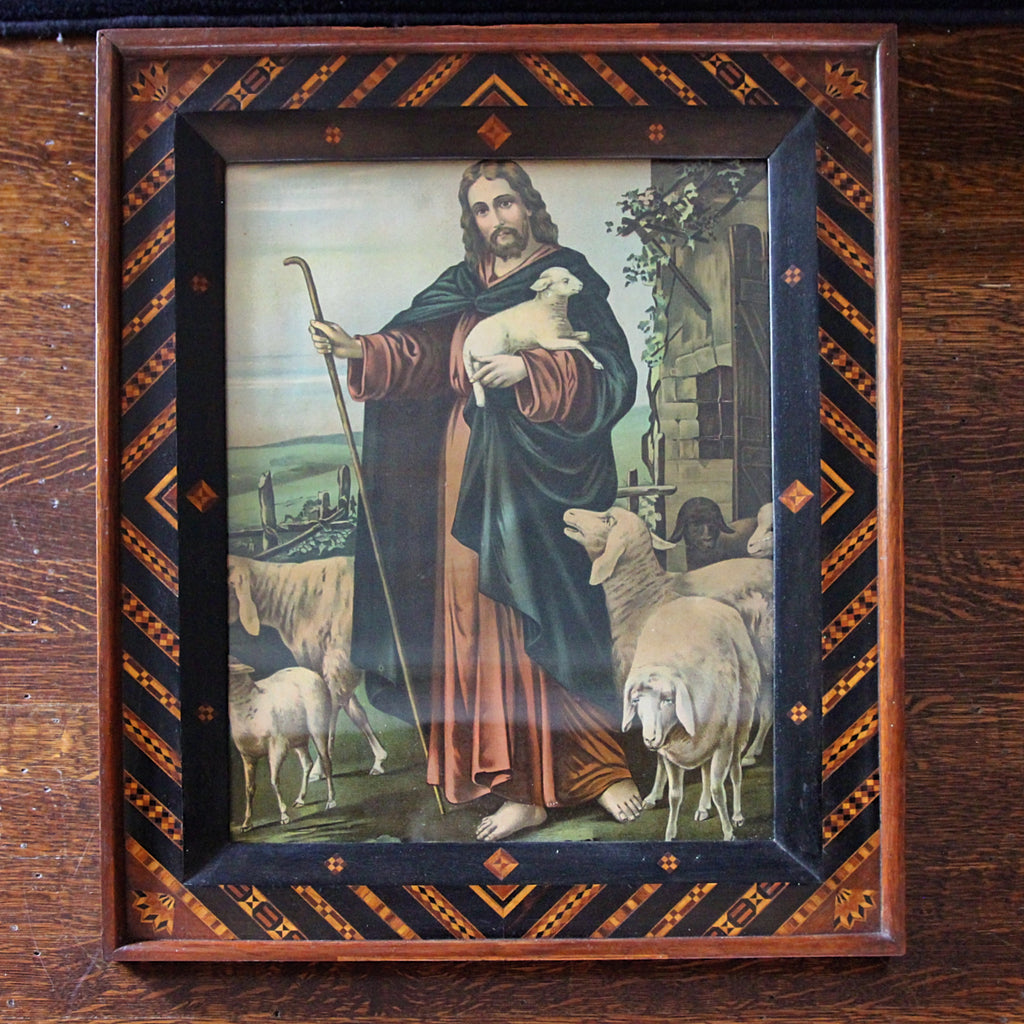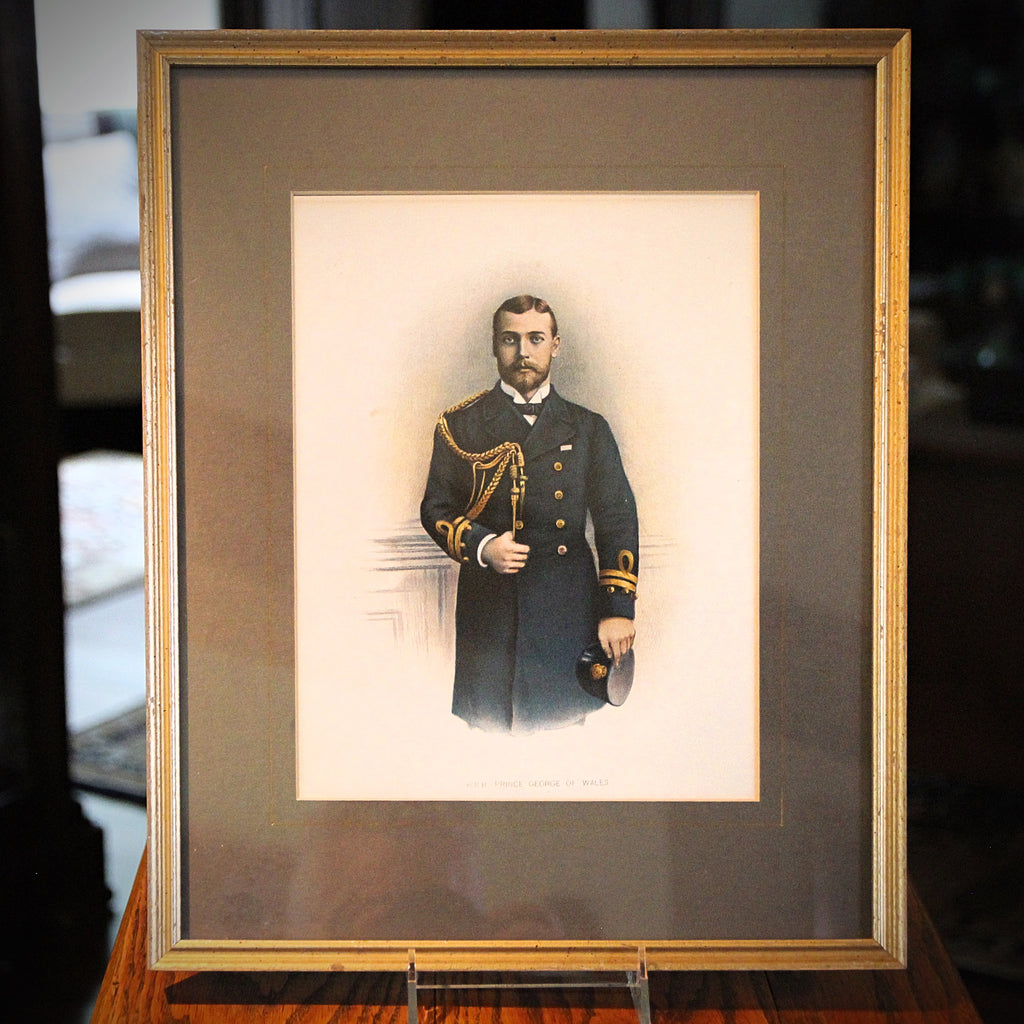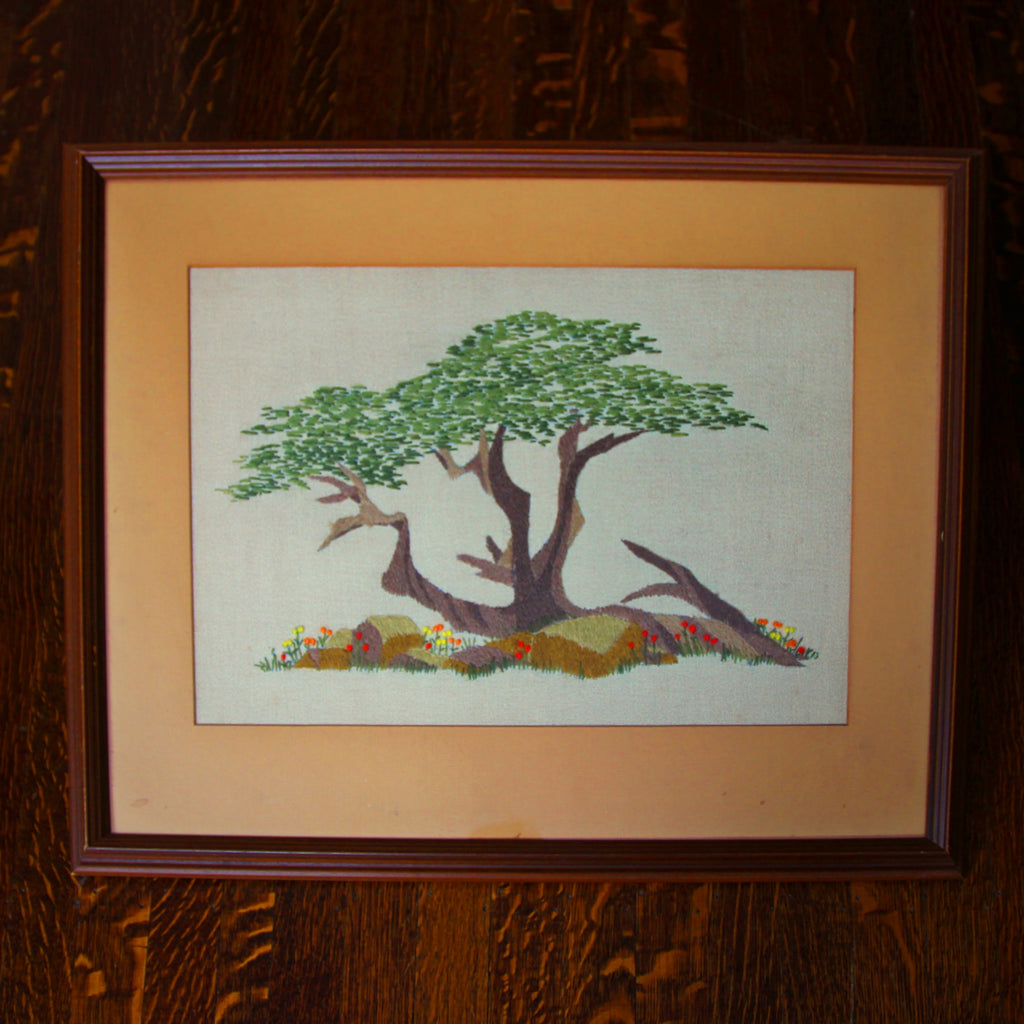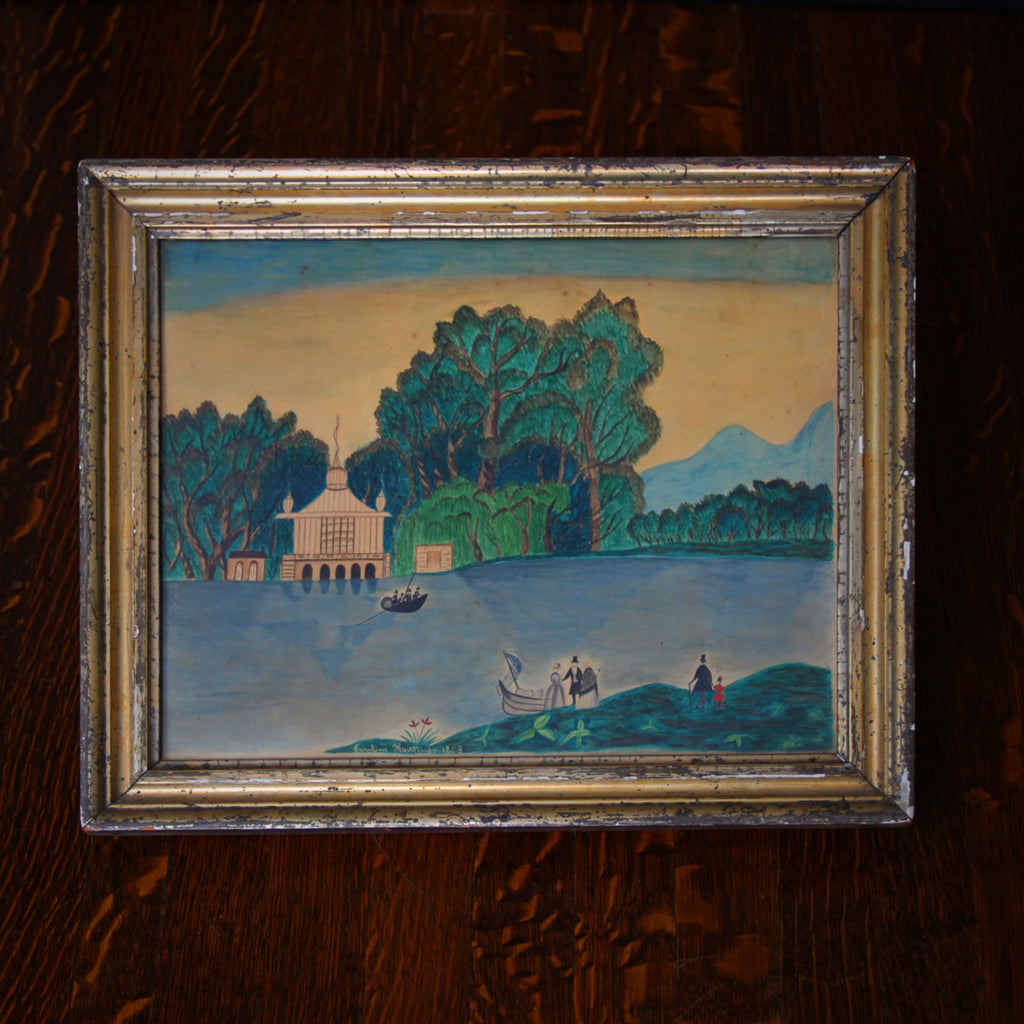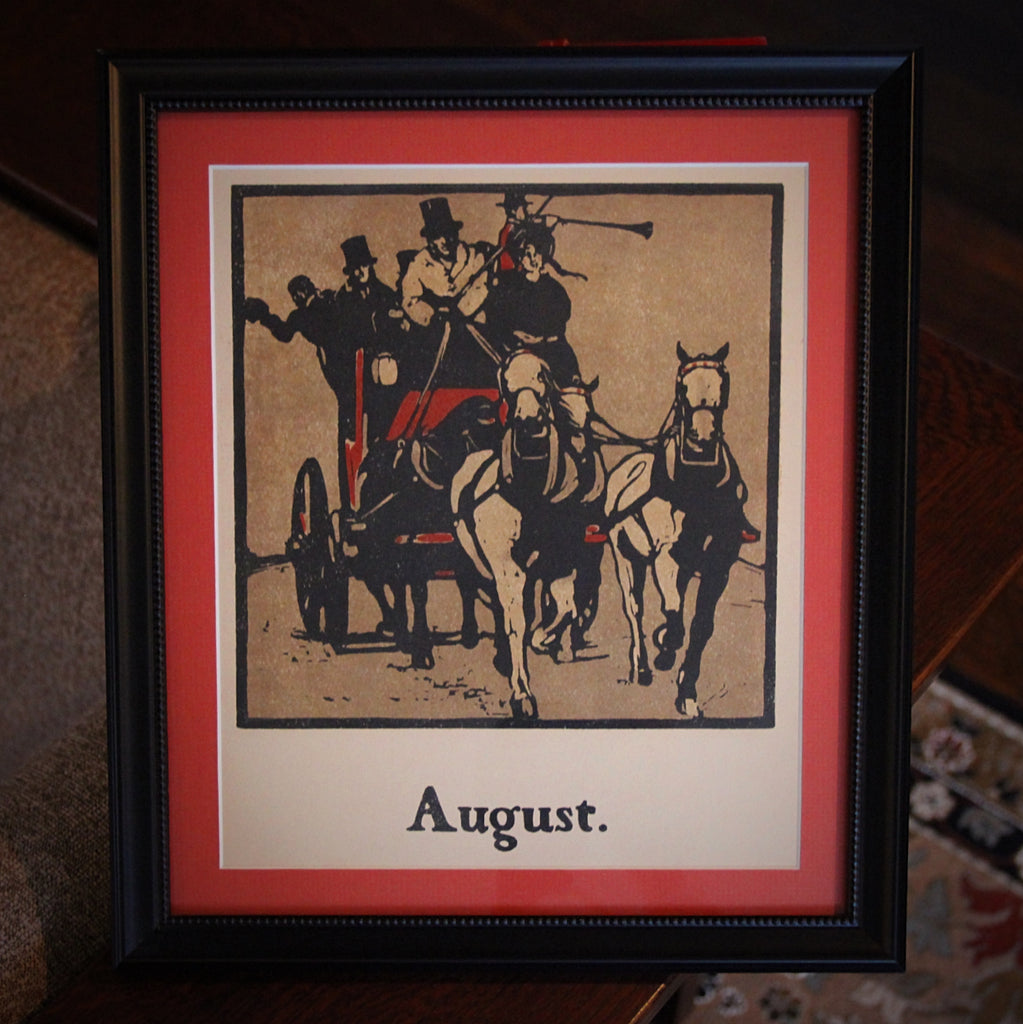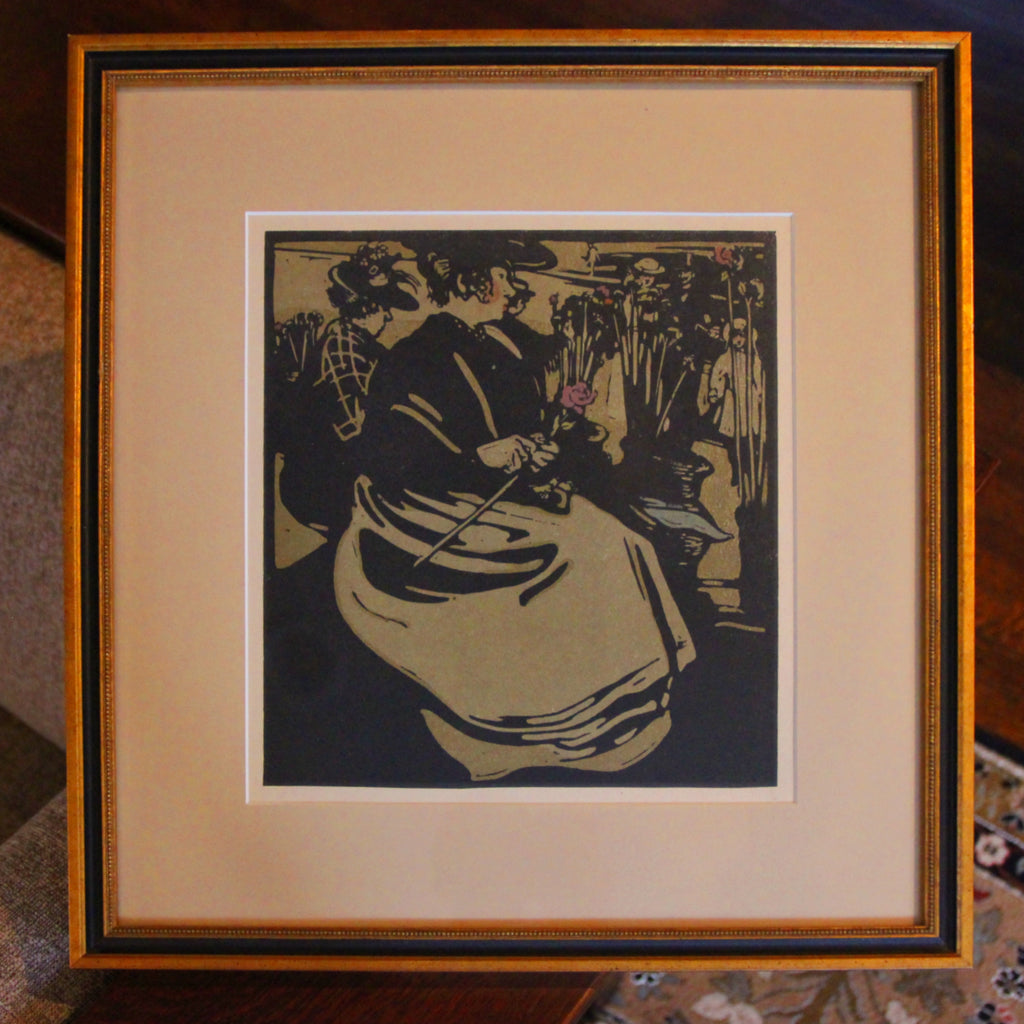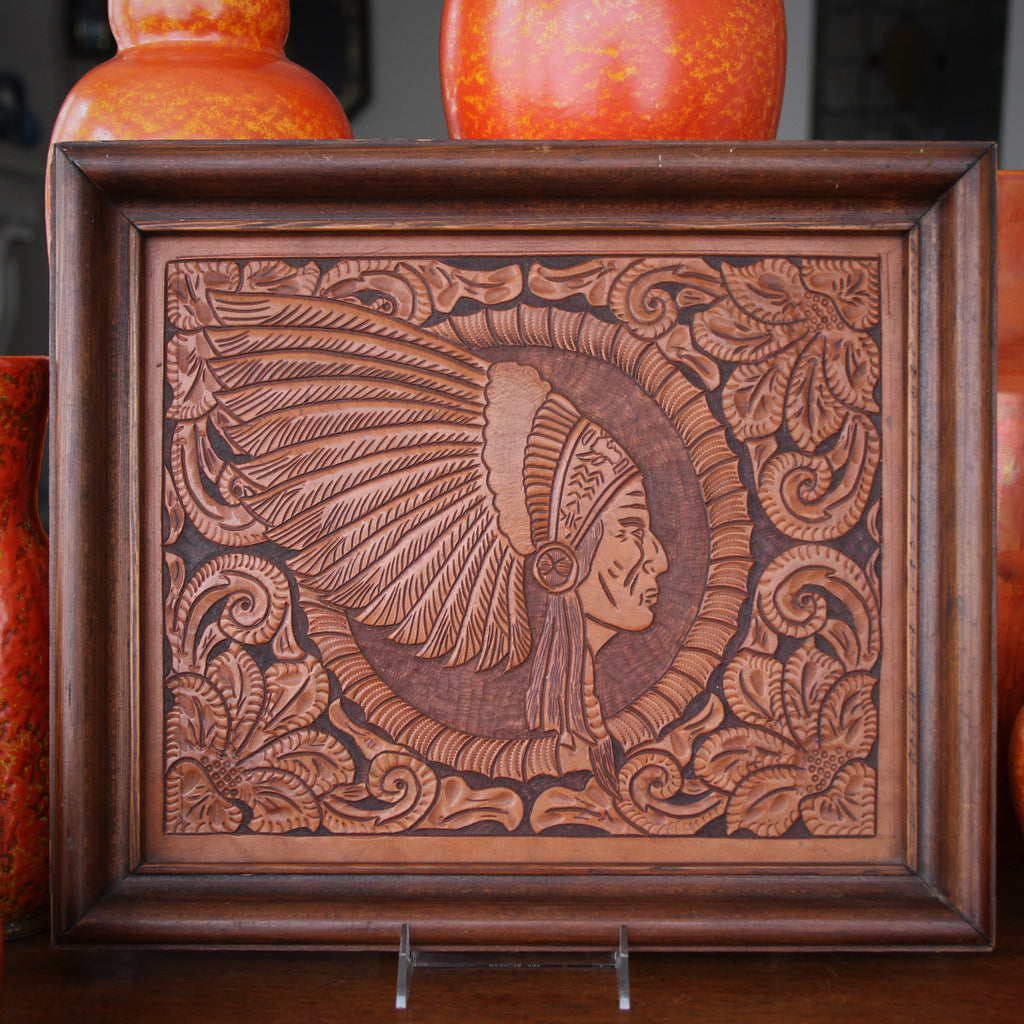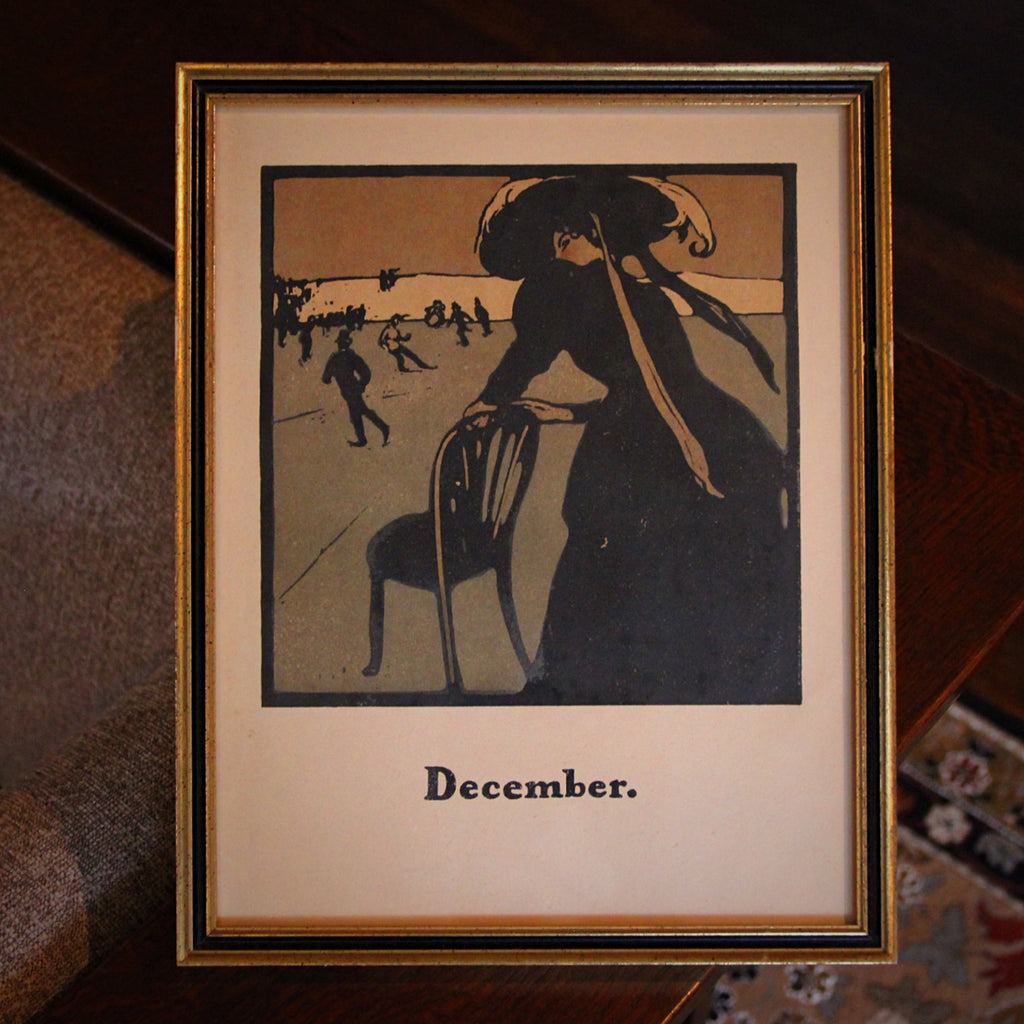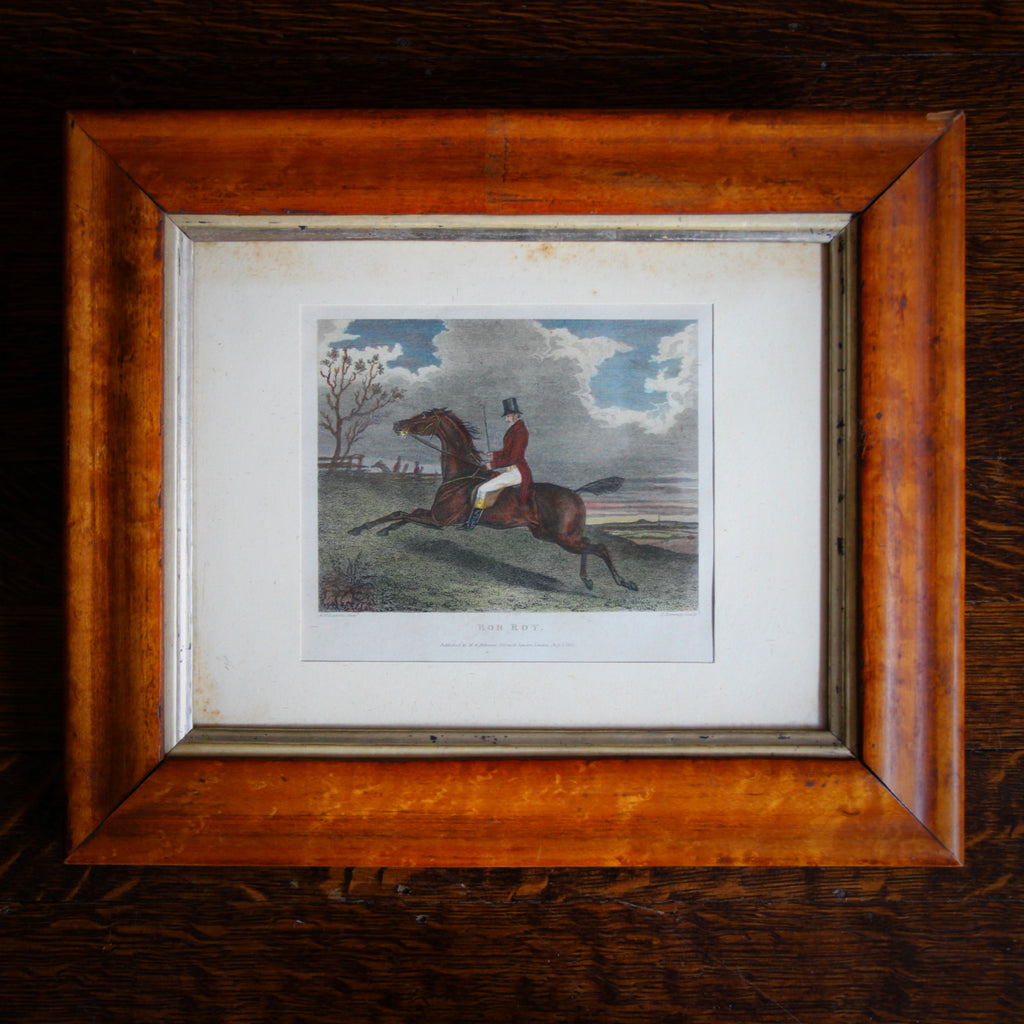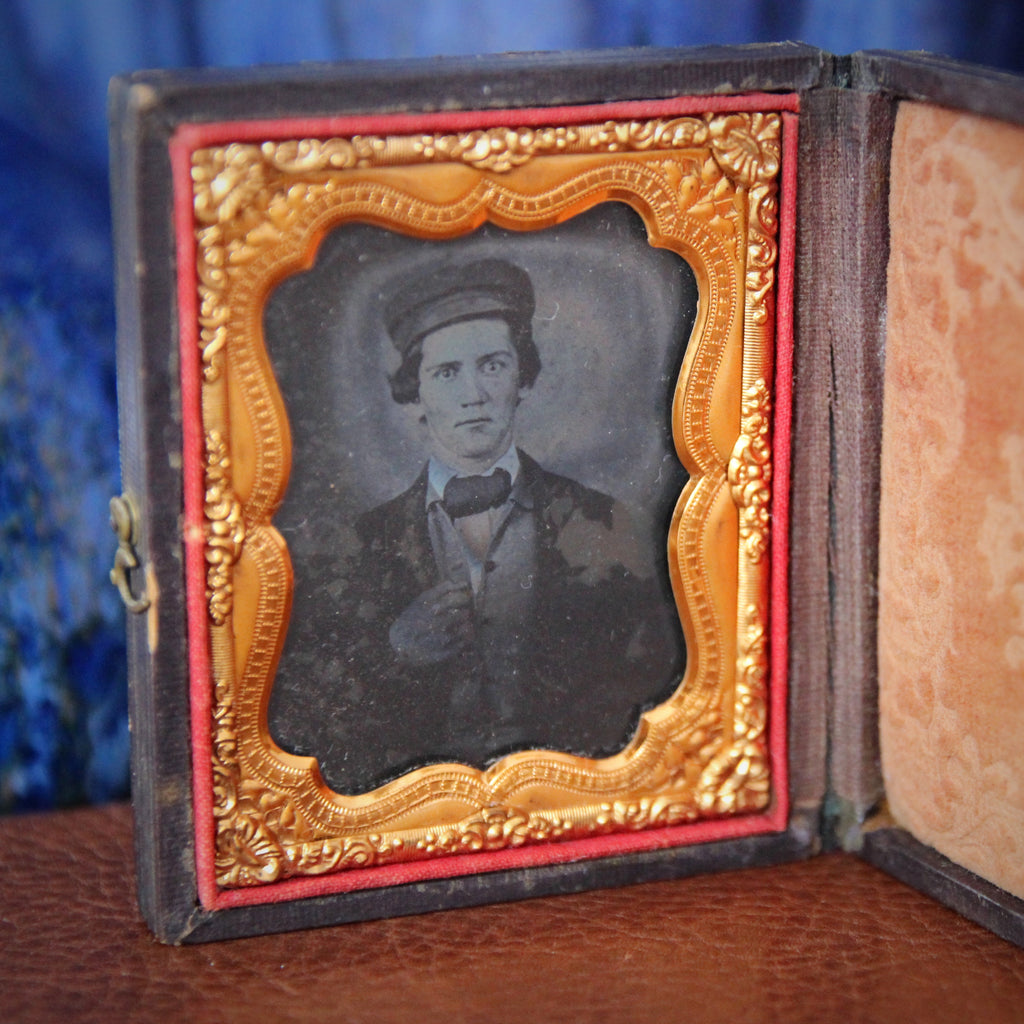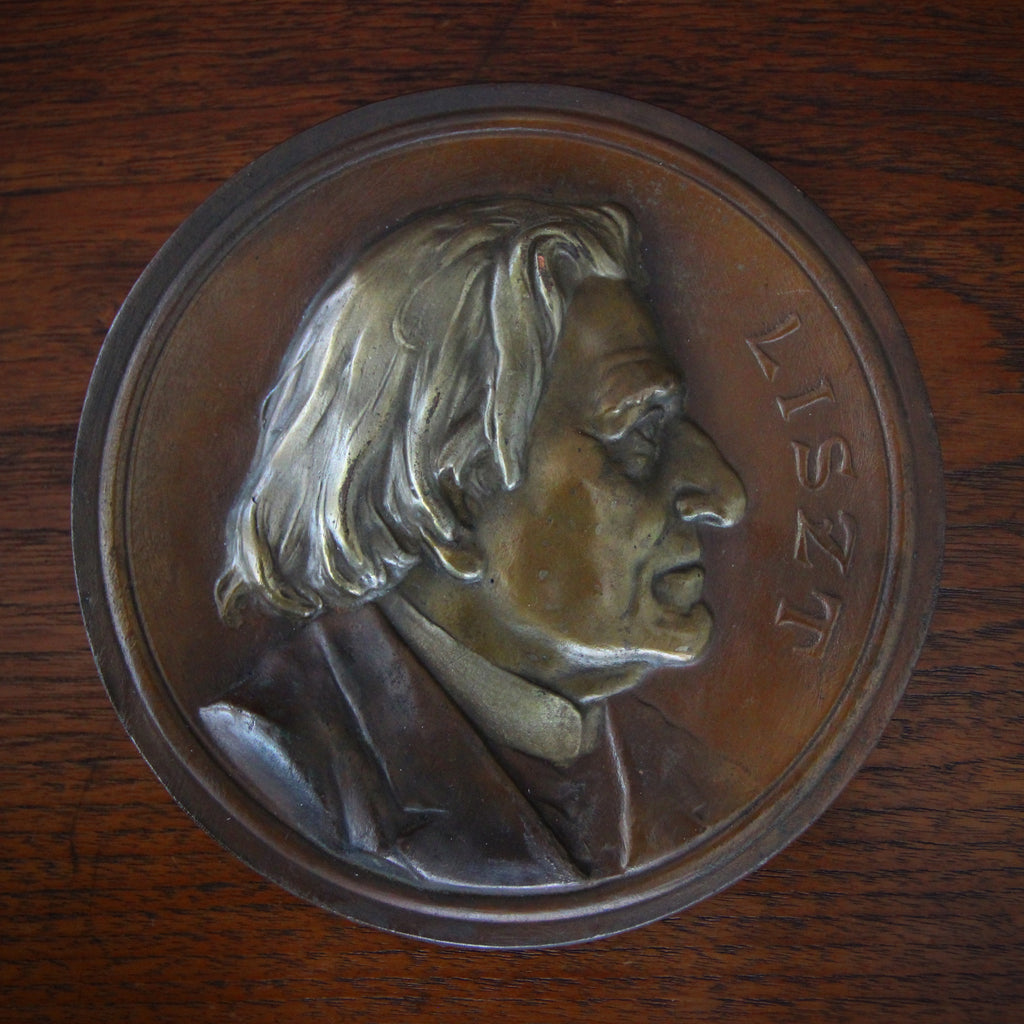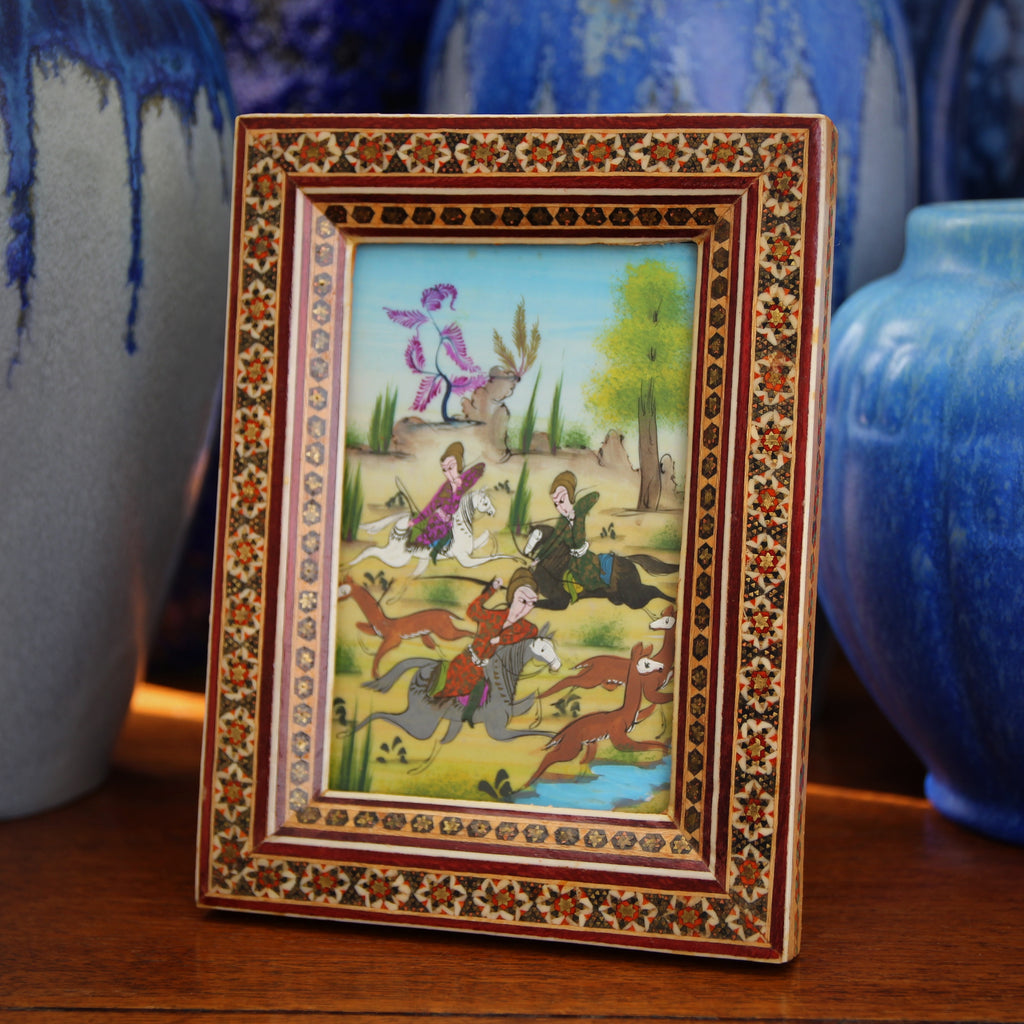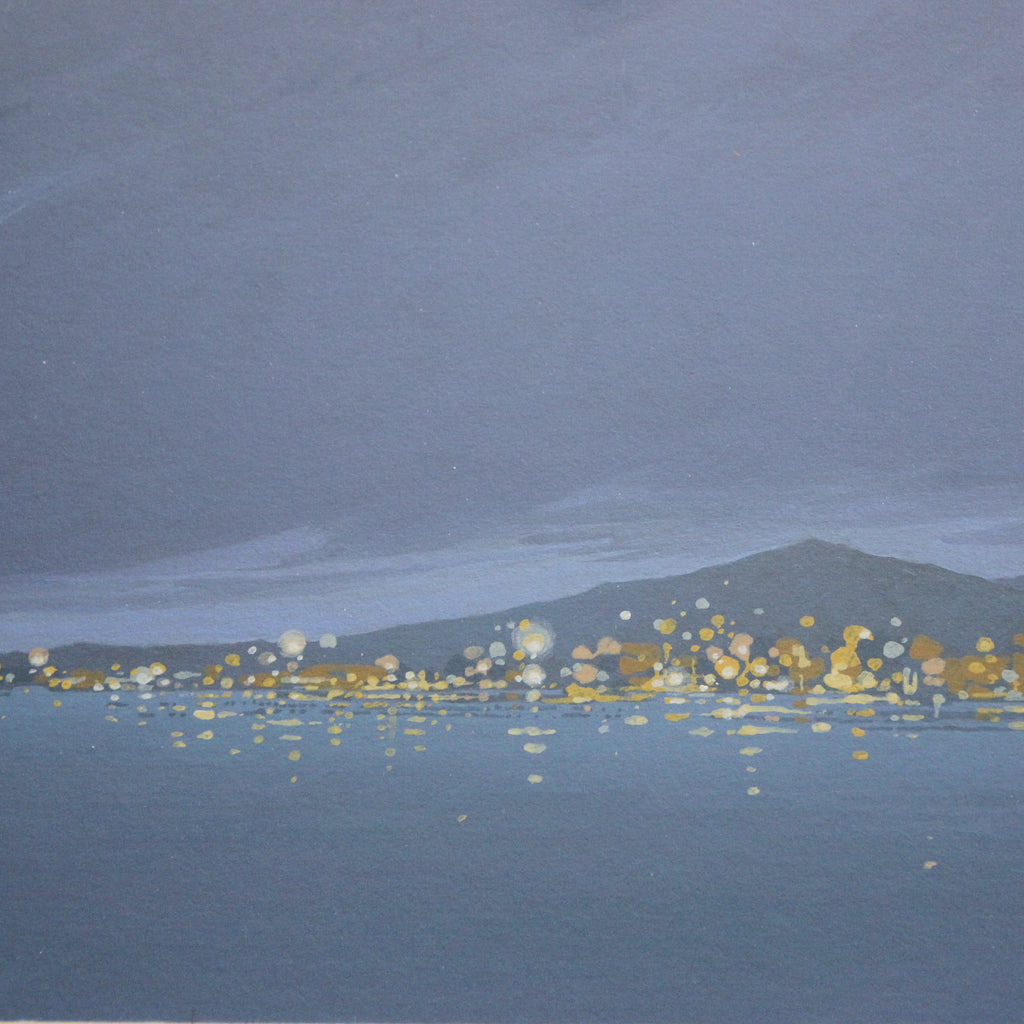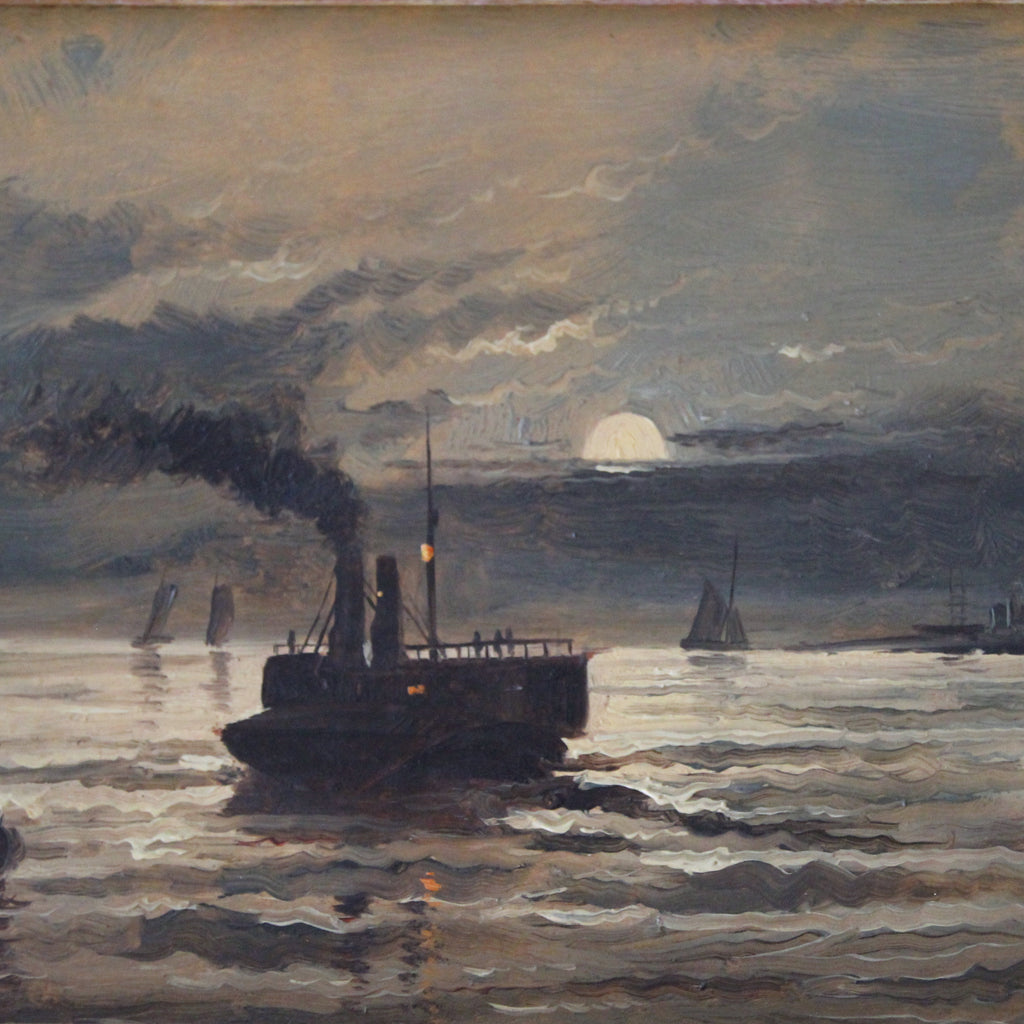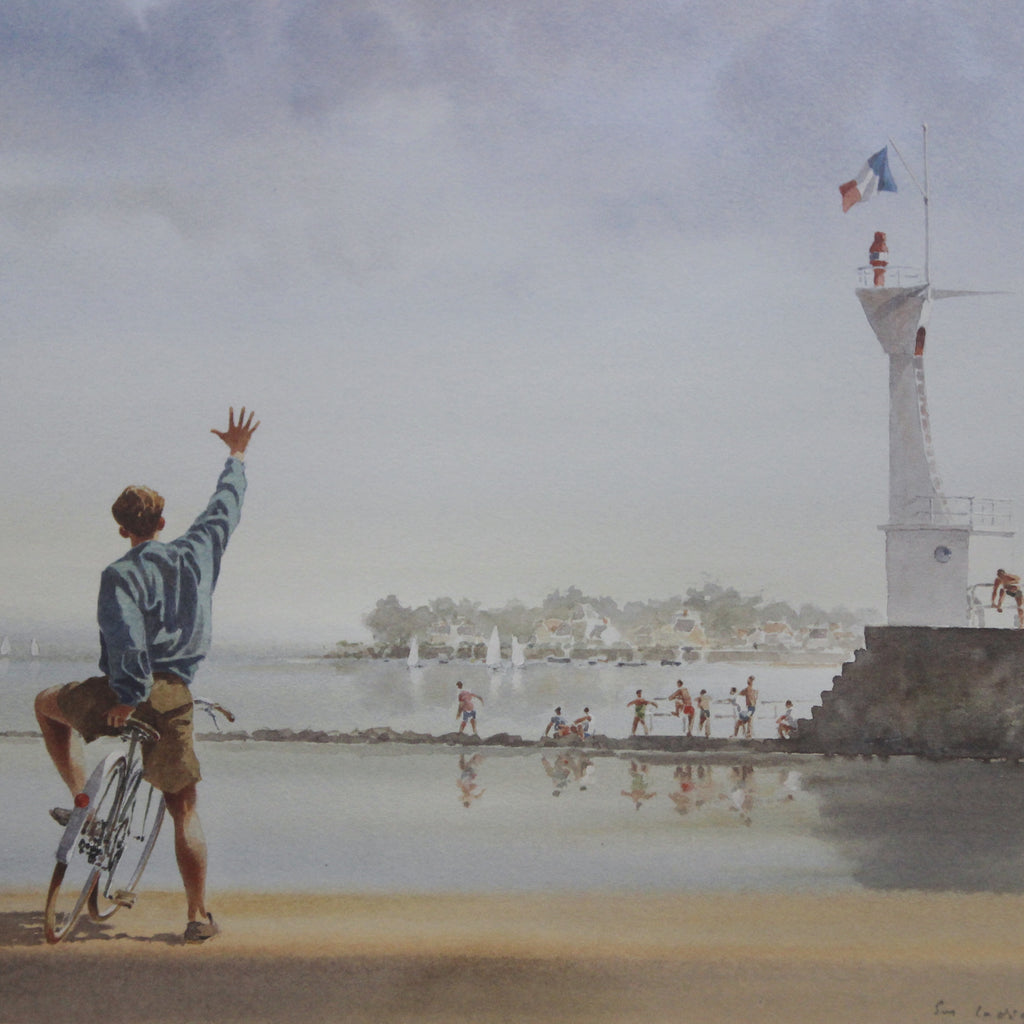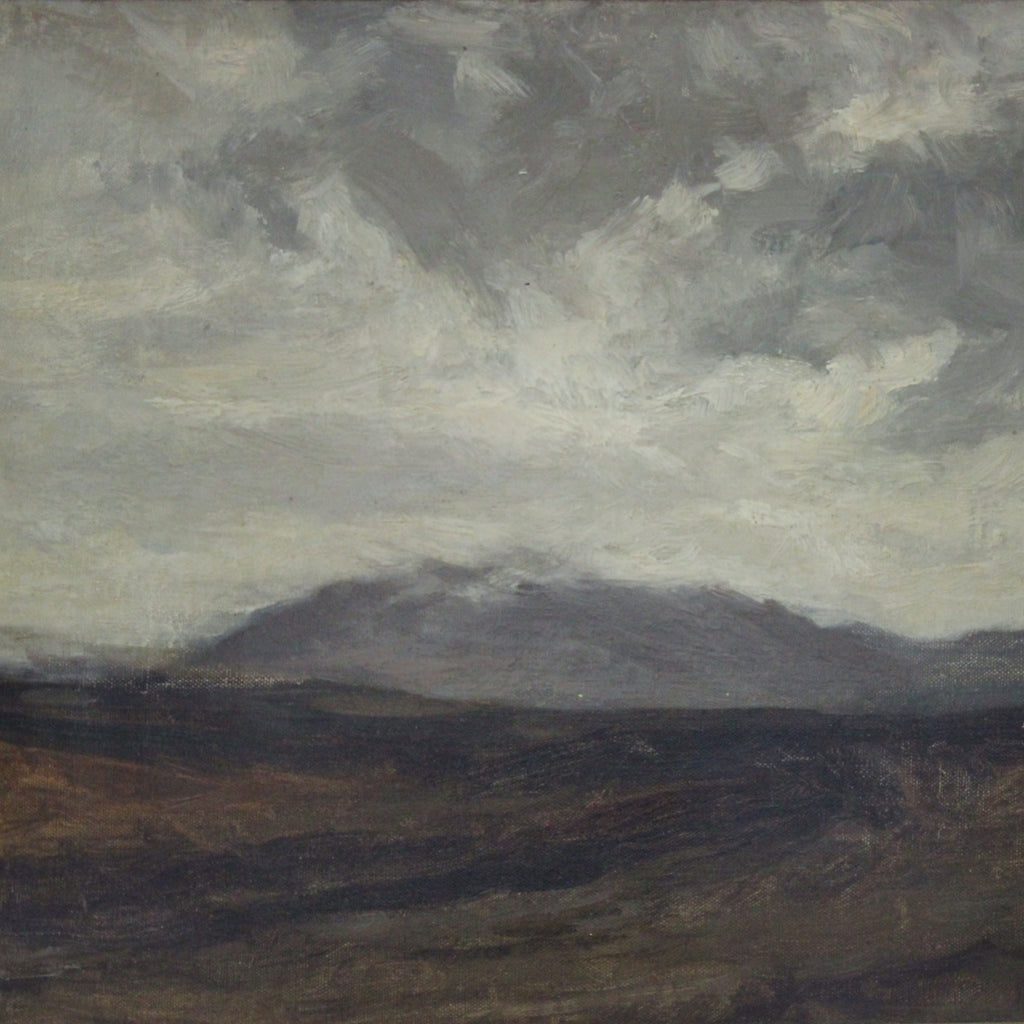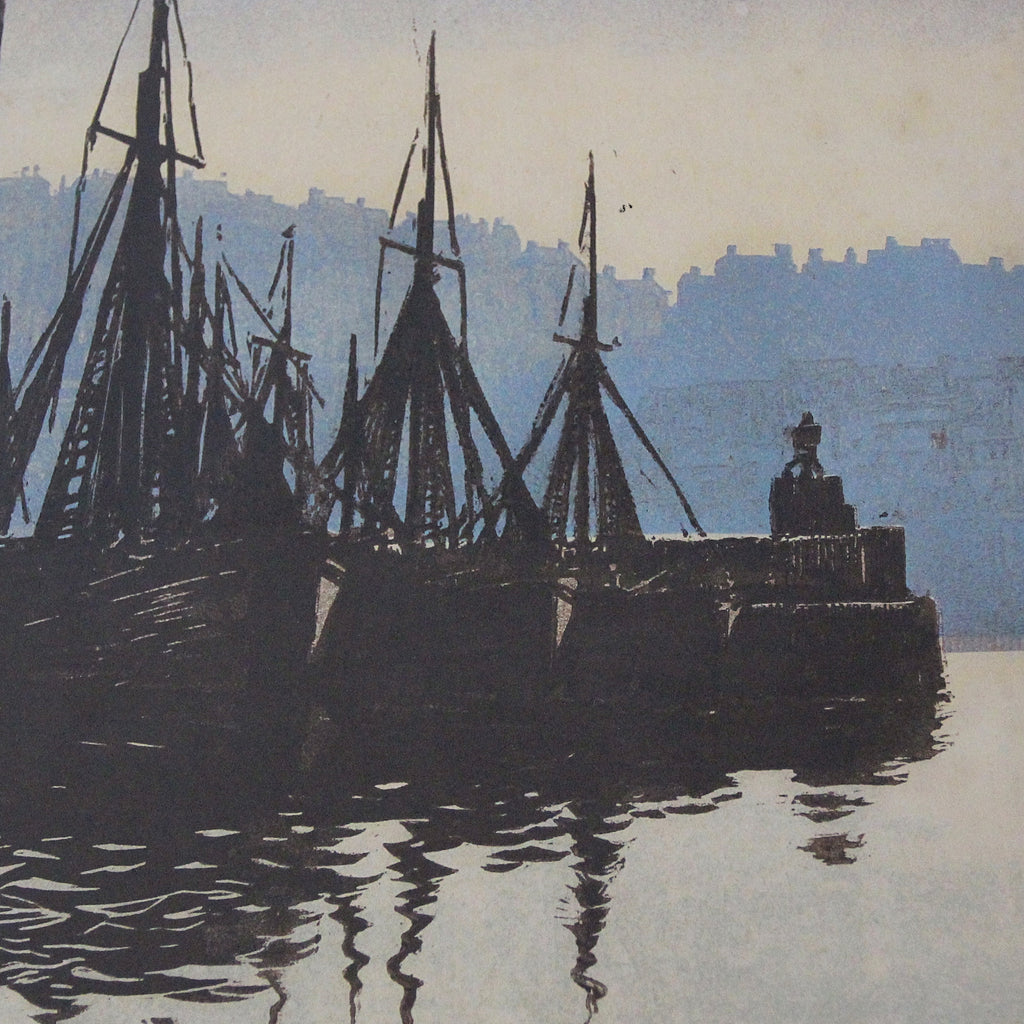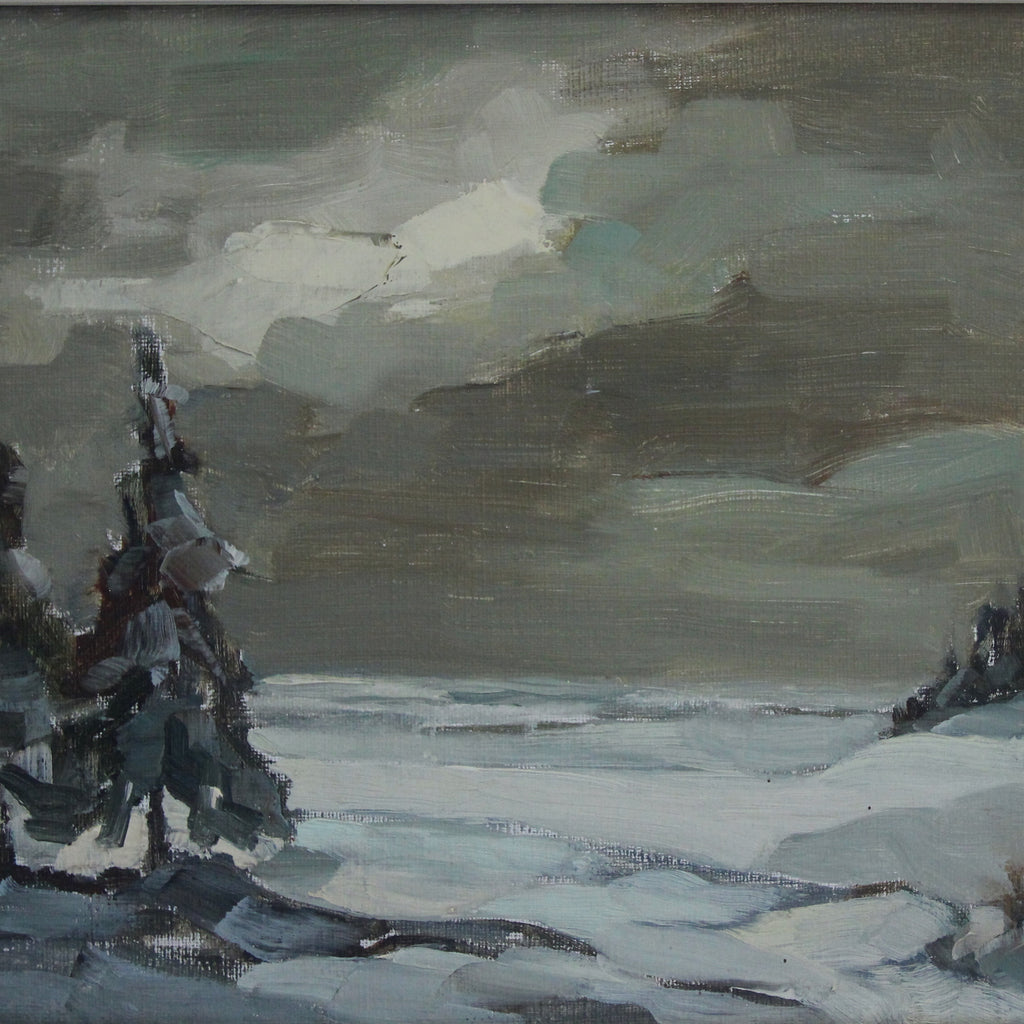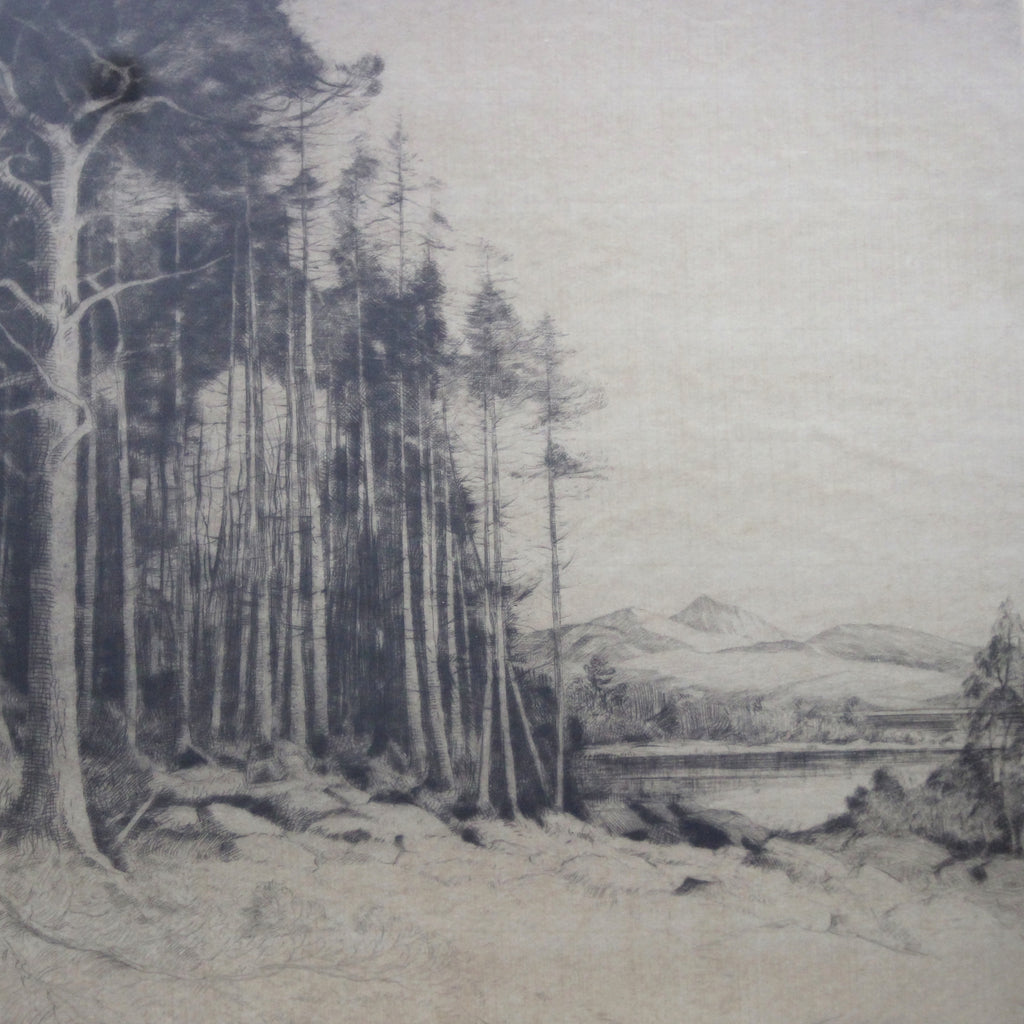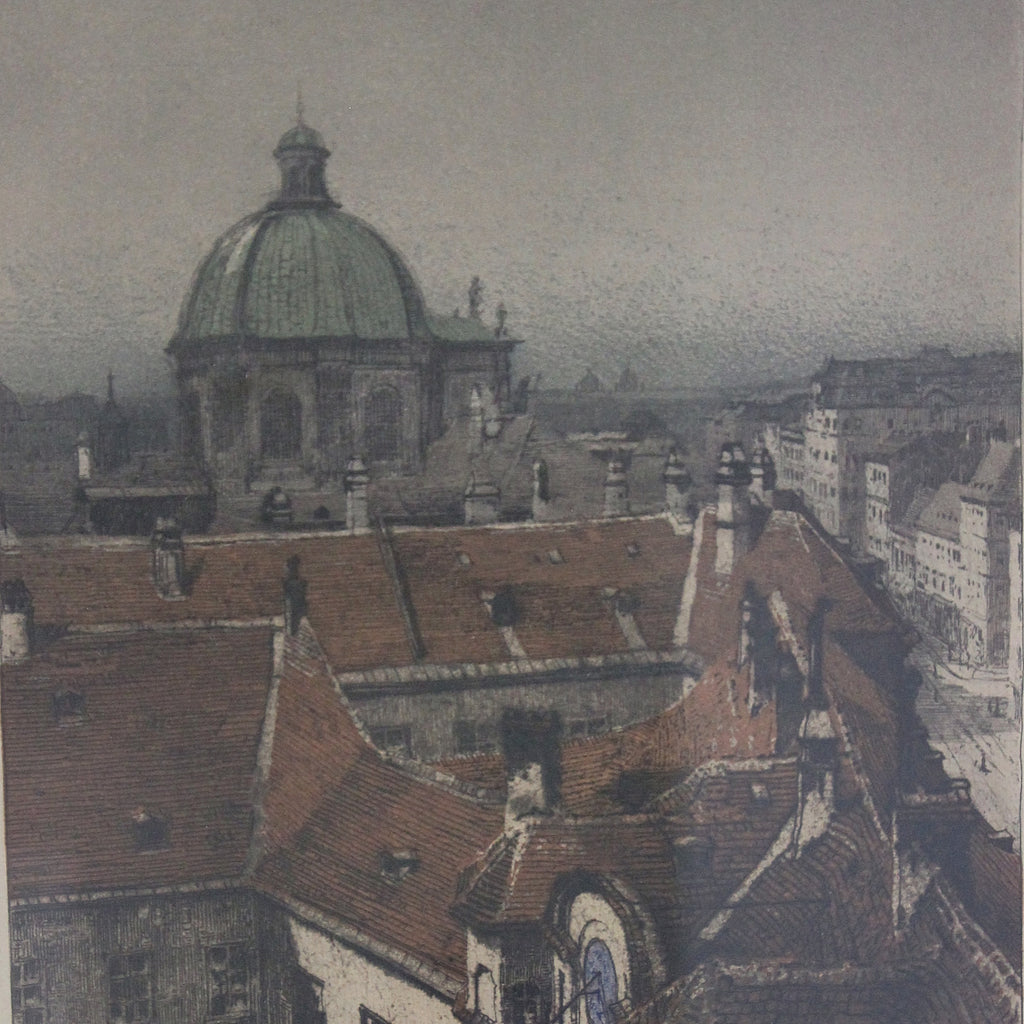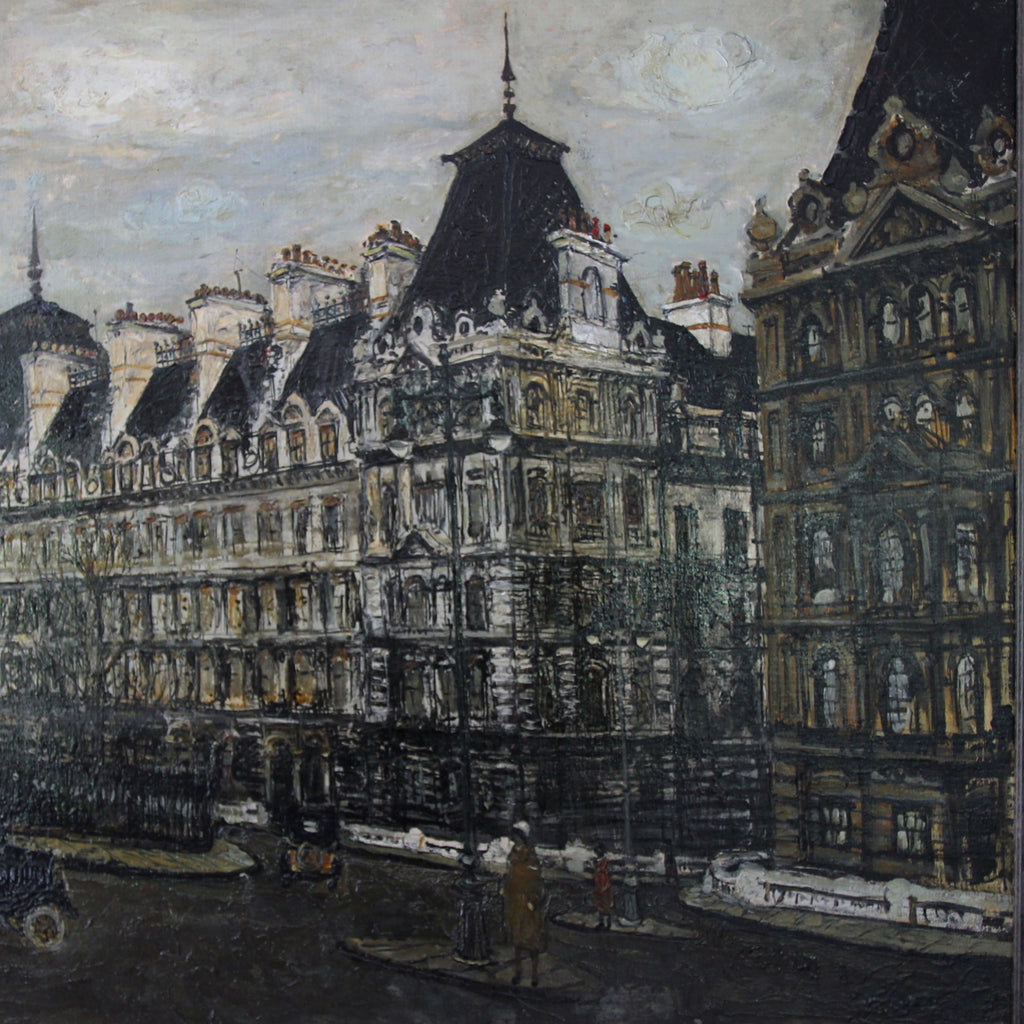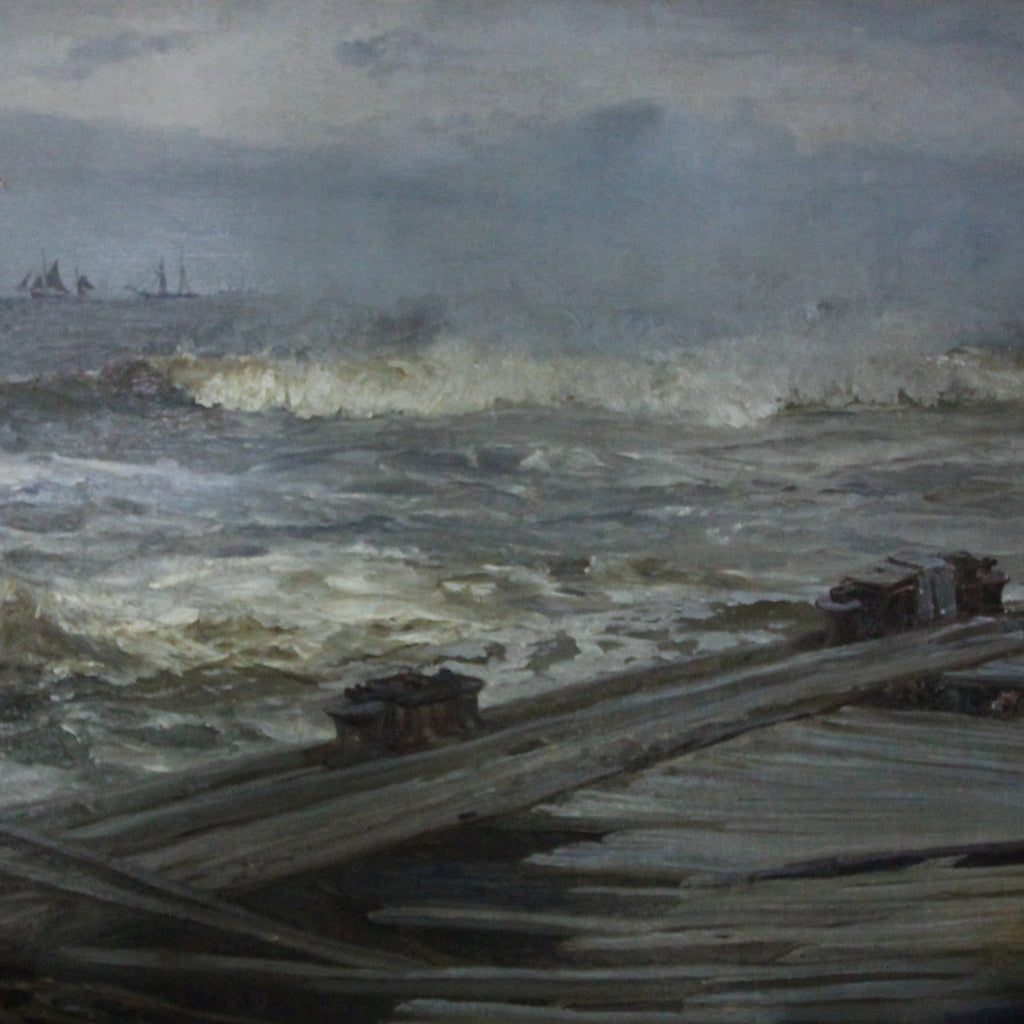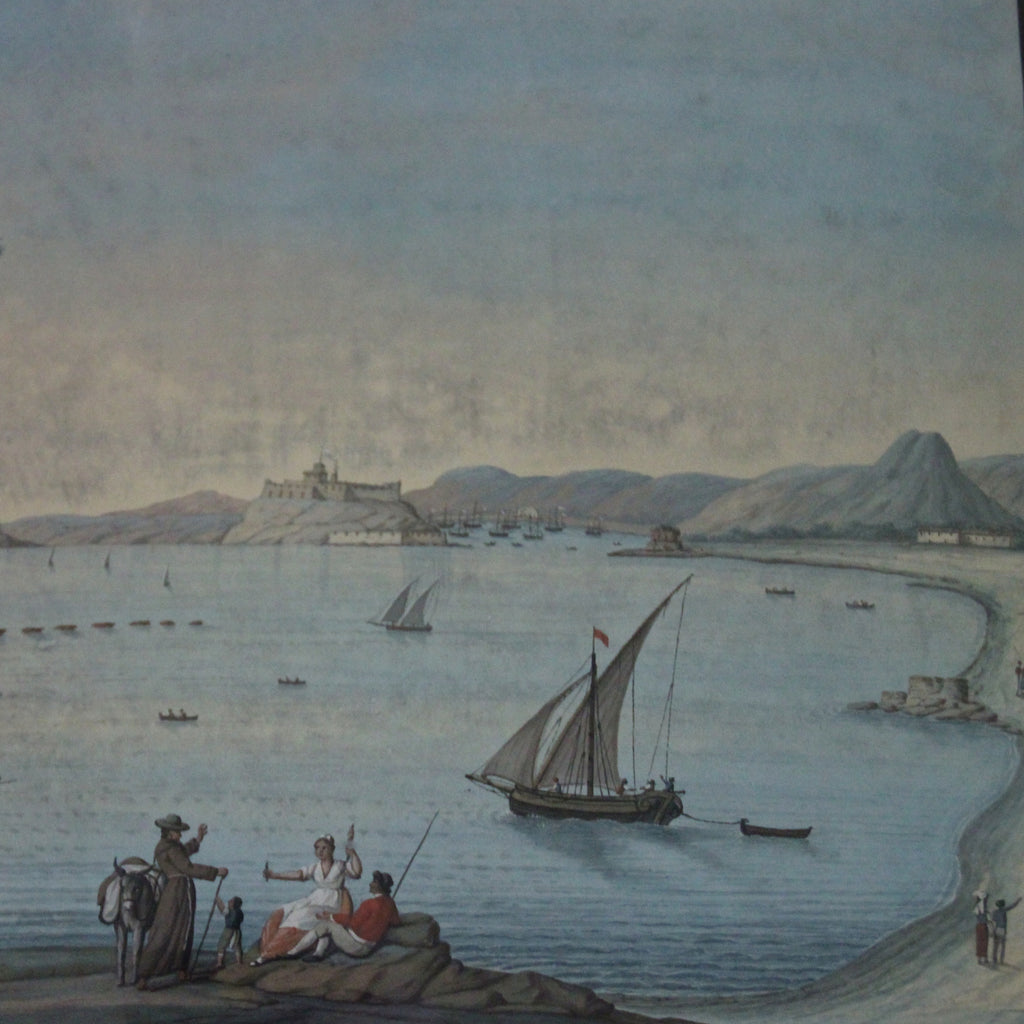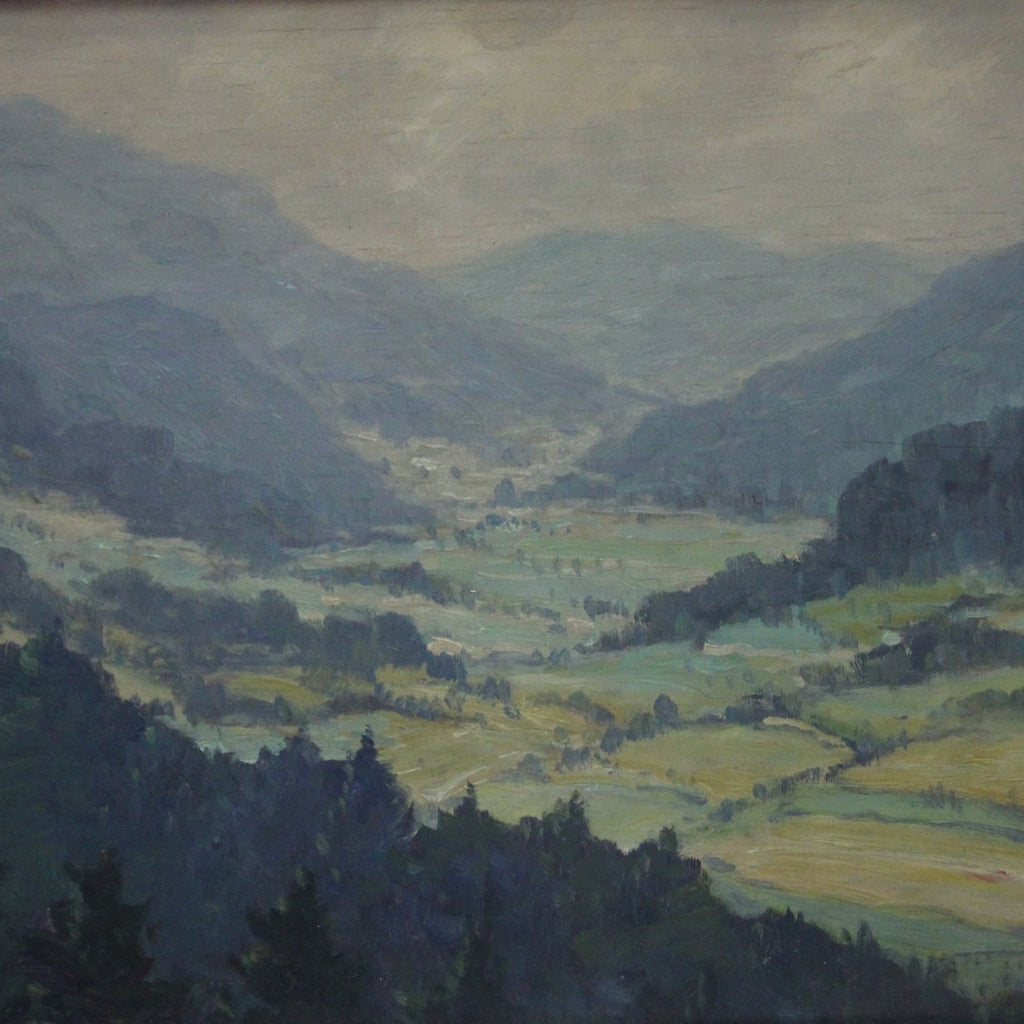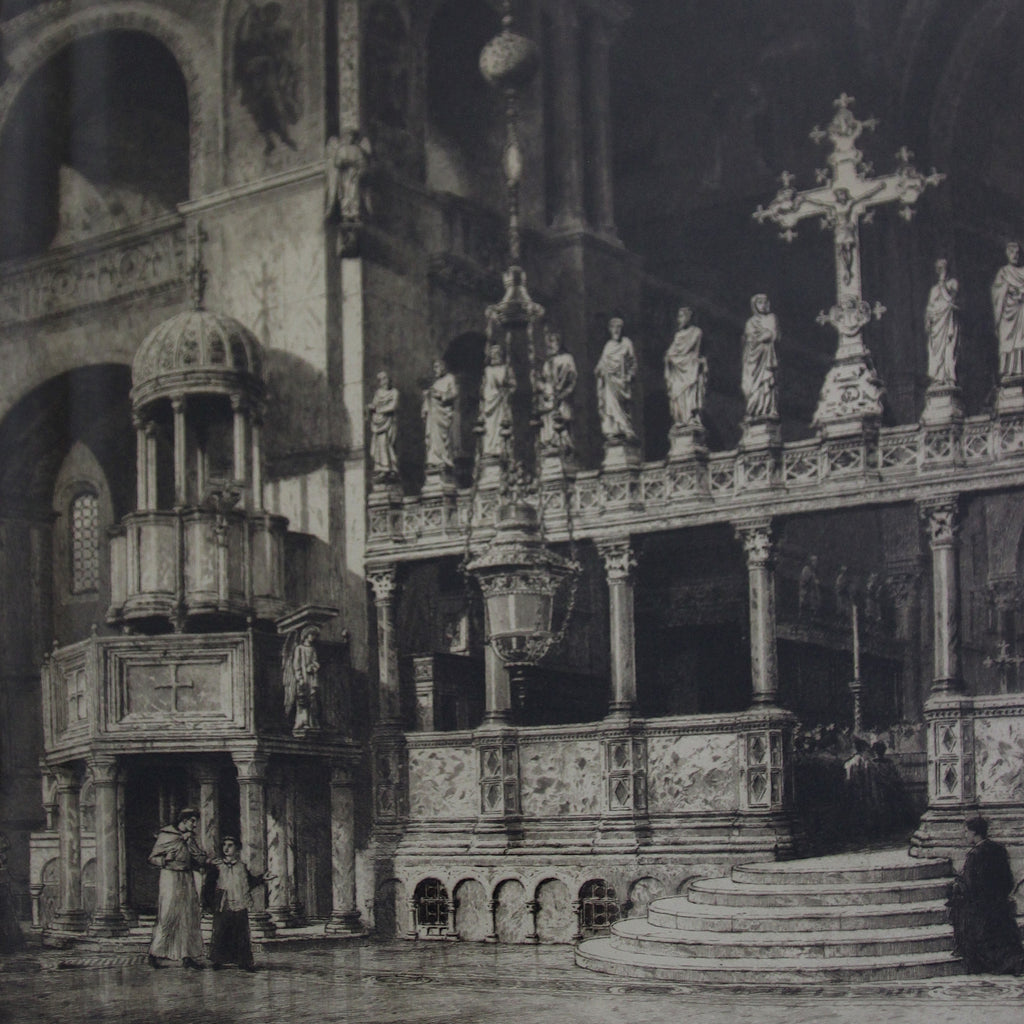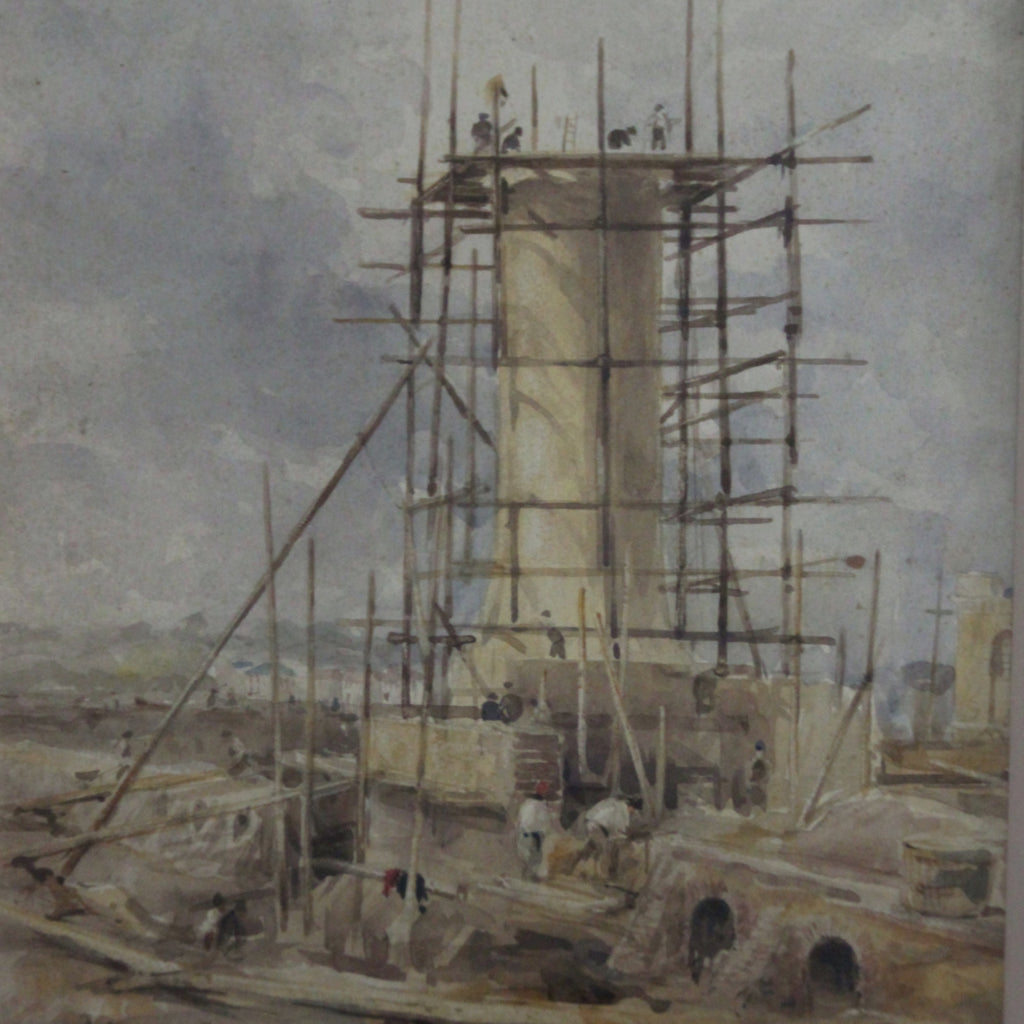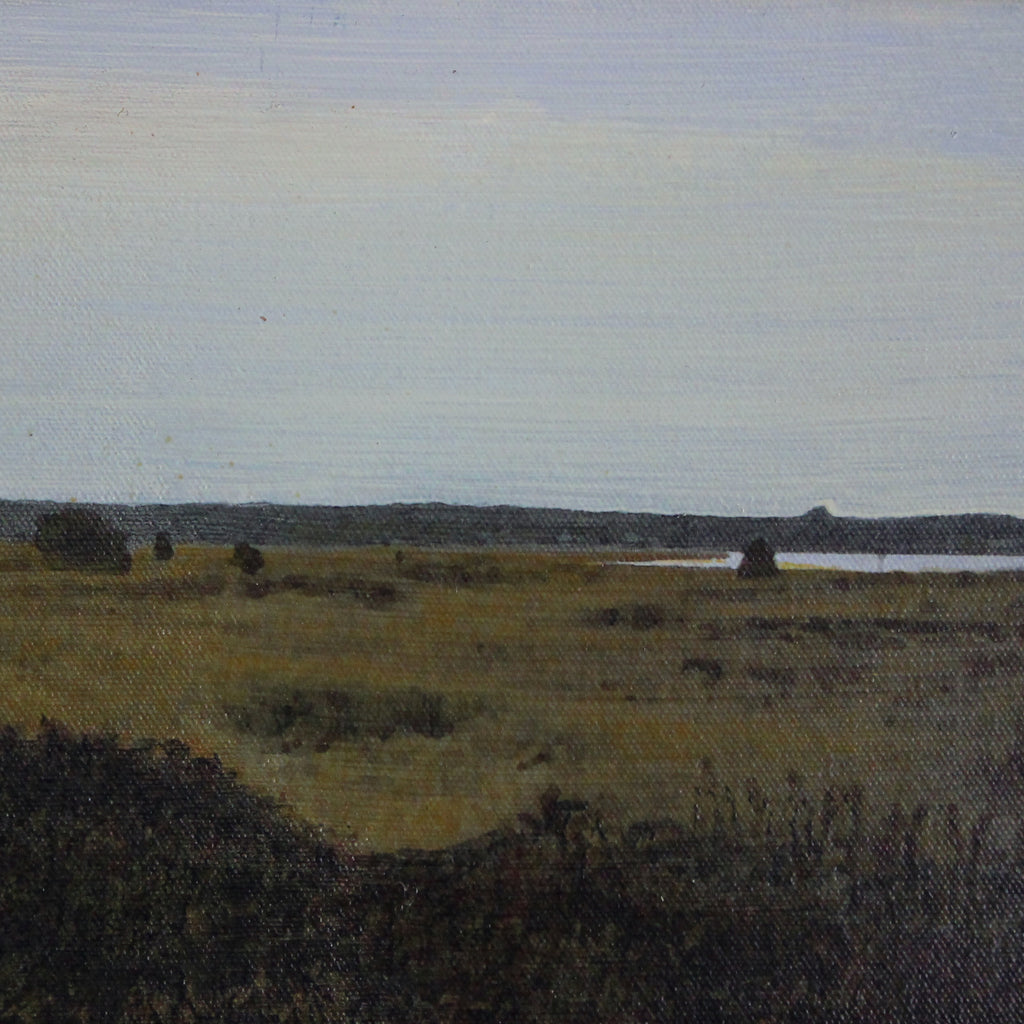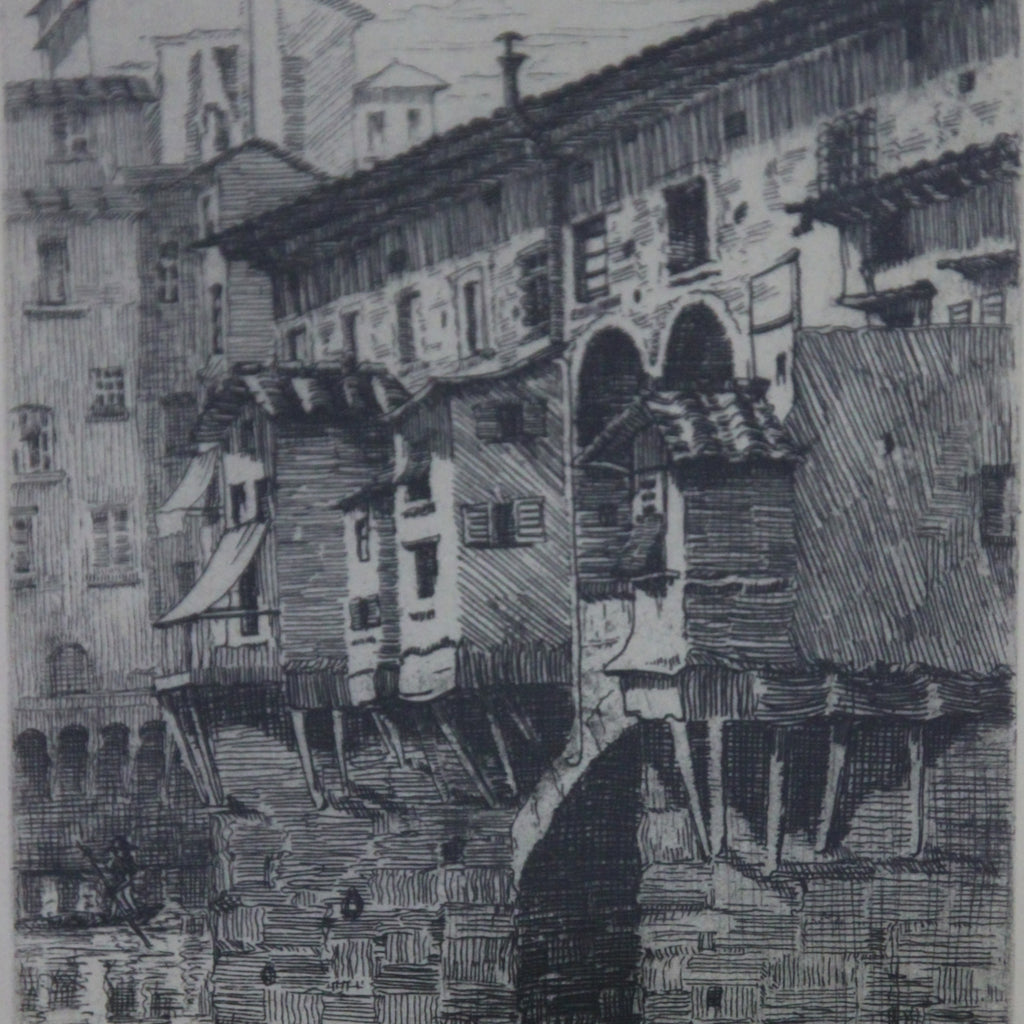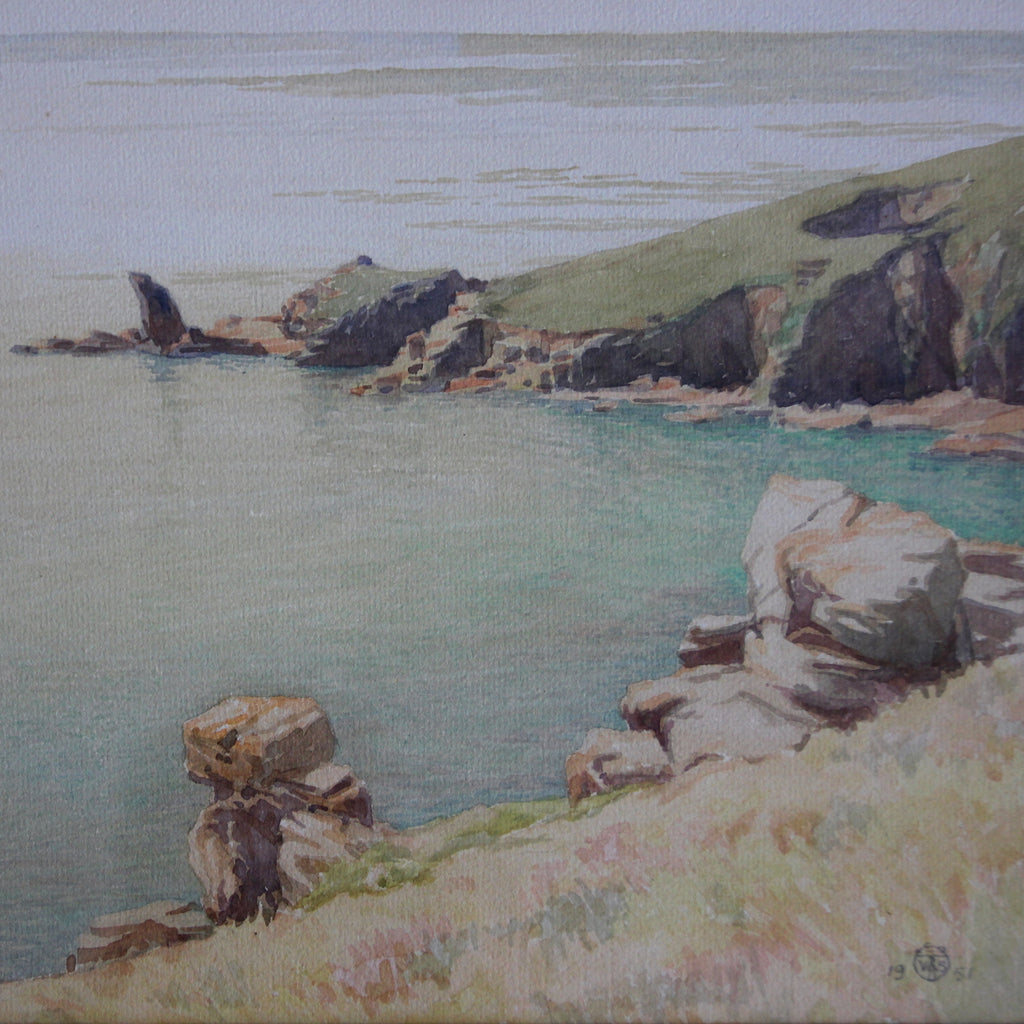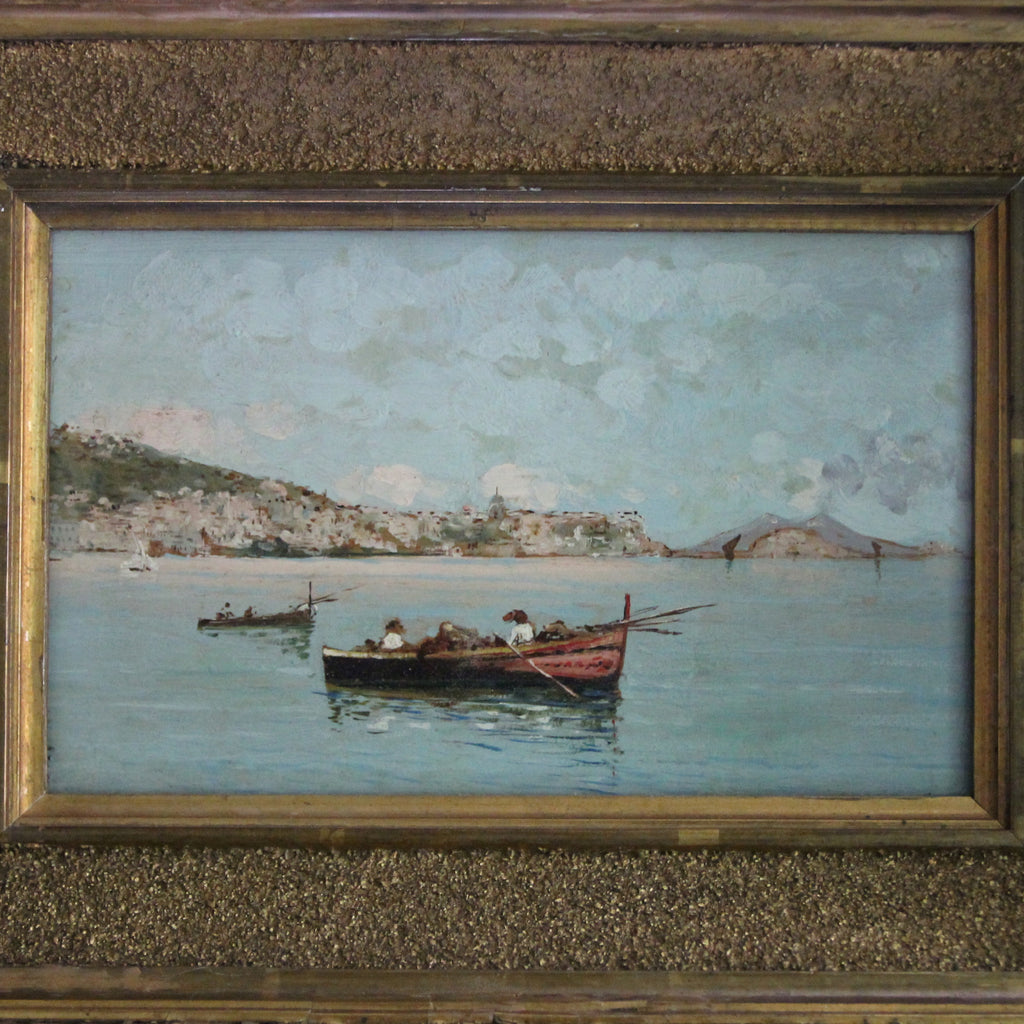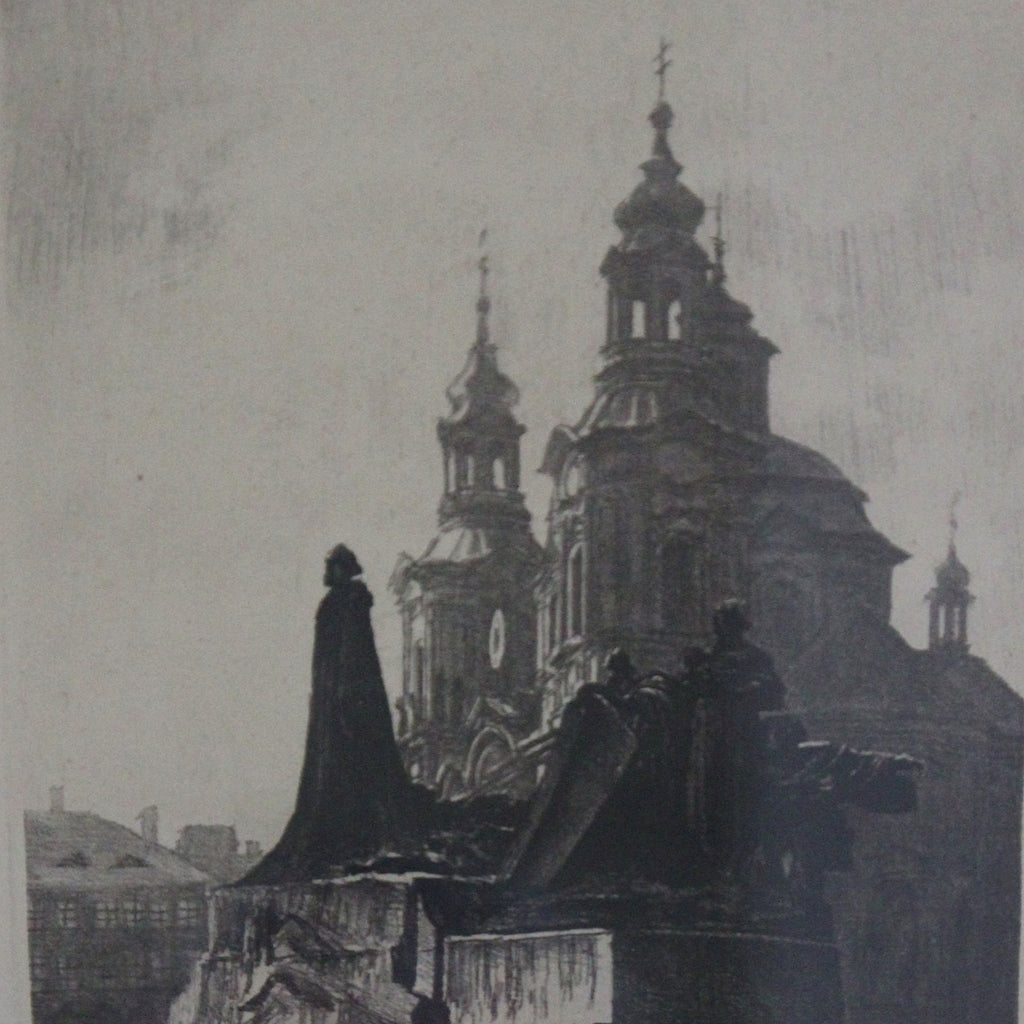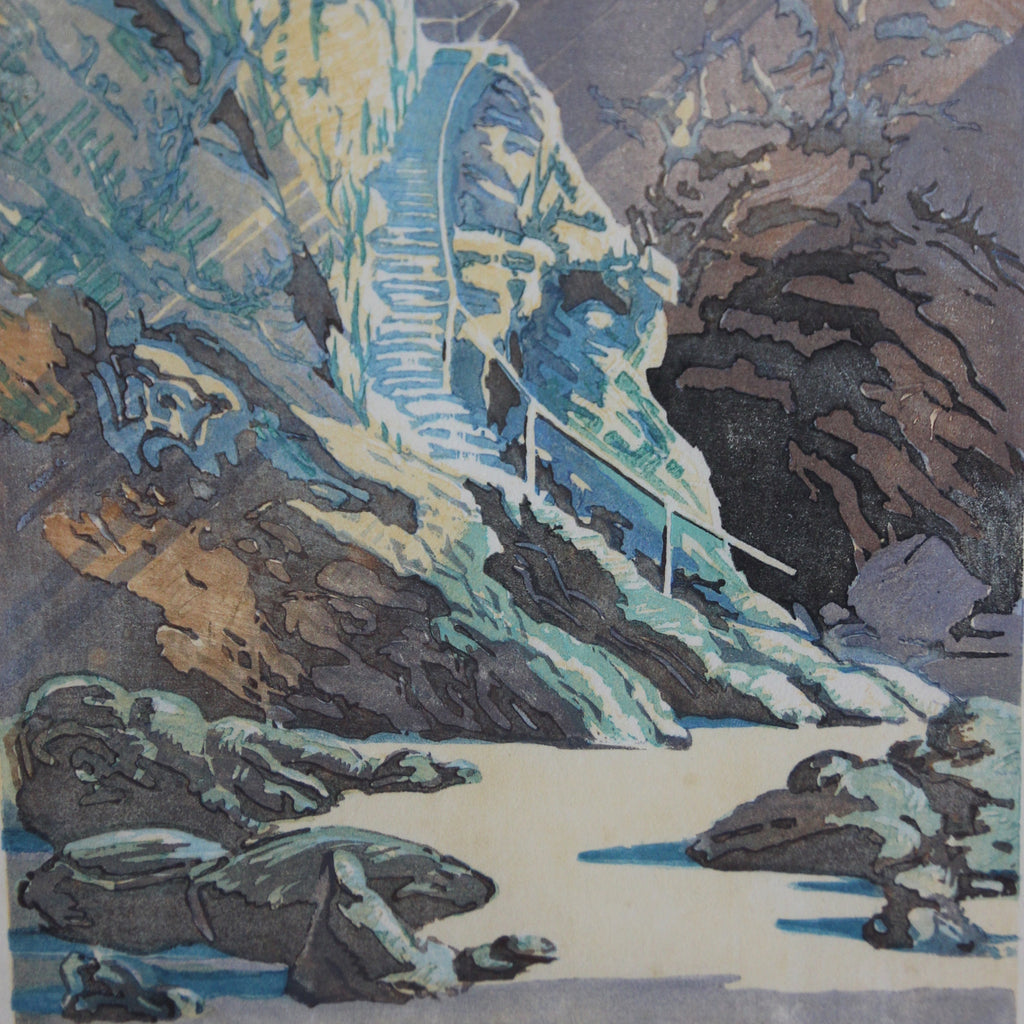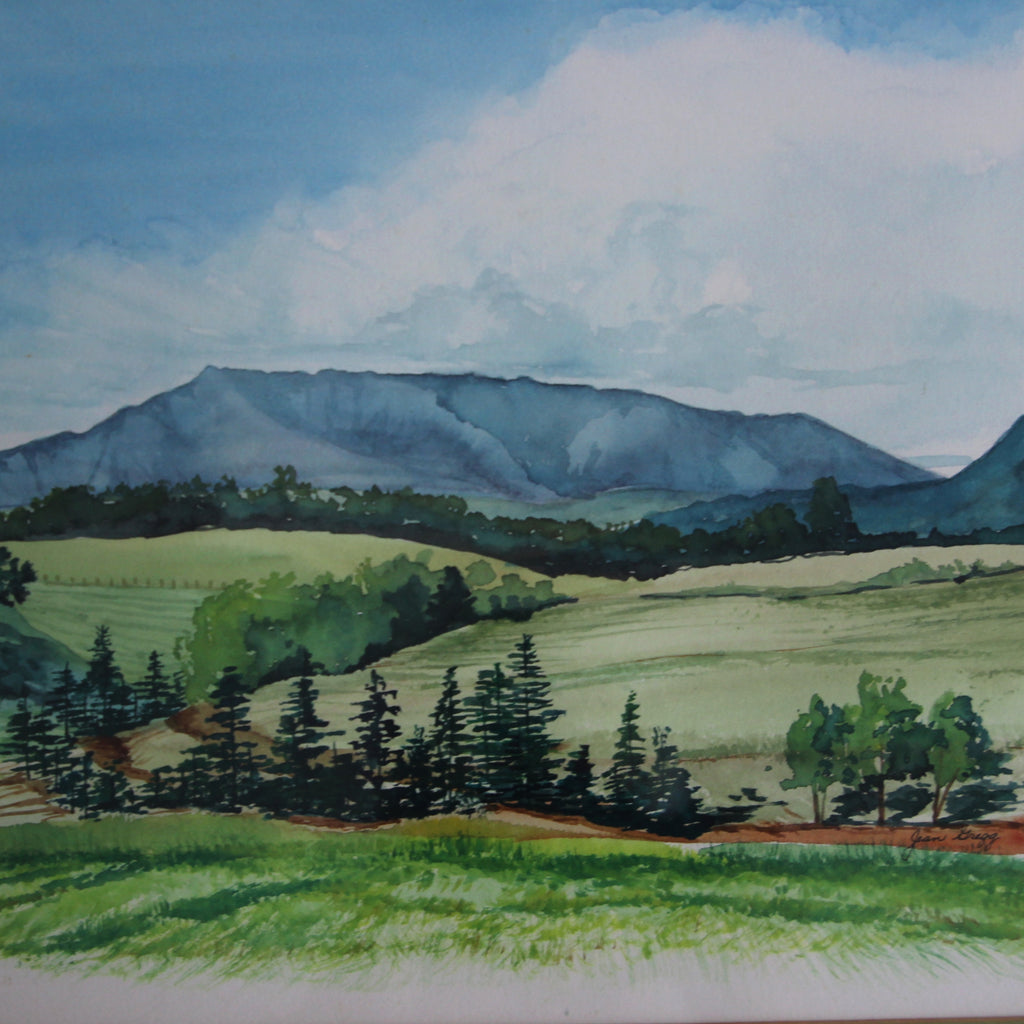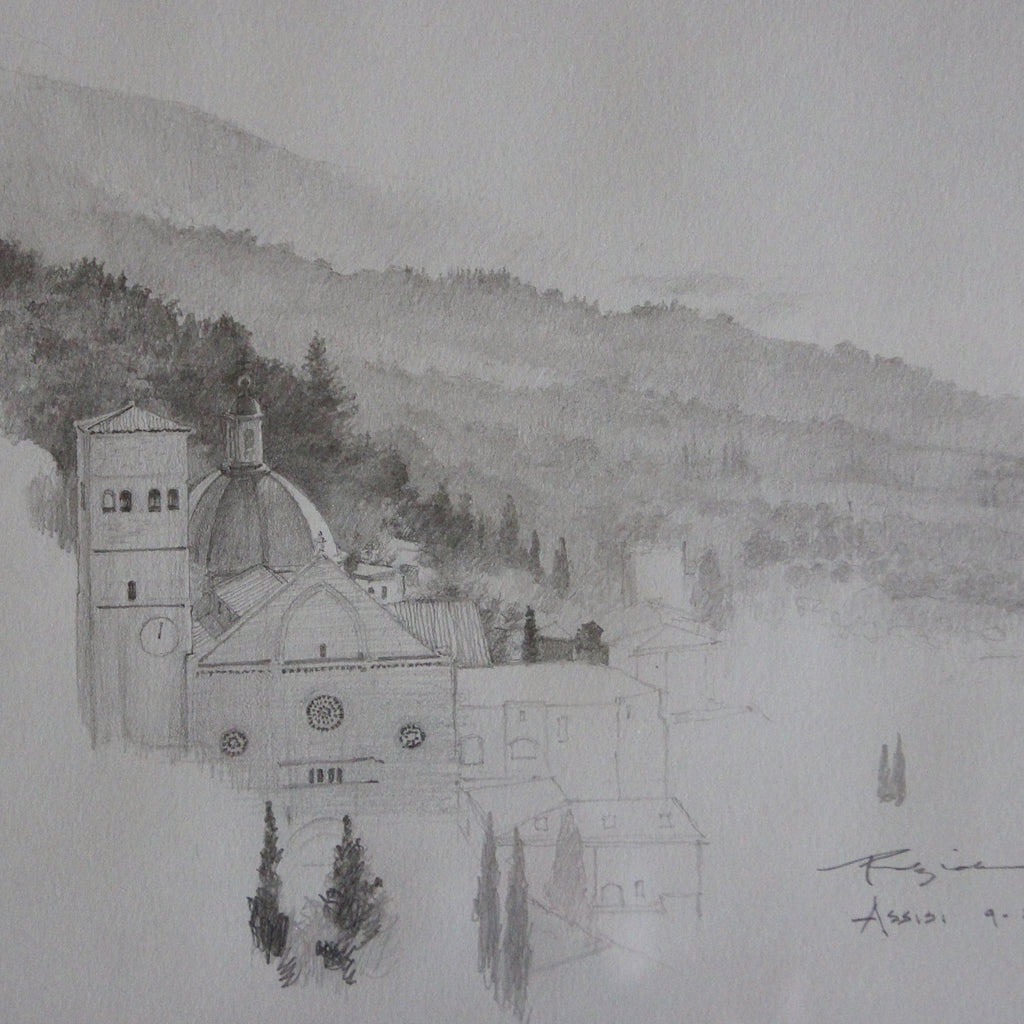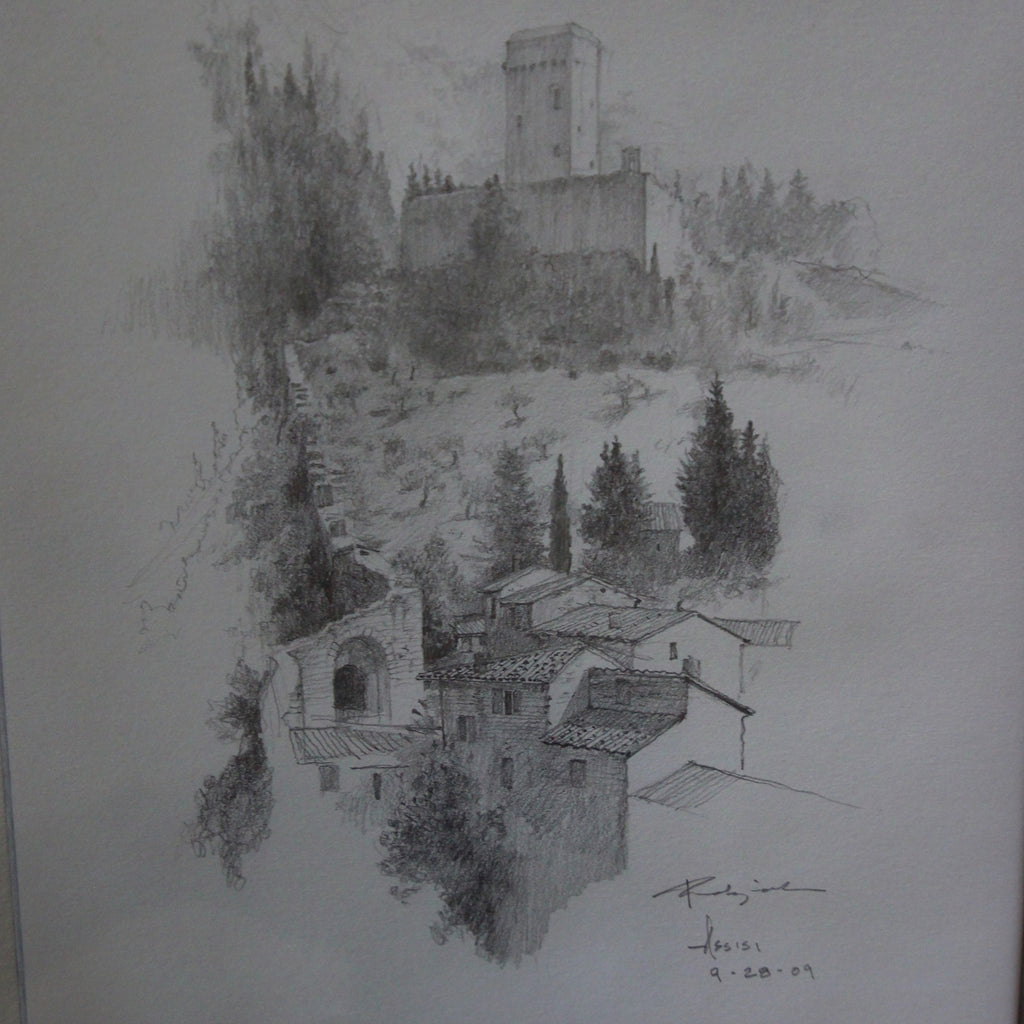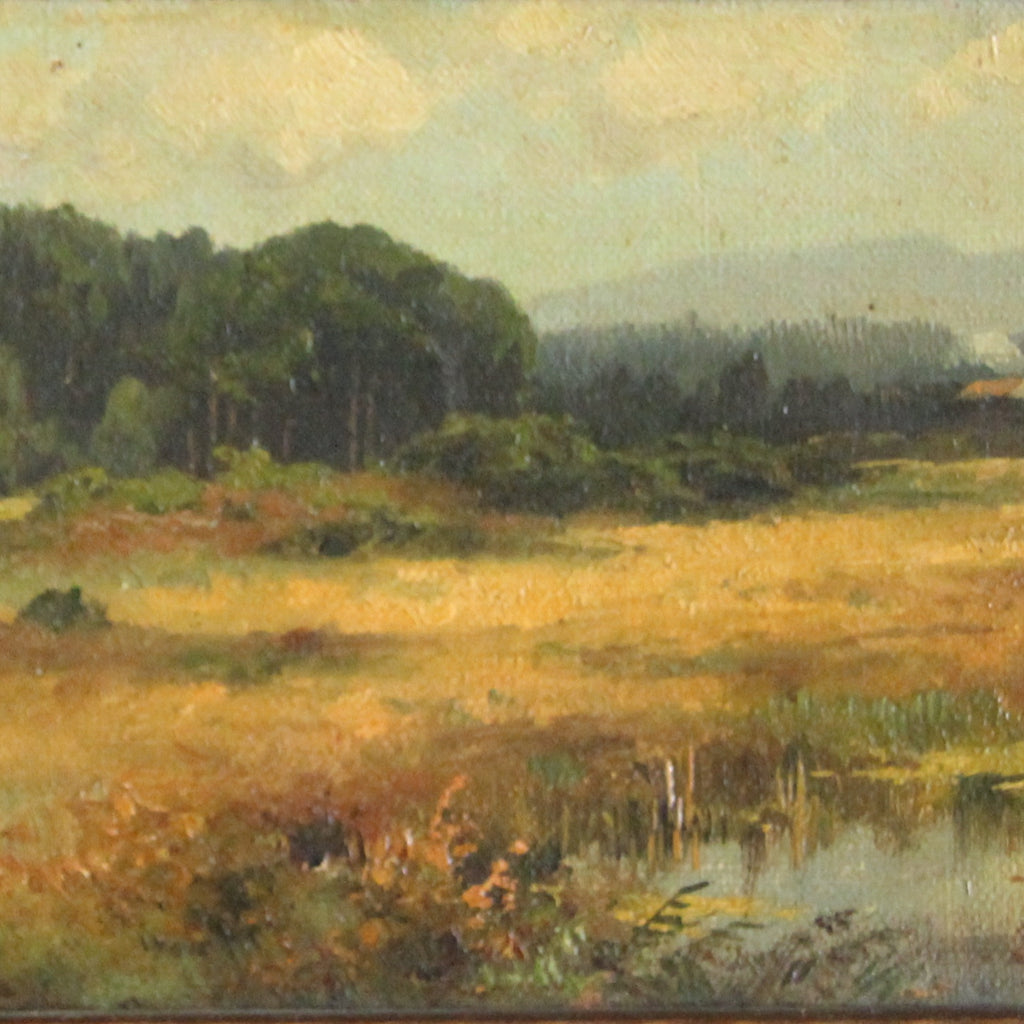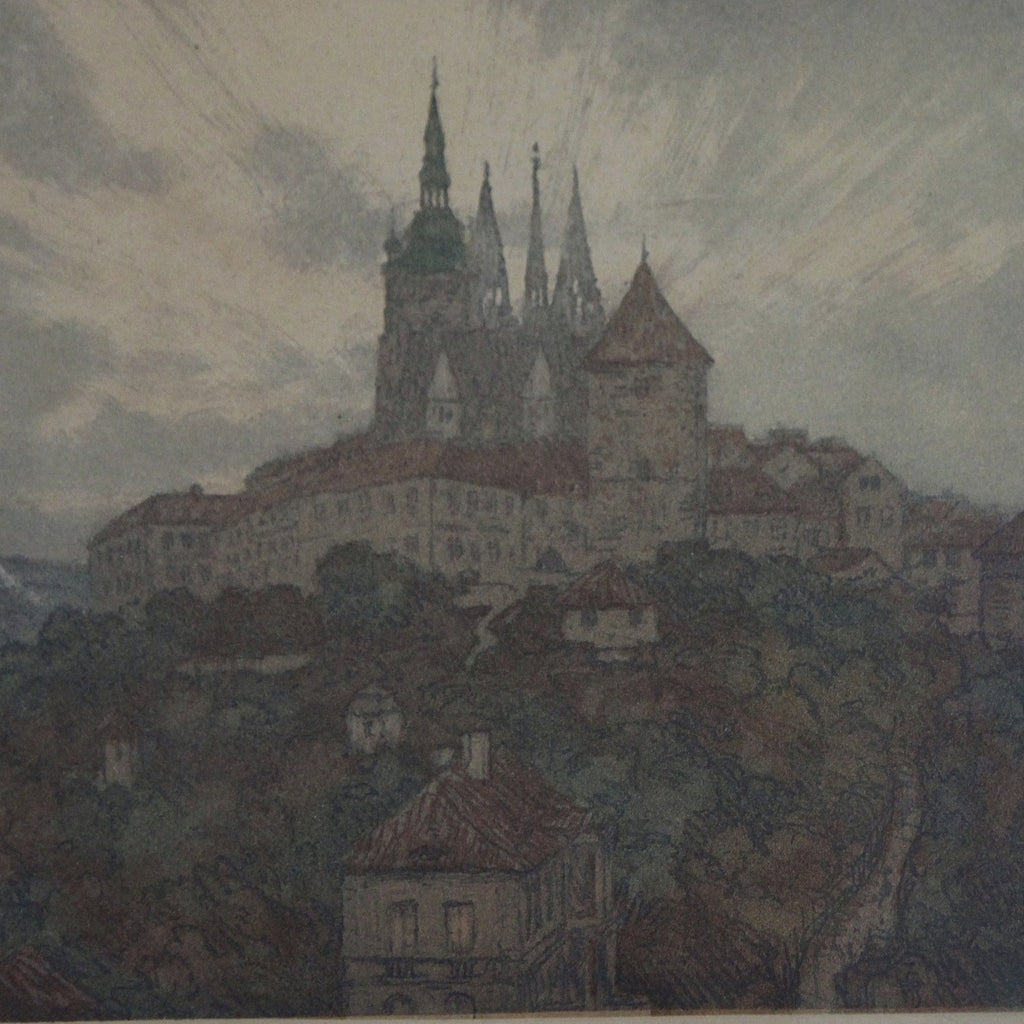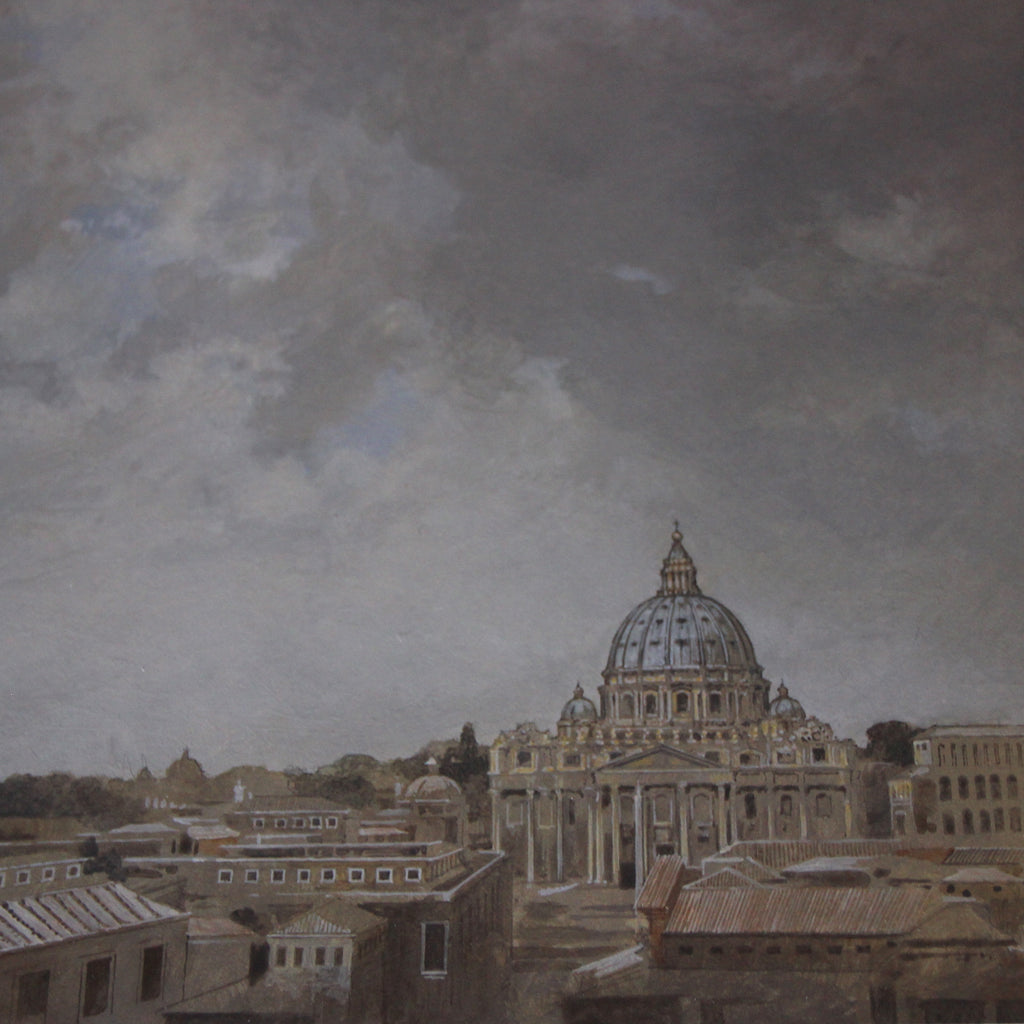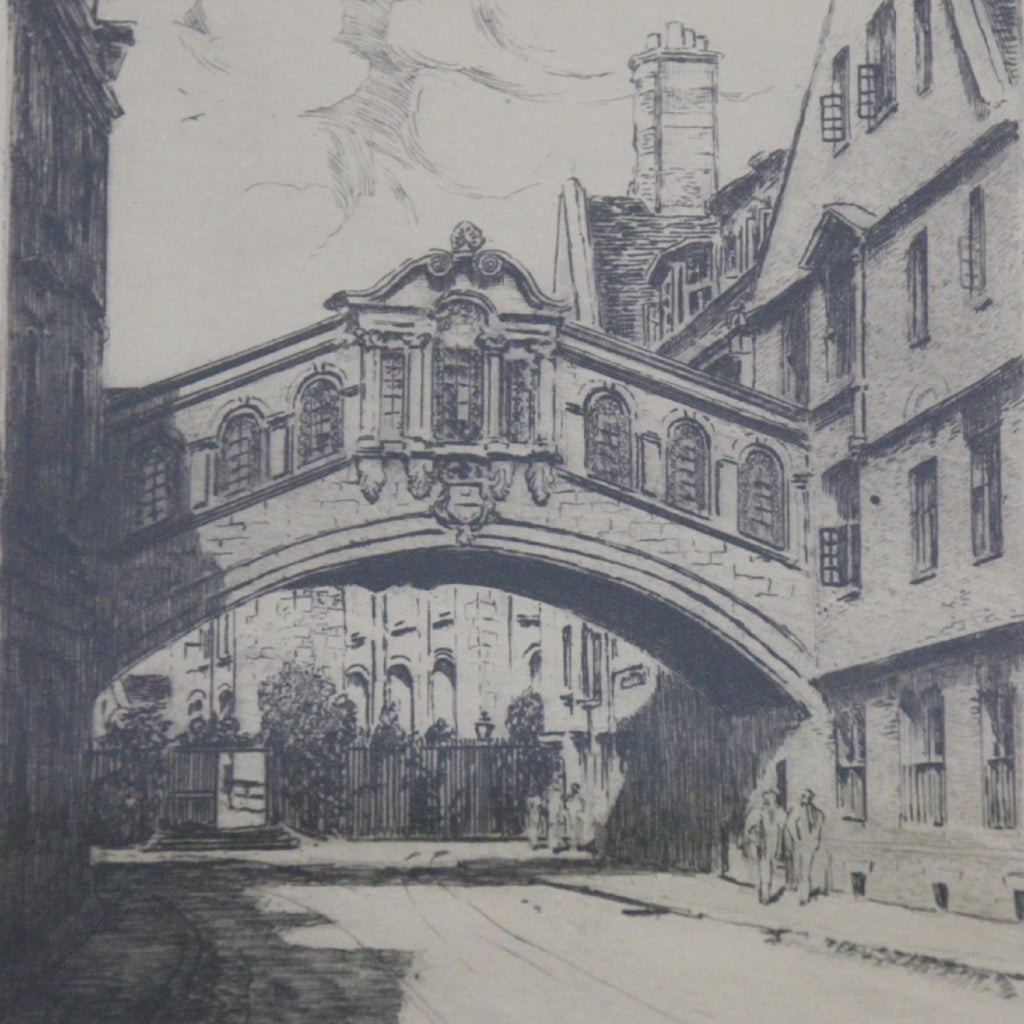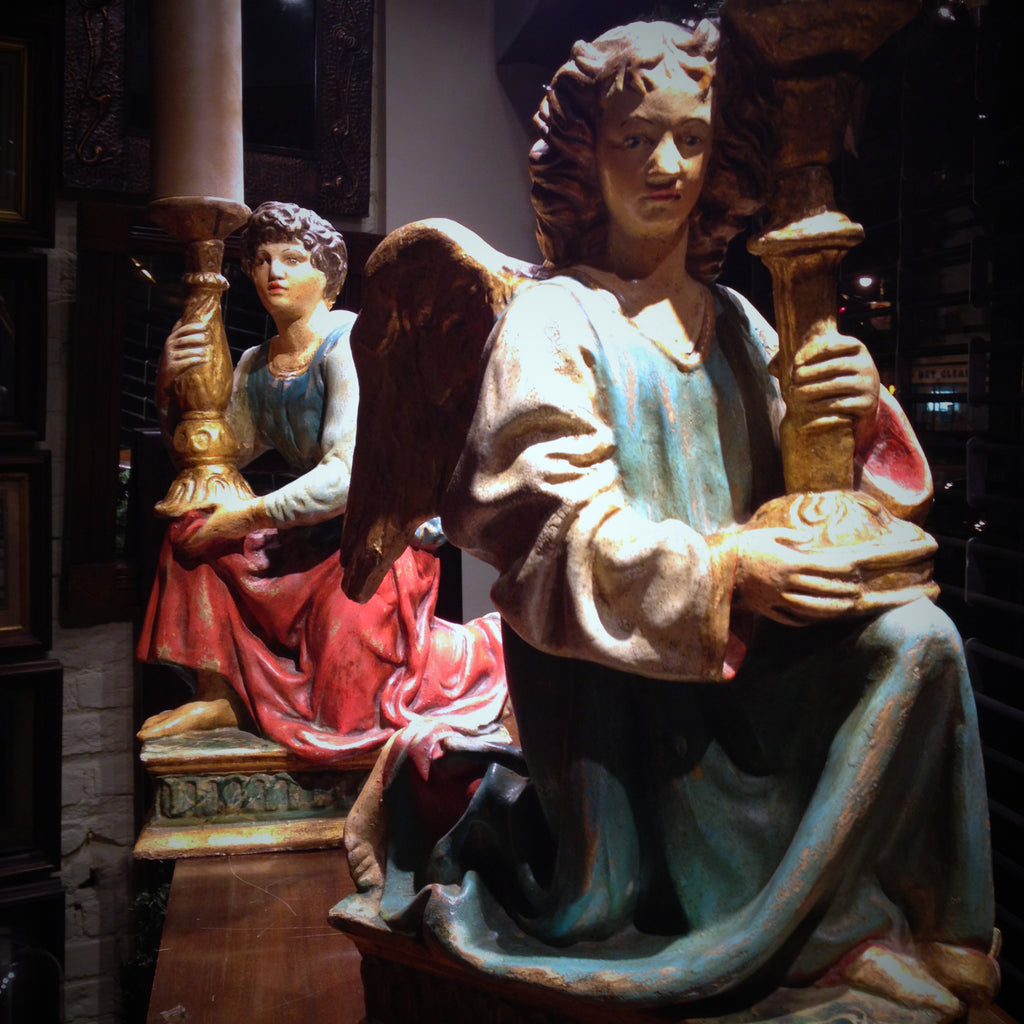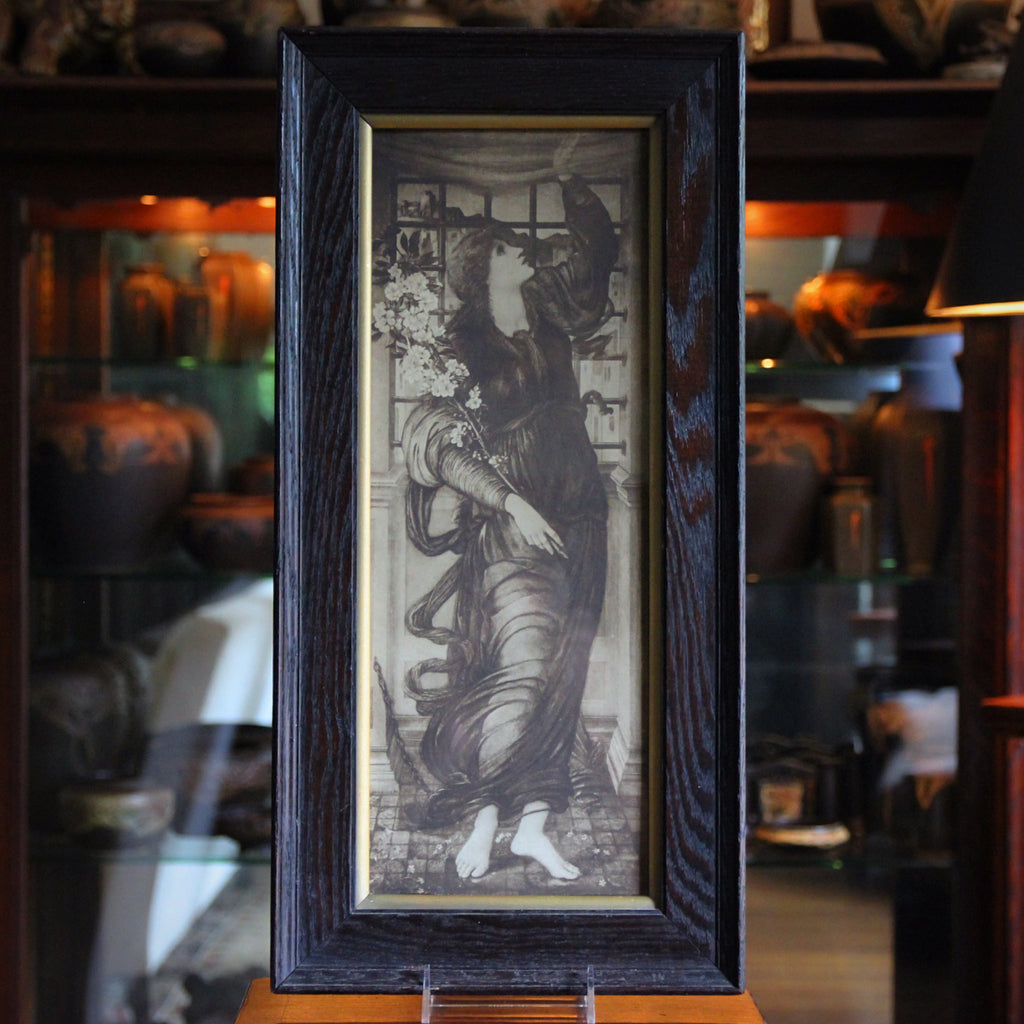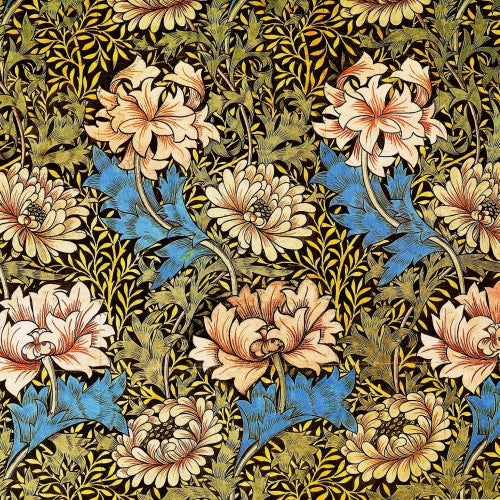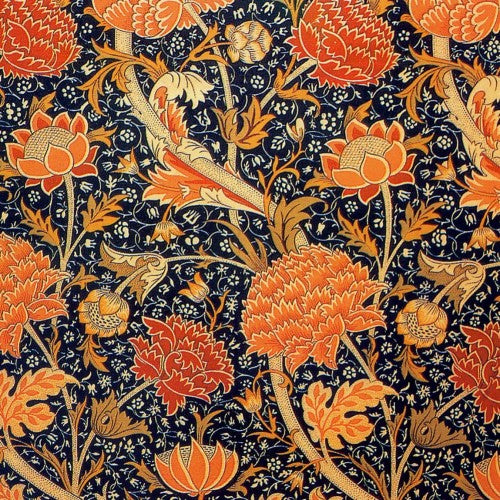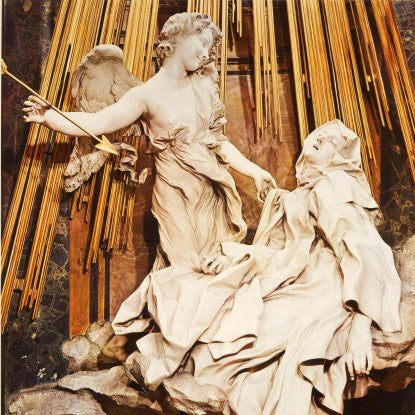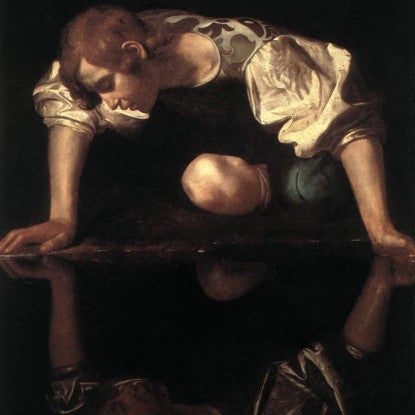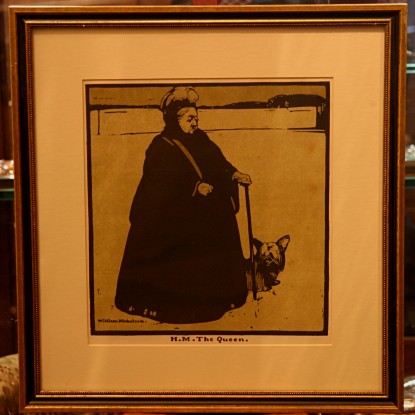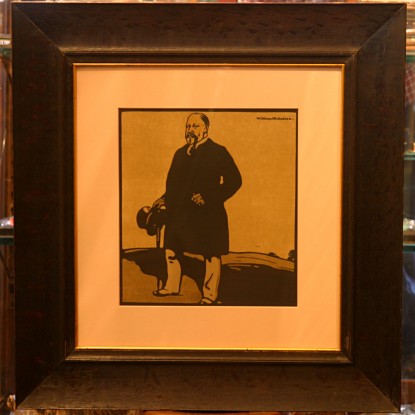JOURNAL — Artwork RSS
Happy Thanksgiving! We're thankful for many things: our families, friends, good health, and the rare day when the busyness of commerce comes to a standstill (at least for one day). And we're thankful for the blessings of wonderful customers who continue to support LEO Design. May you have a wonderful, safe and relaxing Thanksgiving. Take stock of that for which you may be grateful. And we look forward to serving you in the next few weeks. Shown above, a sculpture of The Sluggard by Sir Frederic, Lord Leighton (1830-1896). While Leighton is best known for his paintings, he did create three exceptional sculptures during his career (all male nudes). One day while Leighton was painting, his handsome Italian model, Gaetano...
Autumn in New York - Part Nine
Divine Egypt is an exhibit at the Metropolitan Museum of Art. While I love Egyptian history, art and artistry, I find the pantheon of Gods and Pharaohs to be overwhelming—and confusing. There are so many characters to consider—both divine and human—and there are variations and permutations which add further complexity to the list of names. The Divine Egypt exhibit was helpful in that the artistic objects were clustered together according to the individual god or goddess—not chronologically, not by kingdom, and not by some other scholarly theme. In this way, I was able to "sort-out" and mentally compartmentalize the abundant beauty presented before me. At the entrance to the exhibit, we are greeted by a diorite sculpture of the god...
Autumn in New York - Part Seven
Emmanuel Radnitsky—better known as Man Ray—was born in Philadelphia in 1890. At the age of seven, his family moved to Williamsburg, Brooklyn. His family worked in the garment industry—even running a small tailoring shop in their home. He studied art and technical drafting and was offered a scholarship to study architecture which he declined. He chose to pursue art instead. His family, though disappointed, allowed him to convert his bedroom into an art studio. In 1921, at the age of 31, Man Ray moved to Paris where he would live and produce most of his art. He died in Paris in 1976 and is buried in the Montparnasse Cemetery. Man Ray always considered himself a painter, though he is known...
Sargent's Travels
John Singer Sargent led a remarkable life. Not only was he preternaturally talented (as a draughtsman and painter) but he pursued his art by traveling to wonderful places. His deserved reputation as the finest portraitist of his time opened doors belonging to the rich and famous—many of whom would become social acquaintances, if not good friends. He befriended, travelled with, and captured on canvas some of the most interesting artists of his day. He also painted compelling and beautiful "everyday people" on his trips around the world: Italy, Spain, North Africa, America. His talent as an artist—and his alacrity in diverse social environments—provided a wonderful life for a man who aimed to live life to the fullest. Wouldn't Sargent have...
Sargent's Artist-Friends
One of the great blessings of being an artist is having friends who also are artists. Young (broke) artists can sit (gratis) as models for their friends. They can give pictures to their friends. Or they can trade works with their friends—thereby growing their collections and creating works which will have great historical importance in the future. John Singer Sargent was blessed with many artist-friends—many of whom he painted for pleasure (not as commissions). Shown above, an experimental double portrait of two friends of Sargent's, both French artists: François Flameng and Paul Helleu (c. 1880). It may have been inspired by a work by Frans Hals, The Banquet of the Officers of the St. George Civic Guard (1627) which Sargent...
Approaching Madame X
Madame X is, perhaps, John Singer Sargent's most famous painting. It is certainly his most notorious. Sargent kept it in his personal collection for 32 years, hanging it in his studios in Paris and London and exhibiting it occasionally. In 1917, he appealed personally to the director of the Metropolitan Museum of Art, imploring him to purchase the painting for the museum, saying, "I suppose it is the best thing I have ever done." They purchased the painting. Sargent breathed a sigh of relief, knowing that Madame X should now be well-protected. When I moved to New York City in 1990, the Metropolitan Museum still was (shamefully) hanging Madame X in a back stairwell. As mentioned previously, the academic art...
Sargent's Women
For a long time, John Singer Sargent was recognized principally for his society portraiture. He was the greatest portraitist of his time and he made his living painting pictures of wealthy people. He charged his patrons up to $5,000 for a picture (equivalent to $190,000 in today's dollars). Alas, it was this portrait work which would be disparaged by "academic elites" in the Modernist Era (educators, curators, art dealers, and jealous artists who lacked Sargent's technical brilliance). They viewed Sargent as "simply" a talented technician who painted flattering pictures of rich social climbers. It is probably truthful to say that, for this kind of money, the subjects wanted something impressive to hang in their dining rooms. But Sargent's oeuvre included so...
Sargent's Men
We came to New York City back in June with two purposes in-mind: to attend our dear friend, Anne Kaufman's, memorial service and to see the Singer & Paris exhibit at the Metropolitan Museum. (Had Anne still been alive and mobile, she most certainly would have come to the exhibition with us.) We succeeded on the first goal; it was wonderful to see Anne's friends gathered-together in her honor. But, on that Wednesday morning, as we walked-up to the museum, we were confronted with the big red signs: "The Museum is Closed on Wednesdays." During all my years living in New York, the Met Museum was always (and notoriously) closed on Mondays! We were so close! And, yet, we were...
Two Days More!
As we count-down to La Fête National—also called Bastille Day—we'd like to share a couple of handsome items from France, currently for sale in the LEO Design on-line shop.
Shown here, a pair of prints of the Louvre, printed (and hand-tinted with watercolor) in the Nineteenth Century (although they depict the castle in the centuries prior to that).
The images were first drawn by Francois-Auguste Trichon (1814 - 1898) and then engraved (in wood) by Ferdinand Delannoy (1822 - 1887) in 1881. After printing, they were hand-colored.
Broadway Nouveau
We have just acquired a handsome collection of Art Nouveau theatre programs, mostly printed between 1911 and 1919. They are a treasure trove of period design inspiration: the beautifully illustrated covers, the bold advertisements, the graphic layout of the title pages—even the styling (and the content) of the "editorial articles." Several of the programs come from 1918—the last year of The Great War and the year American forces joined the fight. As a result, many of the advertisements within those programs have patriotic or military-themed designs.
Sir William Nicholson - VII
Let's end our parade of William Nicholson sporting prints with this image, published in An Almanac of Twelve Sports in 1898. I have often wondered if the scene was (or was inspired by) African-American boxer Jack Johnson. It is a wonderful image, certain to be treasured by any pugilist (or a fan of such sport). It is mounted in an oak frame, from the same period as the print. While William Nicholson is best known for his handsome prints, he was also a wonderful painter. American painter, James McNeil Whistler, was a friend of Nicholson's and he vigorously encouraged Nicholson to pursue painting more seriously—which Nicholson did increasingly after 1900. Nicholson's portraits and landscapes are wonderful. But I especially love...
Sir William Nicholson - VI
I loved the George Clooney film, The Boys in the Boat. It tells the compelling, real life story of a group of poor college boys who form a rag-tag crew team who succeed in beating their rival, The University of California. These underdogs then go-on to best the elite East Coast Ivy Leagues at the Poughkeepsie Regatta, followed by all the international teams at the 1936 Berlin Summer Olympics. The film is an aesthetic feast—and it conveys the beauty (not to mention the blood, sweat and tears) of this most challenging of sports. Shown above, a William Nicholson sporting print depicting a rowing team on the water—which is being trained by their coach (astride a horse, along the river bank)....
Sir William Nicholson - V
I've never thought of "coaching" as a "sport"—though I will admit that it is a highly-physical, even athletic undertaking (for the horses, the coachmen and the passengers being tossed-about the carriage). Nevertheless, this Coaching print is part of a portfolio called An Almanac of Twelve Sports, published in 1898. Sir William Nicholson provided the artwork (woodblock prints which were then reproduced as lithographs) while Rudyard Kipling provided the verse.
Sir William Nicholson - IV
Shooting has always been a popular sport amongst British upperclass men. Weekend "shooting parties" at grand country estates were fashionable amongst the well-to-do. They were also satirized in movies like Gosford Park. Though these aristocratic sportsmen certainly would "muck about," regardless of the poor weather, they could afford certain hired luxuries like "beaters" (men to flush the birds out of the grasses) and "loaders" (who would quickly prepare the shooter's next gun so that the master could shoot continuously). A wealthy aristocrat would have a large estate and a permanent "gamekeeper" (and maybe an "under gamekeeper") who would maintain the semi-wild grounds and conditions for optimal animal breeding and replenishment. Gamekeepers would also try to prevent poachers and other predators...
Sir William Nicholson - III
Sir William Nicholson's London Types was published in 1898—13 printed portraits of quintessential London characters, presented as a bound portfolio. The series included such iconic Londoners as a Beefeater, a Policeman, a News Boy, a Horse Guard, a Barmaid and a Hawker selling trinkets. Shown above, a Flower Girl—probably selling her wares in early morning Covent Garden. These prints utilized the bold and simple graphics—with lots of heavy black line—for which Nicholson was well known. Irish playwright, George Bernard Shaw, wrote his famous play, Pygmalion, in 1912—some 14 years after this print was published. But most educated Brits were well-familiar with the Greek myth of the sculptor who fell in love with one of his creations, come-to-life. The play Pygmalion—and...
Sir William Nicholson - II
As a youth, Sir William Nicholson studied at an art school run by Bavarian-born (multimedia) artist Hubert von Herkomer. Herkomer was a painter, portraitist, filmmaker and music composer. In 1886, Herkomer built a home, called Lululaund (named after his late wife), in Bushey, a village about 20 miles north of London. The house was designed by the illustrious American architect, Henry Hobson Richardson, which was to be his only building in Europe. Richardson provided his design of the house in exchange for the portrait Herkomer had painted of him. In this home, Herkomer established his studio and an art school—in which the young William Nicholson studied. And it was here that Nicholson met his future wife, Mabel Pryde.
Sir William Nicholson - I
Sir William Newman Prior Nicholson (1872-1949) is amongst my favorite "Edwardian Era" artists. He was born in Newark-on-Trent, an "inland port town" about 125 miles north of London. He studied art from a young age and trained briefly in Paris as a young man. Although he was an excellent painter, he is best remembered for his signature prints—often woodcut block prints reproduced with the (somewhat modern) lithographic process. Understandably, these affordable works enjoyed a much wider distribution than his paintings were able to achieve.
Shown above, a portrait of American author Mark Twain. This print was published in 1902 as part of a portfolio of a dozen images of illustrious personages, titled Twelve Portraits—Second Series.
Brother Against Brother
Nathaniel Currier was born in Roxbury, a neighborhood of Greater Boston, in 1813. When he was eight years old, his father died, leaving him (and his 11 year old brother) to support his mother and two younger siblings. After several odd jobs, he found himself as an apprentice to a printmaker—and the trajectory of his life was determined. In 1835, at 22 years of age, Currier established his own print studio in New York City. His aim was to create "cheap and popular prints" for the American public. And he succeeded wonderfully. One of his earliest prints (in his very first year) depicted the ruins of The Merchant Exchange after a fire had swept-through downtown New York City. It sold...
The Dog Days of Summer - VIII
In today's selection, our dog plays a background role in this printed English hunting scene by Sir William Nicholson, R.A. (1872-1949). Nicholson was a wonderful fine artist. His painted portraits and still life pictures are wonderful. But he is most famous for his Late Victorian woodblock prints—which were reproduced in portfolios using the relatively new lithographic technology of the day. The shooter, wearing his natty green hunting coat, was printed as part of An Almanac of Twelve Sports in 1898. It is conservation framed in an equally handsome 19th Century frame—carved to imply rustic wood—which still wears its curdled, well-aged original finish. Print and frame make for a handsome, deluxe "package"—ready to hang in the office, den or sitting room....
Back to England - VII
I've already stated my admiration (my adoration?) of John Singer Sargent. In my book, he is the finest artist of the Modern Era. What I admire most about him is the bravado, spontaneity and confidence of his brushstrokes. He tells us so much with a single squiggle of his brush. And, although he was the finest of portraitists, one can only know him when they see a fuller representation of his work—especially the pictures he painted "for fun." Right or wrong, I feel that I know Sargent. I believe I can tell (within reason) what he was feeling when he was painting a particular portrait. My conclusion: he loved being with (and painting) fun, larger-than life women. And he really...
Back to England - VI
This morning we took the train from Oxford into London. We went into town to see the ravishing exhibit at The Tate Britain: Sargent and Fashion. My husband and I both would rank John Singer Sargent as the finest of Modern Era artists (where "Modern" is defined as "from the Industrial Age onwards"). We had hoped to see the same show in Boston, where it originated, but were unable to make that trip before it closed at the Museum of Fine Arts. So here we are—in London, where Sargent lived for a time and did a good bit of his work.
Back to England - IV
Elias Ashmole (1617-1692) was an English naturalist, politician and "collector of curiosities." Although he had aristocratic ancestors, his family had fallen into "a less exalted position" by the time he was born. Through good marriages (and his support of the monarchy during the English Civil War), he re-established the Ashmolean fortune. After Charles II was restored to the throne, a series of important appointments helped fund his incessant collecting of art and antiquities. He was especially interested in the sciences—which were advancing greatly during the Age of Enlightenment.
Back to the City - V
Italian Count Ugolino of Pisa was involved in the political struggles which ravaged Medieval Tuscan society. Like Dante Alighieri, the Florentine, Ugolino found himself on the wrong side of the political fight. As a result, in 1289, he was imprisoned in the Muda, a Pisan tower, along with two sons and two grandsons. The tower keys were flung into the Arno and the five family members were cruelly starved to death. Dante (then exiled in Ravenna) featured Ugolino in his Divine Comedy. As the count lays starving in the tower, his sons and grandsons beg their beloved father to eat them—thus preserving his own life. While Dante illustrates the complex anxiety of a man pondering the canabilism of his offspring,...
Back to the City - IV
Some painters seek to flatter their subjects. Others work very hard to do just the opposite. I suppose it comes down to this: Is the painter working for the sitter or is the sitter working for the painter? In the American Wing of the Metropolitan Museum of Art, I came across this charming scene, pictured above. A father kneels besides his son, perhaps explaining the painting to the lad, Washington Crossing the Delaware by the German-American painter, Emanuel Leutze (1851). I had never been drawn to the painting. It always seemed so staged, so theatrically heroic. It has always seemed (to me) to be a "highly-inventive portrayal"—though it does chronicle an actual moment in America's early years (Christmas Day, 1776)....
Back to the City - III
I was standing before my (likely) all-time favorite picture in the Metropolitan Museum of Art when I heard the rumble. It was more of a sound (and a vibration) than a shaking. "Do you hear that?" I asked Bob. It sounded like a slow-speed freight train passing-by on railway tracks—perhaps half a mile away. The only problem: there are no freight rail tracks in Central Park. And the New York City Subway System has spared Fifth Avenue any tracks buried below it. Moments later, the mobile phones of gallery guards began to ping. Husbands, wives, boyfriends and girlfriends began to text their loved ones to report the 4.8 magnitude earthquake which could be felt in the city. Some twenty-six minutes...
Boston's Arts
The Fogg Art Museum at Harvard University is wonderful. It's not very large—in fact, it is quite manageable for a two hour visit. But the collection includes works by many of the greats: studies and lesser-known paintings.
Shown above, a study of the seated figures for John Singer Sargent's El Jaleo, 1882 (the final painting which hangs in the Isabella Stewart Gardner museum, also in Boston). Sargent is my favorite "modern era" artist. With such economy, spontaneity and confidence—with just a few brush strokes—the 26 year old artist was able to paint a white skirt, conveying brilliantly how the fabric drapes over the woman's legs beneath and how the light plays off of the folds of her garment. Genius!
The Quest Continues
I have long wanted to visit the Fogg Art Museum at Harvard—especially once I learned that it possessed George Frederic Watts's painting of Sir Galahad, created between 1860 and 1862. I had long assumed that the picture was in England. After years of pre-internet searching, I finally learned that it was right here in America, at Harvard. Watts, a favorite of mine, used his then wife, the famed English actress Ellen Terry, as his model for the romantic youth. The painting was wildly popular and for several decades it was reproduced (in sepia tones and, later, in color) as museum art prints. Many a boy's bedroom would have been decorated with this print—considered a heroic role model for any young boy. Over...
London Calling - IX
It's hard for me to name a favorite London museum. Let's just say that the Tate Britain is one of them. For me, a visit to the Tate is a walk down Memory Lane, enjoying my favorite, painted hits. So, for my last full day in London, I went to visit the Tate. The museum claims to present "500 years of British Art"—and its collection is, indeed, vast and wonderful. But how "British Art" is defined seems rather elastic to me; many of the museum's works have been sculpted or painted by non-Brits. Perhaps a work of art (even one by a foreign artist) qualifies as "British" if it was conceived on British (or United Kingdom) soil? Or perhaps it's considered "British"...
London Calling - VIII
Shopping, theatre and museums! My three favorite things to do while in London. Having finished packing-up all my purchases (thus far), I headed to Trafalgar Square to visit the National Portrait Gallery and the National Gallery of Art—two of the great art museums in the world. Shown above, a portrait of Queen Elizabeth II, painted in 1969. The trustees of the National Portrait Gallery wanted to commission a new portrait of Her Majesty for their collection and the Queen expressed interest in sitting for Italian portraitist Pietro Annigoni (who had painted her 15 years earlier, as a young queen). It took 18 sittings (over 10 months) before the painting was unveiled in 1970. The bold, regal likeness—with its monumental, Modernist composition—captured...
The Sporting Life - III
A country squire works his fields, shotgun in-hand and bird dog at his side. This lithographic print, published in 1898, is the work of Sir William Nicholson, RA. It was published in London as part of a bound portfolio titled An Almanac of Twelve Sports. It is framed in a rustic "woodland" carved frame—a decade or two older than the print itself.
Franz Liszt
Romantic musical superstar, Ferenc Liszt, was born in the Hungarian village of Doborjan—at the time part of the Austro-Hungarian Empire and today a part of modern Austria (called "Raiding"). Ferenc (called "Franz" in the West) was born to a musician father who began teaching his son to play the piano by the age of seven. By eight Franz was crafting simple compositions and, by nine, he was performing concerts. After hearing the prodigy play, a group of wealthy music patrons agreed to finance Franz's musical education in Vienna—the capital city of the Austro-Hungarian Empire. Liszt spent the rest of his boyhood studying, composing and touring. When his father died in 1827, the 16 year old Franz quit touring, moved with his...
Unearthing a Trove of Nicholsons - III
Let's end our tribute to the brilliant English artist, Sir William Nicholson, with a tribute to the brilliant American writer, Samuel Langhorne Clemens—better known as Mark Twain. In 1899, Nicholson published his first series of Twelve Portraits, published in London by William Heinemann. This was after Heinemann had already published three other Nicholson portfolios: An Almanac of 12 Sports (1897), London Types (1898), and The Alphabet (1898). Heinemann was keen to keep the business rolling. He proposed a second series of twelve portraits—and even suggested the list of luminaries to be included. The problem was, Nicholson was quite busy! He was running a successful graphic arts and printmaking business with his brother-in-law, James Pryde (called The Beggerstaffs). He was asked...
Unearthing a Trove of Nicholsons - II
In the late Nineteenth and early Twentieth Centuries, a number of Black (mostly American) boxers persevered in their challenging rise to prominence in the competitive boxing circuit. Such matches were certainly freighted with measures of fear, racism and "exotic spectacle"—especially when a Black fighter was matched with a White one. But Black boxers were popular, some developing legions of fans—in America and internationally.
Jack Johnson (1878-1946) was one of the most famous Turn-of-the-Century African-American professional boxers. Others included Joe Jeanette, Sam Langford and Sam McVey.
Unearthing a Trove of Nicholsons - I
I've been collecting William Nicholson prints for nearly thirty years. When I closed the store in Greenwich Village (and moved to Pittsburgh), I brought with me a flat file full of "frameable orphans"—antique pictures waiting to be adopted, that is, placed in a suitable, "forever frame." These prints and paintings have been sitting (in the dark, in Pittsburgh) for the last six-and-a-half years, waiting for me to find them frames. In truth, some of these pictures (including a number of Nicholsons) had been sitting in that flat file for an additional 20 years before the move. What slows-me-down is finding the right, period-correct frame for each special print. Although I collect antique frames, only a small percentage of my "private reserve" frame...
In Search of the Pharaoh's Daughter - XV
Today proved to be an unexpectedly touching day. We visited Mount Nebo, in Biblical Moab (now modern day Jordan), the site where God lead Moses to view the Promised Land. As the biblical account tells us, Moses was allowed to see the land with his own eyes, however, God informed Moses that he would not make it there himself. He was to die at Mount Nebo and would be buried there. Shown above, the view Moses might have witnessed some 3,500 years ago. Jerusalem and Jericho are hidden in the haze. Today there is a Franciscan Church over the site presumed to be his grave (though there are other competing claims, as well). Being able to visit such a site—any...
In Search of the Pharaoh's Daughter - IX
Hatshepsut (1507-1458 BC) had real Girl Power. She was the daughter of Pharaoh Thutmose I, married her half-brother, King Thutmosis II, and served as his queen. When the king died, Hatshepsut's stepson, Thutmose III, was crowned Pharaoh at the age of two. Hatshepsut served as Queen Regent to her stepson, ruling in his stead. That, however, didn't suit Hatshepsut's ambition, ability and power. She crowned herself King and began portraying herself with all the male titles, dress and appurtenances that came with the masculine office. Hatshepsut built many important monuments during her reign including the Temple of Karnak and her own impressive mortuary temple, shown above. Hatshepsut insisted in being portrayed as a man (as seen in her sculpture as...
In Search of the Pharaoh's Daughter - VIII
King Tutankhamun ascended the throne at nine and was dead at 18. This left insufficient time to plan and start building (let alone finish) a proper tomb for The Boy King. Instead, the tomb of an aristocrat in The Valley of the Kings was appropriated and adapted—very quickly!—for the burial of King Tutankhamun. Embalming and mummification took about 70 days, which did not leave much time for an elaborate tomb to be built, decorated and furnished. Howard Carter was a British archaeologist working in Egypt whose exploration was funded by Lord Carnarvon (of Highclere Castle of "Downton Abbey" fame). He began working in the Valley of the Kings in 1906 and is credited with discovering the Tomb of the pharaoh...
In Search of the Pharaoh's Daughter - VII
We awoke this morning to a pastel view of The Valley of the Kings, across the River Nile, in Luxor, Egypt. We were eager to explore the hot and dusty limestone crevices of this hidden valley—a place where pharaohs, queens and (invited) noblemen have lain buried for thousands of years. These desert mountains are certainly an inhospitable place for nosy on-lookers or ruthless grave robbers. The pharaohs (and their teams who planned their funerals) believed that this desolate place would provide privacy and protection until their royal souls could come back and re-animate their carefully preserved corpses. But people did find their graves—grave robbers, mercenaries and scholars—some as far back as antiquity and some in the Twentieth Century. Though the...
Back To The City - Day 3
The highlight of my visit to New York was seeing the wonderful exhibit of paintings by Joseph Christian Leyendecker at the New York Historical Society. (Followed by my tour of the Society's Tiffany lamps on the fourth floor, more about that tomorrow.)
The painting above, In the Yale Boathouse, is one of seven works he created for the July 1905 issue of Scribner's Magazine, illustrating Ralph D. Paine's article "A Victory Unforeseen."
Before there was Bruce Webber and Abercrombie & Fitch, Leyendecker created a Turn-of-the-Century standard of aspirational American male beauty. For me, "aspirational" is a key word. When I behold Leyendecker's riveting images, I often perceive a touch of sadness in his paintings.
Notes From Japan - Part Five
My primary reason for traveling to Japan was to hear the opera, Don Giovanni, for which my husband, Robert Perdziola designed the sets and costumes. Tonight was the premiere of the "International Cast," with principal roles sung by Canadians, Americans and Europeans. Tomorrow night the "Japanese Cast" takes the stage for their premiere.
The Japanese producers—administrators, craftspeople, crew—work very hard and invest heavily to bring Bob's designs to life. This team of people respects (and honors) talent, artistry and beauty. So it is extremely fulfilling for Bob to be able to work here—where people at every level of the organization make every effort to execute to the highest possible standard.
Notes From Japan - Part Two
Kobe is an important, bustling port town along the southern coast of Japan's main island, Honshū. Kobe is squeezed between the Rokko mountain range and the crescent-shaped Osaka Bay. Osaka lies across the bay from Kobe and Kyoto is about 45 miles away. In the second half of the Nineteenth Century, Kobe was amongst the first ports to open-up to trade with the West—and developed rapidly in wealth and infrastructure. Like other important Asian port cities—Shanghai, Hong Kong—Kobe grew wealthy from the trade and developed an international, cosmopolitan personality from the interaction. The city, though modern and thoroughly Japanese, is dotted with remnants of the Late-Victorian and Edwardian era Western influence—buildings and houses that were built by Western merchants and...
Juneteenth
President Lincoln's Emancipation Proclamation went into effect on 1 January 1863. From that point, all enslaved people in Confederate states were designated legally freed. Texas didn't get the message. Rather, Texas refused to comply. For an additional two and a half years, Texas continued to recognize slavery—in flagrant violation of the Emancipation Proclamation. On 19 June 1865, U.S. Major General Gordon Granger led a Union Army into Galveston, Texas, to enforce the President's order—two months after Lincoln's assassination. Granger's action ended slavery within the Confederate states. Slavery in other (non-Confederate) states would be abolished later the same year, with the final ratification of the Thirteenth Amendment (on 6 December). "Juneteenth" is a portmanteau of two words: "June" and "Nineteenth." The...
The Good Shepherd
In truth, "The Feast of the Good Shepherd" was last Sunday, 30 April. Alas, I had not yet acquired this Late-Nineteenth Century Italian print of The Good Shepherd in time. So I'll share it now.
The lithographic print is nice, if not "important." What really sets-apart this piece is the exquisite Italian frame. Tiny pieces of wooden marquetry—and lots of those pieces!—are precisely cut and laid finely into the wooden frame. Under close inspection, one can really appreciate the painstaking fastidiousness of the craftsman. From a distance, the graphic pattern of the woodwork seems to radiate energy outward—giving the Christ figure a "halo-like" presence.
Coronation Day
Today in England—for the first time in 70 years—a new British monarch will mount the throne: Charles III. Charles has been Prince of Wales for 65 years, from the age of 10 (although he would have to wait another 11 years for his investiture, in Caernarfon Castle in Wales in 1969). I will be-up early this morning to witness the festivities. No one can put-on a pageant like the Brits (except, perhaps, for the Vatican). I am eager to see the beauty, precision and planning—all on glorious, eye-popping display. And I anticipate that many people will be surprised at the highly religious dimension to the coronation—especially since the majority of us have never witnessed an English coronation ceremony (the last...
Martin Luther King Day
Today we honor the legacy of one of America's greatest leaders—indeed, one of the World's greatest leaders—Dr. Martin Luther King, Jr. That Americans—leaders and followers alike—would more closely follow his enduring example of seeking non-violent (but overdue) change. MLK remains the finest illustration of Christian Love seeking Social Justice. May the holiday be one of rest, relaxation and reflection--with, perhaps, a measure of service to others. And, speaking of fine illustration, I am so very impressed by this 2008 portrait of Martin Luther King sketched by Chinese artist Mei He. Born in China, she was trained in Sichuan after which she attended the Savannah College of Art and Design. In a world where hand-sketching often is neglected, even in...
The Cypress
Cypress trees are the tortoises of the plant world; they grow very slowly and some can live 600 years. They seem to get-by despite harsh conditions with meager sustenance. Cypresses comprise a broad family of Conifers—that is, "cone-bearing" evergreens. Their leaves have a rubbery, scaly, needle-like appearance, with a "braided" effect, which makes them suitable for arid climates. Leaves like this tend to conserve water, unlike broad, flat leaves which encourage faster rates of evaporation. And the plants emit a clean, piney fragrance. Cypresses run the gamut from ground-covers to shrubs to tall trees. Mediterranean cypresses are tall, narrow and pointy, often lining a roadway or property line. Monterey cypresses appear windswept, stunted and hunched--found clinging to harsh and rocky cliffs along...
Old Folk, Sunday Best
I have never been overly charmed by folk art. Folk craft, yes, sometimes. But I always have preferred a little more academic rigor in the paintings and drawings I have collected. So, when I purchased this picture some twenty years ago, I bought it solely for the gilded Nineteenth Century frame—not for the painting. I intended to use it to reframe a (preferred) painting or print some day. I stored-away the frame (and its picture) amongst my collection of frames-in-waiting. For the past few years, I have been one of forty dealers at the Antique Center of Strabane, in Canonsburg, about 20 miles south of Pittsburgh. Being more-removed from urban life (and closer to West Virginia), the clientele seems to prefer a...
Countdown to Christmas - XII
When I was a Greenwich Village shopkeeper, we kept LEO Design open until 10:00 pm on Christmas Eve. We didn't do a ton of business after 6:00 pm, though we did entice a few relaxed and cheerful souls—ambling home after a nice dinner and a few drinks—and we were able to clean-up the shop after a busy Christmas week. At LEO Design, we had another Christmas Eve tradition: we would clear the window of all merchandise and install our pair of polychromed Italian terra-cotta angels, modeled after the pair standing vigil at Saint Domenic's tomb in Bologna, Italy. Michelangelo carved the original male angel. I had bought these angels from an Italian import showroom in 1995, our first year of business....
Countdown to Christmas - VIII
Christmas is rumbling toward us! It's only five days away!
One can nearly hear the clatter of hooves, the rumble of the coach, and the shouts of the coachman reverberating off of this print, made in London in 1898. It was first hand-carved as a woodblock print by Sir William Nicholson, RA, who then re-printed it with the "more modern" lithographic technology. Tinted highlight color would then be applied by hand. It was published as one in a portfolio of prints—one for each month—called An Almanac of Twelve Sports. Different "sporting" activities were depicted, accompanied by text written by Rudyard Kipling.
Countdown to Christmas - I
Sir William Nicholson (1872-1949) was a British artist. He began his commercial career as a graphic designer and printer, working with his brother-in-law, James Pryde, in a company they called The Beggarstaffs. He is best known for his wonderful woodblock prints which he reproduced with the relatively modern lithography. He produced four series of prints—published as bound portfolios—including one called London Types (1898). The print of the Flowergirl, shown above, is from that portfolio.
Nicholson carved the original printing blocks in wood. After printing-up a good copy, he used lithography to reproduce it for the final prints. Some of the litho prints were also hand-colored before binding.
Tandy Flashback
When I was a kid, in the Sixties and Seventies, lots of boys wore leather belts with their names embossed in the leather along the back of the strap. The belts came pre-printed with scrolling Western botanical patterns, meant to be "carved" (or embossed) by the hobbyist, after which he would stamp his moniker—letter by letter—at the center back of the belt. Leather working kits were popular and boys might receive the kit at Christmas or for their birthdays. I recall the kits were sold by "Tandy," a mail-order company which had some mysterious connection to the uber-nerdy "Radio Shack."
Welcome, December!
December is here—the final month of 2022! Before you know it, the New Year will have raced to take its place. December brings the shortest days, the Winter Solstice, and, of course, Christmas. It also brings Winter Sports on snow and ice. Shown here, a print titled "Skating" by Sir William Nicholson, RA. It's the December offering from his "Almanac of Twelve Sports" (published in London in 1898). The image depicts a woman—fully and beautifully dressed—learning to ice-skate while supporting herself with a chair. Nicholson began these prints as carved woodblocks. But, once the blocks were created, he would make an initial woodblock print and then use the more modern method of lithography to print-up the final works. After Nicholson...
Man or Horse?
When I acquired this English print, a hand-tinted etching of Rob Roy from 1832, I was unsure if the title referred to the man or the horse. (And I still am.) After two hours of research, I have decided to present the two options—and leave it up to you, gentle reader. The historical figure, Robert MacGregor (1671-1734), known as Rob Roy, was a cattle rustler, brigand and hustler who would shake-down other farmers for "protection money." Over the centuries, Rob Roy's thuggish reputation has evolved into a heroic Robin Hood type, in part thanks to Sir Walter Scott's 1817 novel Rob Roy (which manipulated the facts to craft a more compelling novel). Film versions have, likewise, served to lionize the...
Unknown Stories
These days, we take photos—and photo-taking—for granted. The most famous (or vain) amongst us may be captured in multiple photo clicks every day. Some of these photos may even be shot by the subject himself! (Vulgar? I'll let the reader decide.) But, in the Nineteenth Century, when photography was fairly new (and a highly-specialized undertaking), ordinary people might only take two or three photos in their entire lifetimes: at marriage, before going-off to war, after establishing a successful business. Wealthy families may have a studio portrait taken of the family with young children—or, perhaps, just the children alone. In the early Twentieth Century, as photography became more common (and less expensive), tourists might encounter opportunities to take "novelty shots" while...
A Moment in Time
Although this photo was taken more than 150 years ago, it still looks as fresh and energetic as it did the moment the camera shutter was deployed. Perhaps it's something about photos—in particular, good photos—that makes them timeless across the decades. The young man in this photo (taken around 1865) was (about) 25 years old. This means he was born around 1840. He'd be closing-in on 200 years old today. Yet, at least in this photo, he'll always be a young man. Handsome, somewhat confident, looking-forward (I presume) to his future despite the difficult time in America. One will never know if this young man had a long or short life. Did he accomplish much or very little? Was he...
Countdown to Father's Day - IX
For the cultured Dad: a bronze-clad bas relief plaque of Hungarian composer and pianist, Franz Liszt. Liszt was fascinated with his father's playing of the piano and string instruments. By seven, his father was giving him lessons. By eight, little Franz was composing rudimentary music. His talent caught the attention of music patrons who sponsored his studies, as a youngster, in Vienna. When the 16 year old Franz's father died, his family moved to Paris where the boy needed to work to help support his family. He taught piano lessons and found himself racing around the large city to keep his far-flung appointments. Working long, irregular and late hours, Franz began drinking and smoking—habits he would maintain throughout his life.
"Hope" Springs Eternal
Sir Edward Coley Burne-Jones (1833-1898) was an English Pre-Raphaelite painter and designer who co-founded the William Morris design firm in 1861. Though he is best known for his lush and romantic paintings, he excelled at stained glass design and is partly responsible for the renaissance of the medium in Nineteenth Century England. Examples of his stained glass work decorate many British churches and university buildings. Additionally, Burne-Jones worked in ceramic tiles, jewelry, tapestries, mosaics, book illustration and had one notable (and unsatisfying) stage design commission, King Arthur starring Ellen Terry as Guinevere. Edward Burne-Jones was considered a star within the contemporary Aesthetic Movement in England. Mrs. George Marston Whitin, an American collector, commissioned a painting from Burne-Jones in 1896. She...
Christmas Eve
It's Christmas Eve—and we continue our annual tradition (now in its 26th year) of putting our Italian Christmas Angels into our shop window (or what now serves as our on-line "shop window").
In 1995, the year I opened LEO Design on Bleecker Street, I purchased this pair of Italian terra-cotta angels. I found them in an Italian "handcraft showroom" in the "Gift Building" at 225 Fifth Avenue (now shuttered). I was aware that they were not antiques, but that's all I knew about them. I just knew that I loved them! In time, after a bit of research, I learned about them—and came to love them all the more.
Persian Delight
Since the Medieval Period, miniature painting enjoyed a glorious place in the courts of the Persian Empire. Such works were originally done in books or bound as collections of paintings. Sometimes these paintings would express religious themes or stories, like illuminated manuscripts. Other times, they would depict scenes from contemporary life or from important events in history. While some Islamic art forbade the depictions of the human figure, Persian art never prohibited the representation of the human form. Since these paintings were small and discreet—stored in private books and only shared privately, with select viewers—the portrayal of human characters was allowed. Larger, more-public works (like a painting on a wall) would be expected to adhere to the more severe restrictions.
Coming-Out
Today is National Coming-Out Day. Every 11 October—since 1988—the day has been celebrated to encourage members of the LGBT community to come-out to friends, family and colleagues. Since homophobia and bigotry fester in conditions of deception, lies and silence, coming-out is a powerful way to educate the broader community that gay people are contributing and valued members of the society at large. How can bigots remain bigoted when they know and love openly gay friends, colleagues, children, siblings, parents or other family members? The bronze sculpture, shown above, was created by artist Luke Gwilliam in the 1950's. It portrays a lithe man, removing his tight garments—perhaps symbolic of a gay person freeing him/herself from the binding restraints of a restrictive society....
The City by the Bay
Let's end our fanciful summer holiday by pulling into the Bay of Naples (again). Here we see an impressionistic rendering of "Naples at Twilight" by my partner Robert Perdziola. This piece is actually the working design elevation for the (much larger) actual painted backdrop—which appeared in Act II of Hector Berlioz's Nineteenth Century opera "Béatrice et Bénédict" at Opera Boston in October of 2011. The 1862 opera is based on Shakespeare's "Much Ado About Nothing"—and, more specifically, the bickering lead characters, Beatrice and Benedick. This production was mounted in the magnificent Cutler Majestic Theatre in Boston—a Turn-of-the-Century jewel box of a music hall. Sadly, it was the last production mounted by the company; Opera Boston closed early the following year.
Moon-lit Crossing
This picture caught my eye right away. Its moody, moon-lit waters—rippling gently but incessantly—bearing the belching steamer as it heads for port. I can almost hear the rumbling chug-chug-chug of its motor as it struggles slowly to shore. I purchased the picture in London, at Portobello Road in Notting Hill. It is clearly signed—J. Callow—and I have found such an artist in my research (John Callow, English, 1822-1878). He principally painted nautical and maritime pictures. Vexingly, I have not found another painting of his which compares in style to this one. As for his signature, John Callow has signed his works in so many different ways that I am not surprised that this one is not a perfect match either. Such...
Summer Wave
On our first trip together to Paris, my partner and I began to recognize a recurring art gallery poster, usually stapled to one of Paris's many Colonnes Morris—those handsome free-standing "huts" (about the size of a large phone booth) that provide an organized and contained space for advertisements. It showed a young lad, resting astride a ten speed bicycle, waving to his friends in the distance who are playing along the waterfront. Upon investigation, we determined that the poster was promoting the works of a Breton artist, Alain Gaudin, then on-view at the Galerie Amyot. We wended our way down the narrow Rue Saint-Louis en Île on the enchanting Île Saint-Louis, the smaller of Paris's two islands which float in the River Seine....
Misty Mountain
On one of my first trips to Glasgow, I purchased this oil painting—a clouded hill punctuating an otherwise flattened Scottish landscape. I liked its simplicity, its comforting color palette, and its beautifully dour mood. I also loved the simplicity of brushstroke—the hand of an artist who captured his subject with economy and spontaneity. Clouds, mud, bramble, mountain; the artist executed his work quickly and deliberately. The painter is Robert Buchan Nisbet. He was born in Edinburgh and lived on George Street (coincidentally, the street where this picture was framed). His father was a housepainter. He was a founding member of the Scottish Society of Artists and its second president. His older brother, Pollock Sinclair Nisbet, was also a painter. I long for a...
Secret Harbor
Britain is a treasure trove of coastal cities, harbors, and ports—each one a little gem of beauty, commerce and recreation. Generally, ports represent the earliest features of a town or village's layout; they were "the doorway" through which people traveled and trade flowed. Ports were the economic engines of early communities—and port cities were often a reflection of both great profits and dirty commerce. Of course, ports come in many shapes and sizes. They can be charmingly quaint or brutally industrial. But, regardless of their features, they are always a place where human activity meets nature's great expanse and power—places where the dramatic and the ordinary moments of human life are on display (and worth watching). This woodblock print was made in the...
Cold Comfort
If I had to pick my three favorite colors, they would be blue, green and grey (and all variations of that shade, from "dove" to "slate"). This picture, by Belgian painter Louis Mehaignoul (born 1904), gives me dour comfort: soft light, comforting shades, and my three favorite colors. I found this picture in London during one of my buying trips. It now hangs in my dining room in Pittsburgh.
Black Wood of Rannoch
The Black Wood of Rannoch is a surviving remnant of the massive Caledonian Forest, the ancient rainforest which once blanketed most of the Scottish Highlands. This parcel lays along the southern shore of Loch Rannoch in the Highlands (which can be seen in the etching). The forest was once lush with Scots Pines, the indigenous species that took-hold after the last Ice Age (around 7000 BC). The Caledonian Forest appears in multiple works of literature, including as the site of the Twelve Battles of King Arthur. Over the millennia, through woodcutting, grazing and climate change, the large forest has been reduced to spotty vestiges. Foresters have been actively propagating and planting Scots Pines in an attempt to preserve the species against aggressive invasive species....
Over the Garden Wall
The Salesian “Church and Convent of the Visitation” in Vienna was built between 1717 and 1719 and is adjacent to the lower garden wall of Schloss Belvedere (the castle which now houses the world's greatest collection of Austrian art). From the elevated steps of the museum, at the top of the garden, one can see the church's green dome. Construction costs for the church were paid by Empress Wilhemine Amalia, the widow of the Holy Roman Emperor, Joseph I. She wanted a place to spend her final years and, in fact, is buried there. It was also to be a school for aristocratic girls, run by the Salesian Order of Nuns. Slovakian artist Luigi Kasimir grew up in a family...
Grey Gardens
Grosvenor Gardens is formed by two triangular parks—each pointing towards the other—intersected by two roads, each also called Grosvenor Gardens. It is located in the Belgravia section of London, built in the early 1800's as upscale housing for the wealthy and upper middle classes. Belgravia is still a posh neighborhood, dotted with smart shops and restaurants. This picture was painted by British artist Robert T. Blayney (1929-2016) around 1950. Despite its modern spontaneity, the subject matter and dour colors give it a timeless propriety. But there is also a little fun to be gleaned in the viewing; I see a touch of Charles Addams in the composition and almost-eerie brushwork. We do not have that many Mid-Century paintings; this...
Stormy Seas
Near the Easternmost point of England lies the little coastal town of Walberswick. Today, about half the properties serve as weekend homes for the wealthy (including a fair number owned by British celebrities). But, from the 13th Century until the early 20th Century, Walberswick was a major shipping and trading port. And, in the late 19th and early 20th Centuries, a number of English Impressionists frequented this seaside port, in search of handsome land- and seascapes. Henry Moore RA RWS ("Royal Academy" and "Royal Watercolor Society") was considered the foremost marine painter of his day. He was born in York in 1831 and studied at the Royal Academy (in London), where he exhibited work in his first year (1853). His...
Another View of Napoli
Here's another Neapolitan "Grand Tour Souvenir," this one painted a bit earlier (circa 1750 - 1850). But, instead of the classic Northward "collector view" of the expansive Bay of Naples (with Vesuvius smoldering in the background) this rendering looks Southward to the smaller Bay of Pozzuoli, adjacent to and to the west of the larger Neapolitan Bay. In ancient times, Pozzuoli was a prosperous trading port—first under the Greeks, then the Romans. In Roman times, it was a popular (and very chic) resort area called Baiae, known for its hedonism. Roman Emperors Pompey, Julius Caesar, Augustus Caesar and Hadrian all had villas here (where Hadrian died in his vacation home). The castle shown in the painting is the Castello Aragonese, built in...
Etched in Stone
For several years, before I had cultivated a group of dear friends in Brighton, I would head to Scotland after every London buying trip. Being from New York—where an "old" building might top 125 years—I was transfixed by Edinburgh's brutal, rusticated stonework on buildings a thousand years old. Dark, heavy stone was everywhere—some of it natural, some of it transformed by human hands to build, pave or decorate. I came to love buying Scottish antiques. I stayed in a modest hotel, very close to Waverley Station. On my last night in Edinburgh, I would always make a reservation for dinner at The Witchery—a spooky (but wonderful) restaurant at the top of The Royal Mile, just before the castle gates. (If you go,...
Moravian Quilt
While meandering through the back streets of Prague, far away from the hustle and bustle of the Charles Bridge, I happened upon a dusty little antique shop where I found this picture. The shopkeeper spoke no English; I spoke very little Czech. Nevertheless (miracle of miracles!) we were able to agree upon the price of this little oil painting which now hangs in my Pittsburgh dining room.
I believe it's a valley landscape from Moravia, part of the Southeastern Czech countryside. I love the soft blues and greens. I'm a sucker for gentle fields surrounded by fortified mountains.
La Serenissima
There is no other place on Earth like Venice. Remote, impractical, precarious—every human achievement in The Floating City is subject to the rising tides and capricious destruction of Mother Nature. And, yet, people have lived in the Venetian Lagoon for thousands of years. The traditional founding of Venice is marked by the consecration of its first church, San Giacomo, on 25 March 421 AD (The Feast of the Annunciation). Today the city is a conglomeration of 118 islands—cobbled together, laced with canals, and connected by 400 bridges. In the 13th Century, Venice was the most powerful city-state in the world—and dominated trade and warfare throughout the Mediterranean.
Frank Brangwyn
One of my favorite artists, Frank Brangwyn, was born to Anglo-Welsh parents in Bruges, Belgium, where his father had been hired to design and build a local church. While he had some formal art training, he was largely self-taught. In his twenties, Brangwyn travelled through Spain, Morocco, Egypt and Turkey where he painted landscapes and the local street life—for "Orientalism" was very popular in Europe at the time. One of Brangwyn's favorite subjects was construction (or archaeological) sites and he seemed to really like scaffolding. This watercolor above shows a worksite he encountered while on his travels. Having travelled in Morocco and Egypt, I can attest that Brangwyn's scene is very much still typical of both of these countries—constant building, repair and physical...
Back to Milano!
I haven't spent a lot of time in Milano. Alas, I wish I knew the city much better than I do. But I do have two great memories of my one visit to the Fashion Capital of the World. My first memory is of going to Mass in the Duomo, Milano's Cathedral (which looms in the background of the etching, shown above). It was 6:00 pm on a Sunday afternoon, the congregation was packed, and the Mass was being celebrated by Carlo Cardinal Martini, Archbishop of Milano. My limited Italian language skills prevented me from understanding his homily (though I knew he spoke flawless English). Nevertheless, I was very aware of the rapt attention the congregation paid to him. As he processed in before...
Dreaming of Shinnecock
Call me a curmudgeon. I have usually taken a dim view of most New York City "street fairs." It has always seemed to me that most of these events were not "indigenous" to the neighborhoods they inhabited. Rather, the same pack of itinerant stallholders would roam from fair to fair—setting-up, breaking-down—selling the same tube socks, bonsai and fried food at every "local celebration." I've proposed (to no authority in particular) that street fair stall holders be limited to participants who rent or own spaces on that street. This way, every street fair will have a unique and specific character—one which reflects the unique and specific population of that neighborhood. My opinion remains a minority of one.
The Old Bridge
Amongst Florence's many (many, many) highlights, is this rather workmanlike bridge, called the Ponte Vecchio ("Old Bridge"). The oldest known reference to it dates to 996 AD, and scholars suspect it was first built in Roman times. It spans the narrowest part of the River Arno and has been swept away at least a couple of times in its history. Today's version was built in 1345—although modifications, additions and the Flood of 1966 have changed its appearance since then. The deck of the bridge is lined with tightly-cobbled rows of shops. The bridge once housed farmers, butchers and tanners shops. Today the bridge is lined with jewelers, art galleries and souvenir sellers—eager to capture tourist dollars in this unique and time-worn venue. This etching...
The "English Riviera"
Cornwall is found on the southwest peninsular tip of the Isle of Great Britain. Due to its remote location, Celtic history and coastal lifestyle, it has developed a rich and independent Cornish culture. Add the area's rugged beauty and one understands why artists and craftsmen have been flocking to Cornwall for decades. Artists of great renown live alongside their much-less-famous peers. This watercolor captures the beauty of Anstey's Cove, a snug little inlet on the Eastern coast of Cornwall. It was part of the so-called "English Riviera" and very popular as a Victorian seaside getaway. The painting is clearly dated 1951 which was an interesting time in the Cornish Artists' community. The cipher, however, remains a mystery to me. It seems...
A Grand Tour
In the Nineteenth Century, very wealthy Americans (and Brits and Northern Europeans) would embark upon a "Grand Tour" of Europe, visiting the key cities and countries of "Western Classical Importance." Those were the places where significant history, classical art and Western culture were birthed. Such a journey was considered an important part of any highly-cultured person's (especially a man's) education. The itinerary usually included London, Paris, Vienna, Athens and (especially) numerous cities in Italy—Turin, Venice, Florence, Rome and Pompeii. Pompeii was "rediscovered" in 1599, though excavations did not begin in earnest until 1748. An unearthed treasure trove of ancient Roman (and Greek) art and artifacts made Pompeii a "must-stop" destination for the Classical culture-buff. Naples is the large city right next to Pompeii,...
A Stroll Through Old Town Square
Prague is a wonderful blend of the old and the Nouveau. In this etched view of the Old Town Square (Staroměstské náměstí) Jan Hus presides from his 20th Century memorial while the Baroque Saint Nicholas Church (1732-1737) looms behind him. Behind the viewer, one would see the regal 14th Century Gothic Church of Our Lady before Týn (burial place of the Danish astronomer Tycho Brahe). Jan Hus was a Protestant reformer who was burned at the stake for his perceived heresy. The resulting "Hussite Wars" lasted 15 years, burnishing Hus's heroic status amongst his supporters. The memorial was unveiled on 6 July 1915—the 500th anniversary of the Czech martyr's death. Though this print is signed, I have not yet deciphered...
Bedruthan Steps
The Bedruthan Steps, found on the Western coast of Cornwall, is the name of the steep stairwell which climbs between the clifftop and the rocky beach below. It has also come to refer to the beautiful, rugged coastline along this stretch of Cornwall. At low tide, a beautiful beach emerges—as do numerous caves to explore. But beware the tide! Like clockwork, the ocean reclaims her territory and one had better scramble up the steps to safety.
This woodblock print was carved and printed by Cornish artist Walter Llewellyn Lister. After art school, he served as a Second Lieutenant in World War I, after which he continued his love of painting and printmaking.
Wren's Masterpiece
Since opening LEO Design in 1995, I have probably visited London more often than any other city, town or village on the map. Over the years, I have developed quite a network of London antique collectors and professional traders whom I visit frequently. And, from London, I can set-off further afield: West for Oxfordshire, North for Scotland, and South for Sussex and the coastal towns which form the southern periphery of Great Britain. One of the architectural wonders of London is Saint Paul's Cathedral, perched atop the tallest point in London (Ludgate Hill). After the Great Fire of London destroyed the old church (also called Saint Paul's) in 1666, Christopher Wren was commissioned to build a new cathedral. Work began...
Not Lost, Simply Delayed
My father will be 85 this year—which gives me more reason than ever to want to visit him frequently. He lives in Hawaii, on the island of Kauai, where in-bound travelers are required to observe a 14 day quarantine upon arrival. This makes a Hawaii vacation quite complicated, indeed. Being denied a Hawaiian holiday is far less costly than the price some have paid due to the virus. But I'd like to see my family, just the same. This watercolor, painted in the 1970's or 1980's, was created by my former 4H leader, Mrs. Jean Gregg. She supervised our horsemanship program and I bought the picture from her once I had graduated from college and had begun to work. It...
A Most Enchanting Place - part II
Eleven years ago, we spent eight days in Assisi. Yesterday I described the Medieval walled city as one of the most enchanting places I've ever visited. One cannot ignore a major source of this enchantment: the spiritual and physical presence of the great saint, Francis of Assisi. Walking through the narrow alleys and climbing the steep stairways, one cannot help but imagine Francis himself once clambering along the same passageways, 800 years earlier. One may still gaze-out over the distant plains—just as the saint did, too. And then there's his tomb, grounded in the crypt of the Basilica of Saint Francis (built 1228 to 1251). For believers, approaching his holy relics is a moving, perhaps overwhelming, experience. There he is! Because of the relics...
A Most Enchanting Place - part I
Eleven years ago, kind friends offered us the use of their charming apartment in Assisi, Italy. So that year, instead of hopscotching from one Italian city to another (as we usually would do), we took the plunge, spending eight days in one spot. It was a very different kind of holiday for us—and one I remember very, very fondly. I'm fortunate to have travelled a lot. Assisi may be the most enchanting place I've ever visited. Assisi is built of beautiful pink and cream-colored stone—nestled snugly into the sides of a steep hilltop—which reflects the light in a soft, flattering glow. The steep hillside meant that our "next door" neighbors were actually twenty feet above (and below) us, allowing a wonderful measure of...
A Calm Before the Storm
This early Twentieth Century oil painting shows a country field in Breslau—at the time, a part of Germany. After World War II, the larger region (called Silesia) was sub-divided, much of it being re-allocated to Poland. The Poles re-named Breslau "Wroclaw" and drove-out its German inhabitants—a massive redistribution of the population. None of the violence or heartbreak of the war or its aftermath is suggested by this otherwise placid country landscape. The painting, by Gerhard Loch, has been signed (on back) as a wedding present for his friend, Franz Nitsche, a fellow artist (whom Loch calls "my color-friend," a painter). I bought it at a Sunday antique fair in Frankfurt; I was in Germany for my bi-annual trip to Messe Frankfurt (a...
Sunset Over Hradčany
Prague is a favorite, with it's mix of heavy Medieval Gothic and whimsical Bohemian Art Nouveau. The city was one of the crown jewels of the Austro-Hungarian Empire—once the seat of Bohemian kings and Holy Roman Emperors—and it remains wonderfully atmospheric today (especially "off-season"). Because of its dramatic architectural legacy, Prague is often used as a movie setting for many other (more expensive and difficult) cities. This aquatint shows Hradčany, the ancient Ninth Century castle complex on Prague's highest hilltop. In this print by Czech artist Tavik František Šimon, the castle is joined by Saint Vitus's Cathedral (whose construction began in 1344, over a much older church). The Cathedral even includes a stained glass window by Czech artist Alphonse Mucha (1931,...
Buongiorno, Roma!
Rome is one of my favorite places! I could happily visit The Eternal City every year. And no Roman sojourn is complete without a visit to Saint Peter's Basilica—the crown jewel in the tiara of the Catholic Church. In this place, so many of my favorite things come together! First: my faith. As a Catholic, I am overwhelmed by the importance of the Basilica to so many fellow Catholics from around the world. Standing at "the crossroads" of a billion pilgrimages, one cannot help but feel that s/he is only a small part of something much, much bigger. I appreciate being reminded of this important lesson; No, I am not the center of the world. Saint Peter, charged as first...
Summer Afternoons
Sadly, this year's travel plans have been supplanted with overdue home projects, including the hanging and cataloging of all my paintings and other artwork. So this summer, in lieu of an overseas getaway, I gazed wistfully at framed pictures as I hung them—many of them reminding me of my favorite travel destinations. Let me share a few of them with you. Alas, this shall be the extent of my romantic journeys for Summer 2020. While I have little to complain of, I hope you fare better than I have. Over the years, I've spent many summer weeks in Oxford, England—the romantically bustling college town that is, at once, old and new. Multiple independent colleges form the conglomerate university, each with its own buildings,...
Merry Christmas
Merry Christmas, one and all! Thank you to the many customers who have patronized LEO Design this Holiday Season—including those who have just discovered us and those who have been supporting us for years. Shown here, a painting of "The Virgin and The Child" painted by the Medieval Venetian master, Paolo Veneziano (who lived approximately 1324-1358). During his life, he was the premier painter of the Venetian Republic and, with his sons, painted the "Weekday Altarpiece" in Venice's Basilica of San Marco. He is considered the founder of the Venetian School of Painting and, though he is influenced by the earlier Byzantine style, he points the way toward the Gothic style, yet to be fully developed. This painting hangs in...
Another Christmas Eve
In 1494, nineteen year old Florentine sculptor Michelangelo Buonarotti contributed the male angel (and candlebearer) to the tomb of Saint Dominic in Bologna, Italy. The female partner had been carved by the late Niccolo dell'Arca, who had intended to complete the pair. Michelangelo was hired to finish the male half of the couple. By now, the tomb—inside the Basilica of San Domenico—was already in its 230th year of construction. Many artists contributed to the work which took 500 years to complete. The angels above are a late Twentieth Century recreation based on the Michelangelo (and Niccolo dell'Arca) originals. In 1995, during my first Holiday season at LEO Design, I purchased this pair of Italian painted terra-cotta angels. I received them the week before...
Always Popular: "Hope"
Edward Burne-Jones intended to become a churchman, studying theology at Oxford College where he met William Morris. The two men—and a few others—created a "brotherhood" of ideas and aesthetics, eventually publishing a periodical called the Oxford and Cambridge Magazine. They were influenced by Aestheticism—the philosophy that art should be appreciated for its beauty alone, no moral lesson or message required—and developed an affinity for Ruskin, Tennyson and the Middle Ages. They were also influenced by the artistic philosophy of the Pre-Raphaelite Brotherhood (founded 1848), especially painter Dante Gabriel Rossetti. Soon, Burne-Jones abandoned his religious calling and joined William Morris in founding a decorative arts studio, manufacturer and design firm which later would be called Morris and Company. Burne-Jones pursued his painting...
Edward Steichen
The Pond—Moonlight (detail) by Edward Steichen (1904) On this day in 1879, Éduard Jean Stiechen was born in Luxembourg. Éduard would eventually become an American, changing his name to Edward and would make tremendous contributions to the field of art photography. His photo, “The Pond—Moonlight” (detail shown above), shot on a friend’s property in Mamaroneck, NY, would […]
More About Morris
Though William Morris designed and produced many different types of home furnishings, the public best remembers him for his wall paper. Morris & Co. made nearly 100 patterns, half of them designed by William Morris himself. Additionally, patterns were sometimes offered in several color ways. Funnily enough, Morris didn’t really like wall paper! He considered […]
Happy Birthday, William Morris
William Morris, probably England’s most-influential Nineteenth Century designer, was born on this day in 1834. With two other members of the Pre-Raphaelite Brotherhood—artist Edward Burne-Jones and painter Dante Gabriel Rossetti—William Morris started the design firm that would one day become “Morris & Co.”. Morris & Co. designed homes and churches, plus they designed and produced […]
Feast of Saint Teresa
The Ecstasy of St. Teresa by Gian Lorenzo Bernini (1647-52) Saint Teresa of Avila was born in Gottarrendura, Spain in 1515. After a rather normal girlhood, Teresa lost her mother, plunging the 14 year old girl into profound sadness. She developed a strengthened devotion to Mary but also took solace in “frivolous” books about knights, […]
A Day for Painters
“Narcissus” by Caravaggio, c. 1597-1599 (Galleria Nazionale d’Arte Antica, Rome) 29 September seems to be a day for painters. Venetian Baroque artist Jacopo Comin (aka: Tintoretto, 1518)), Milanese bad boy Michelangelo Merisi (aka: Caravaggio, 1571), and Parisian Rococo painter François Boucher (1703) were all born on this day. Sadly, artists have left us on this […]
Long Live the Queen!
On this day in 1896, Queen Victoria became the longest-reigning monarch in British history—surpassing her grandfather, George III. And she still had four and a half years to go! Victoria still maintains this distinction, though Elizabeth II is closing-in; within two years from now, Elizabeth II will inherit that crown. The portrait of a mature […]
A Prince Visits America
On this day in 1860, England’s then Prince of Wales—who would one day become King Edward VII—arrived on a visit to the U.S., making him the first British heir to the throne to visit North America. For four months he toured Canada and the States, inaugurating bridges, viewing monuments, and drawing enormous crowds wherever he […]








